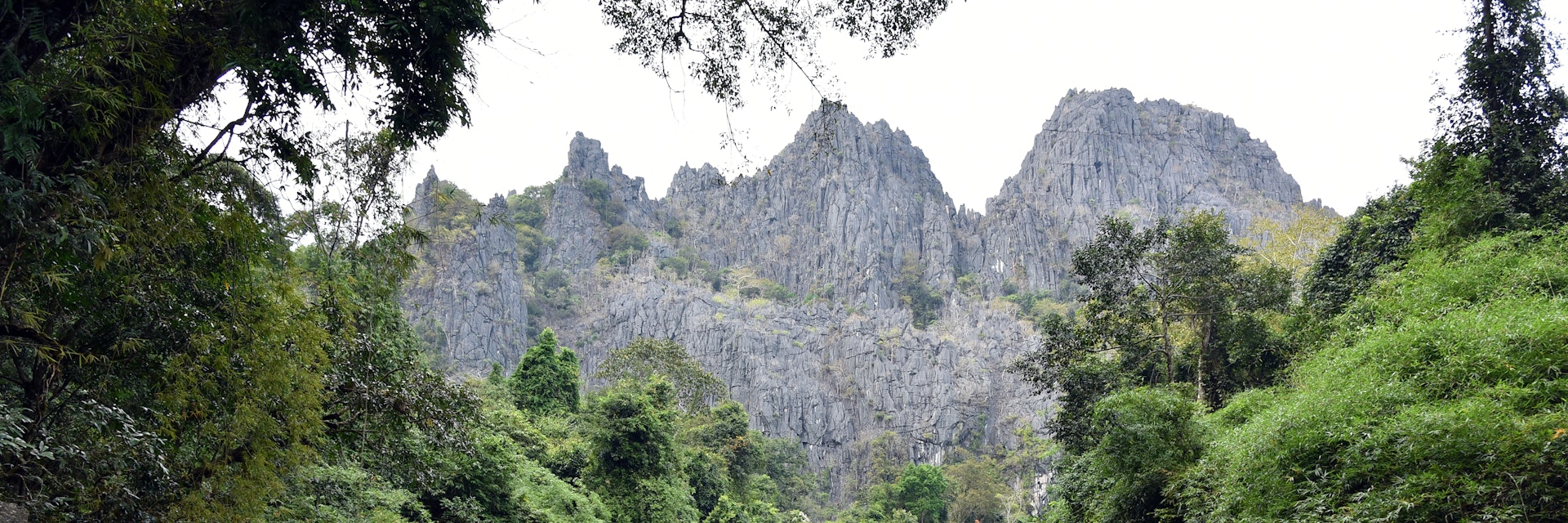
©Vincent Jary/Getty Images
Vivid nature, voluptuous landscapes and a vibrant culture collide with a painful past and optimistic future to make Laos an enigmatic experience for the adventurous.

Attractions
Must-see attractions.
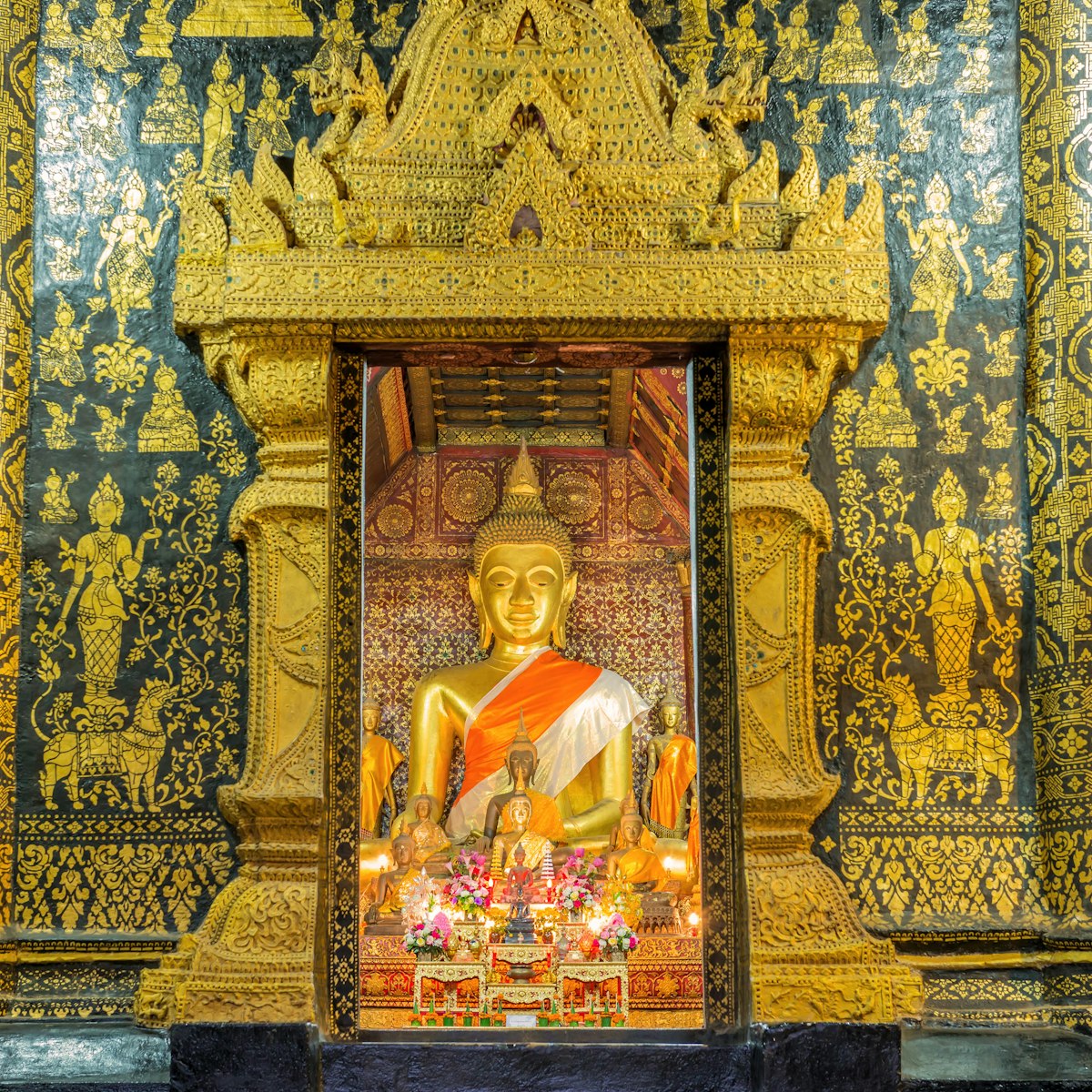
Wat Xieng Thong
Luang Prabang
Luang Prabang's best-known monastery is centred on a 1560 sǐm (ordination hall). Its roofs sweep low to the ground and there's a stunning 'tree of life'…

Vieng Xai Caves
Northern Laos
Joining a truly fascinating 18-point tour is the only way to see Vieng Xai's seven most important war-shelter cave complexes, set in beautiful gardens…
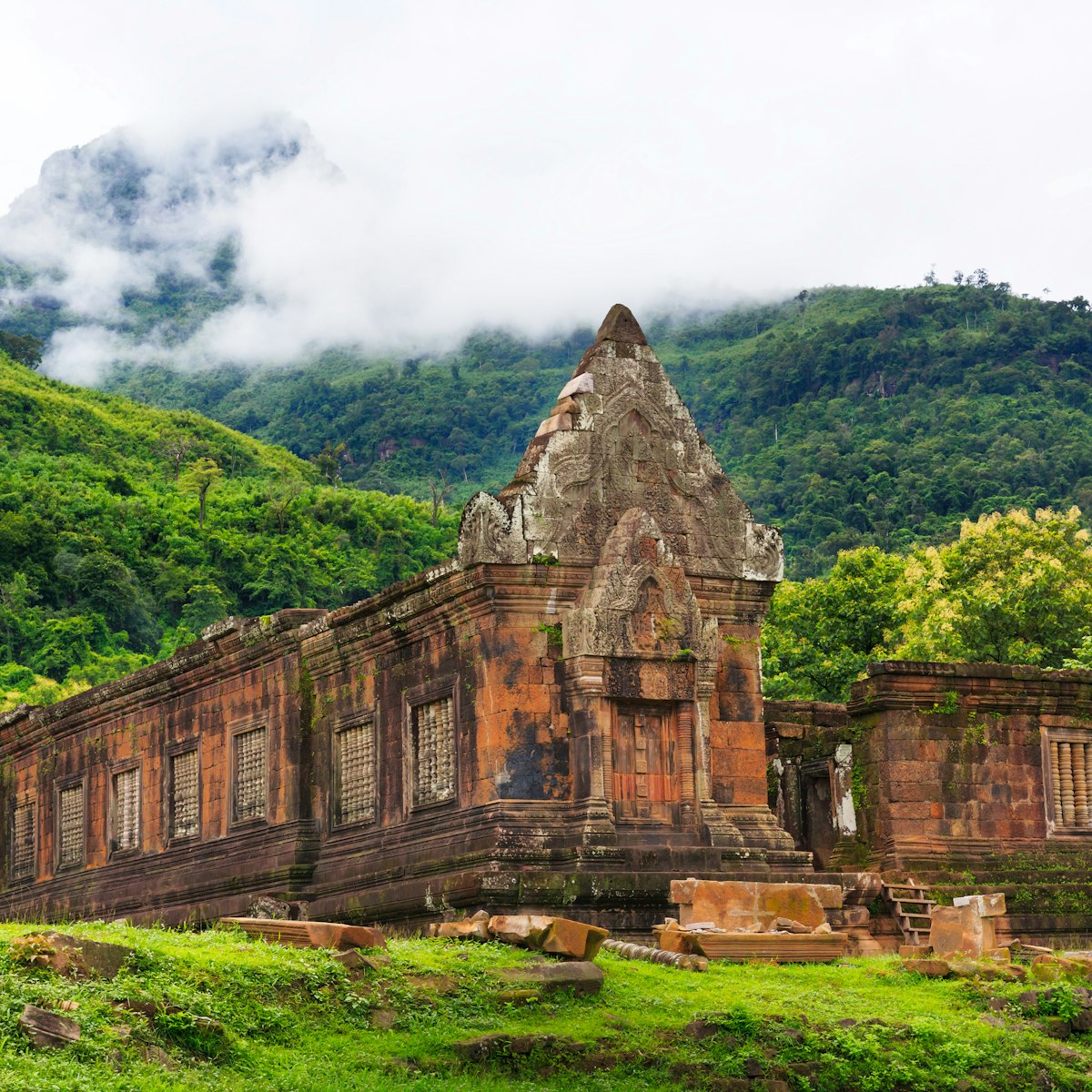
Wat Phu Champasak
Southern Laos
Bucolic Wat Phu sits in graceful decrepitude, and while it lacks the arresting enormity of Angkor in Cambodia, given its few visitors and more dramatic…
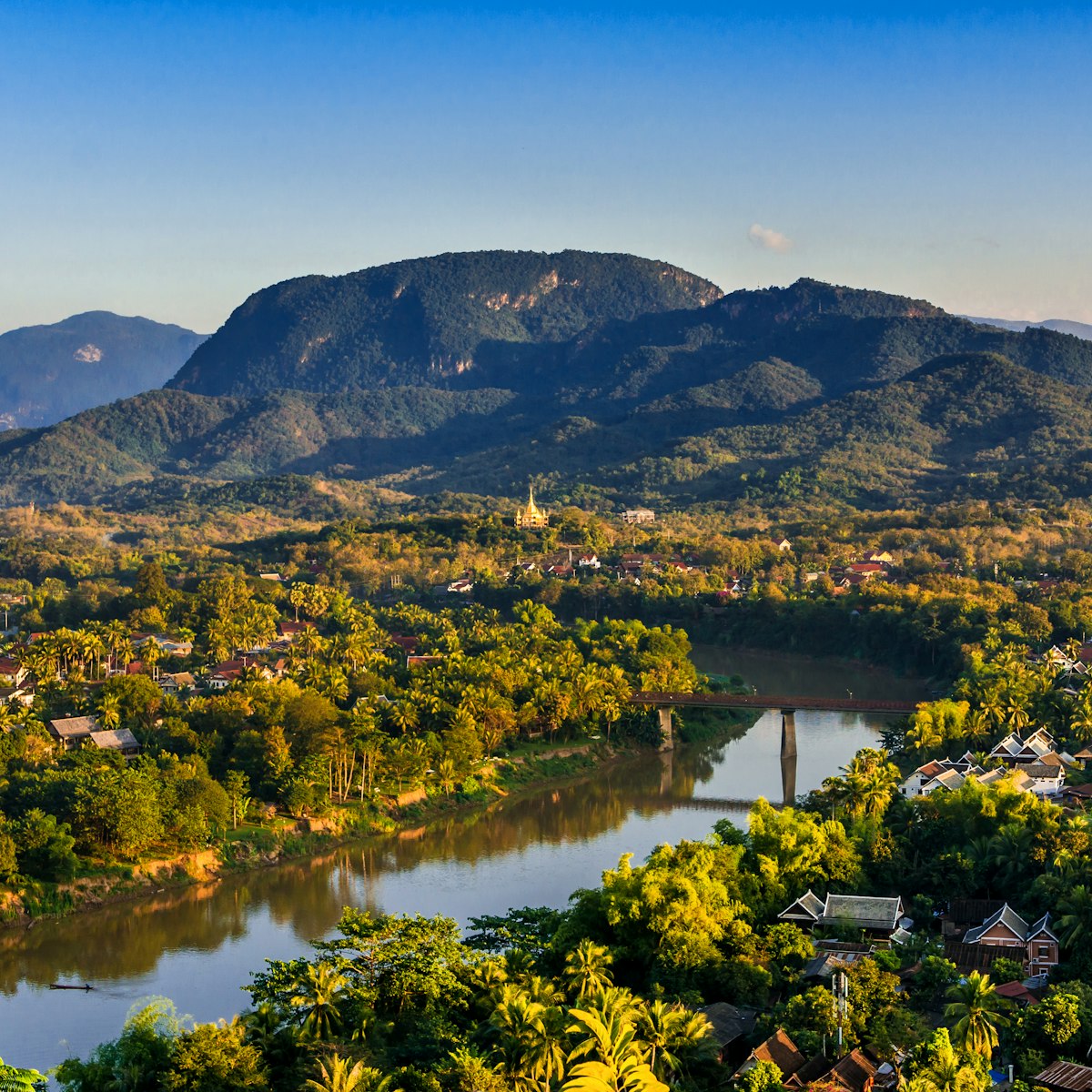
Dominating the old city centre and a favourite with sunset junkies, the 100m-tall Phu Si (prepare your legs for a steep 329-step ascent) is crowned by a…
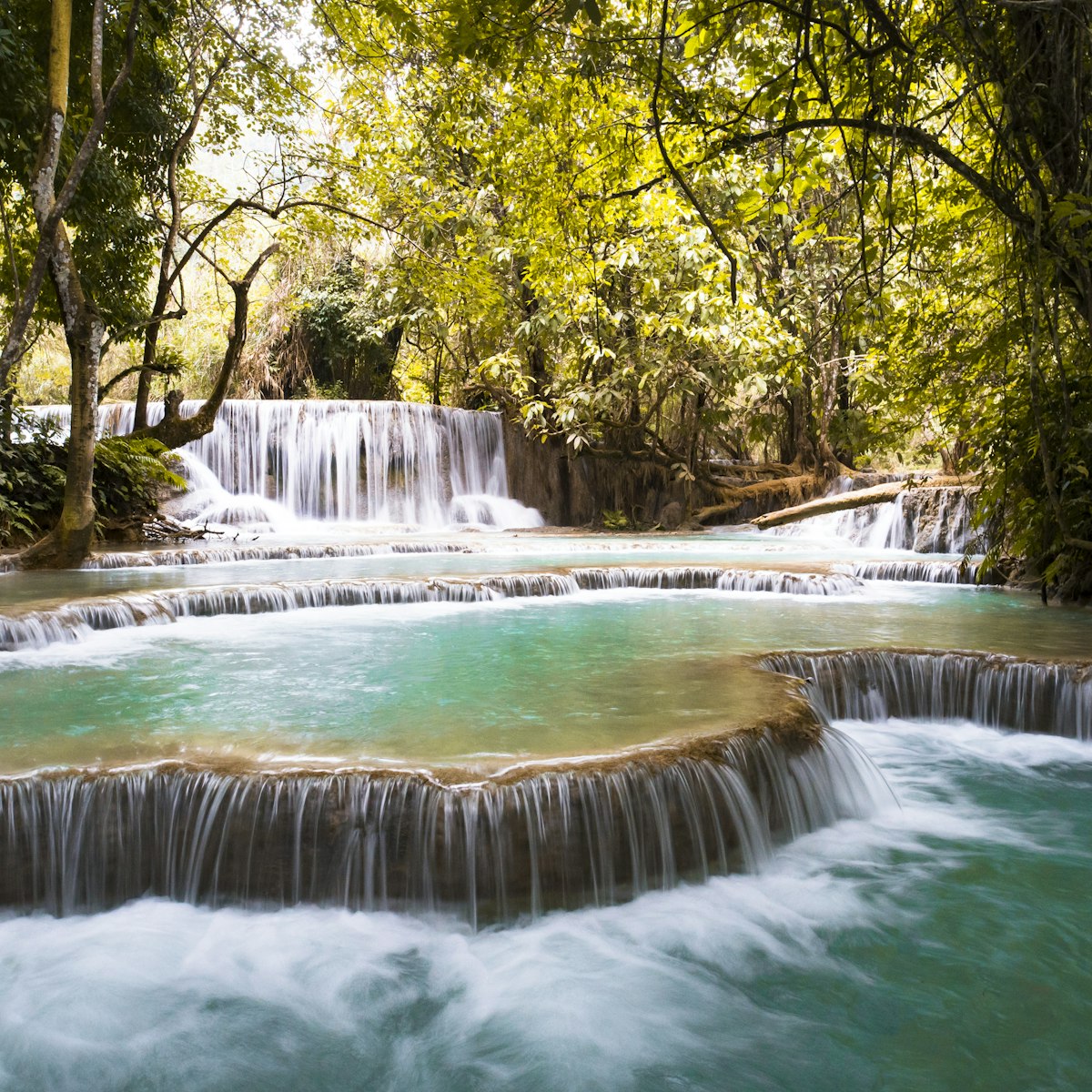
Tat Kuang Si
Thirty kilometres southwest of Luang Prabang, Tat Kuang Si is a many-tiered waterfall tumbling over limestone formations into a series of cool, swimmable…
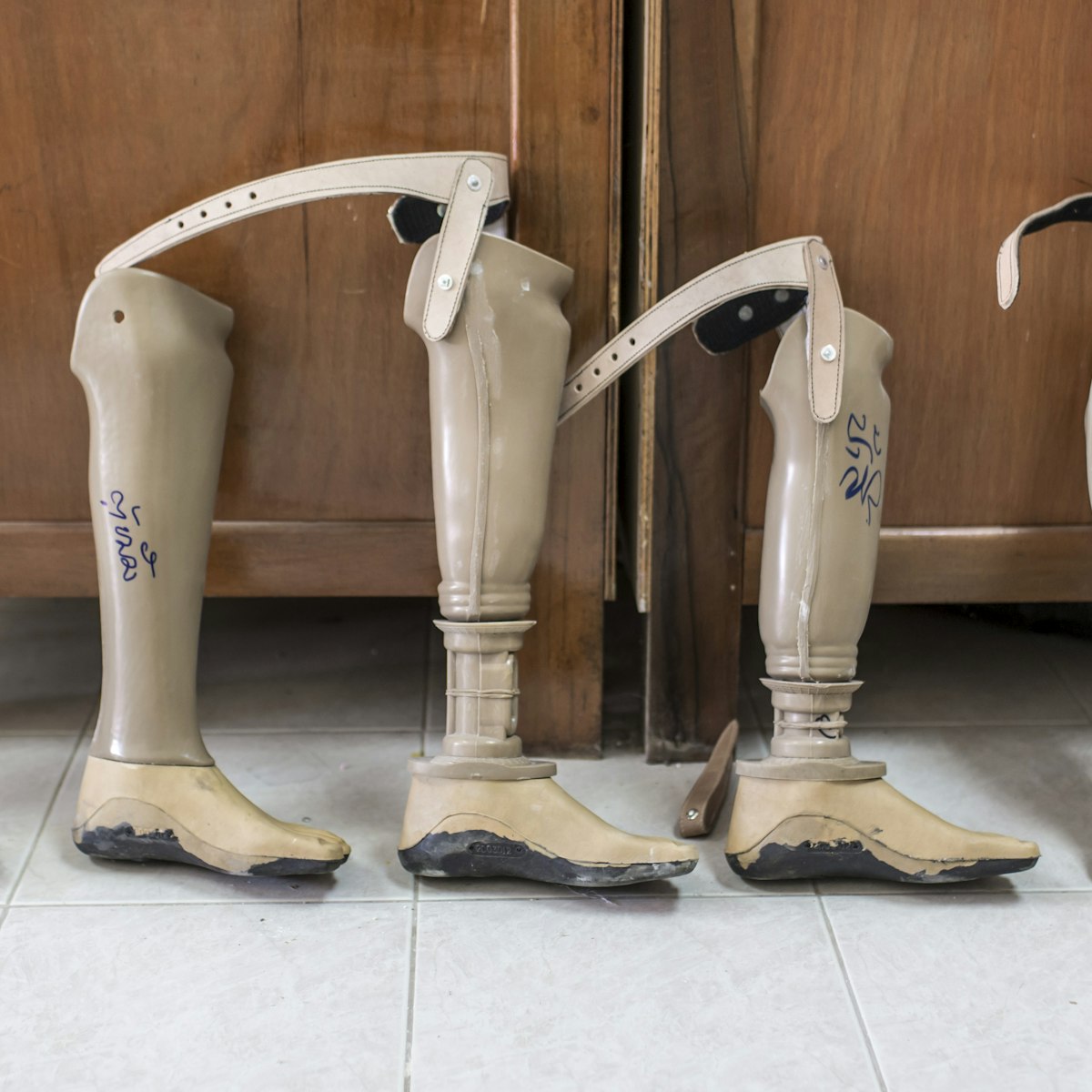
COPE Visitor Centre
Laos has the dubious distinction of being the most bombed country on earth, and although the American War in neighbouring Vietnam ended more than 40 years…
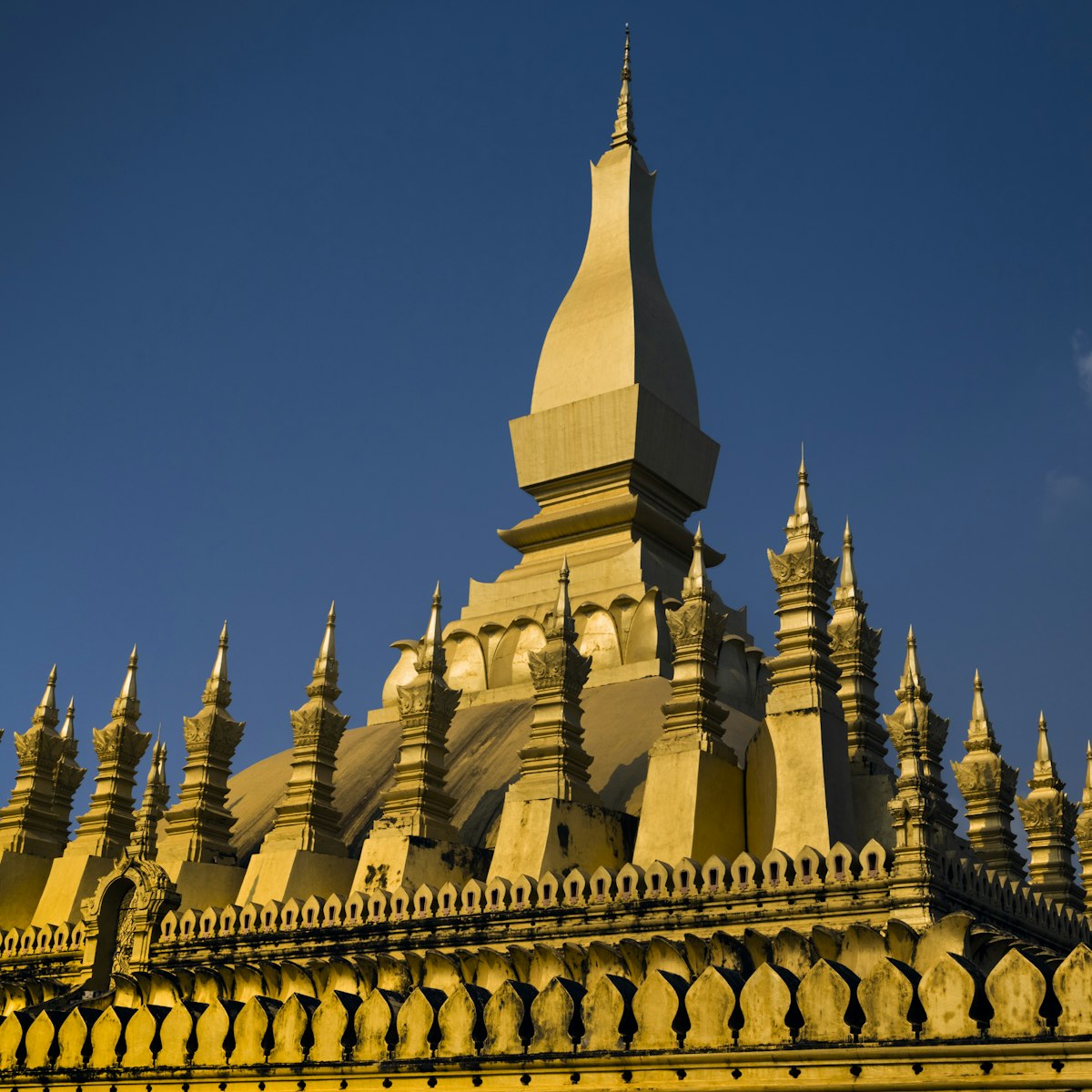
Pha That Luang
Svelte and golden Pha That Luang, located about 4km northeast of the city centre, is the most important national monument in Laos – a symbol of Buddhist…

Khon Phapheng Falls
Si Phan Don
More a glorified set of rapids than a waterfall, but oh, how glorious it is. The largest and by far the most awesome waterfall anywhere along the Mekong,…
Latest stories from Laos
Filter by interest:
- All Interests
- Adventure Travel
- Art & Culture
- Beaches, Coasts & Islands
- Food & Drink
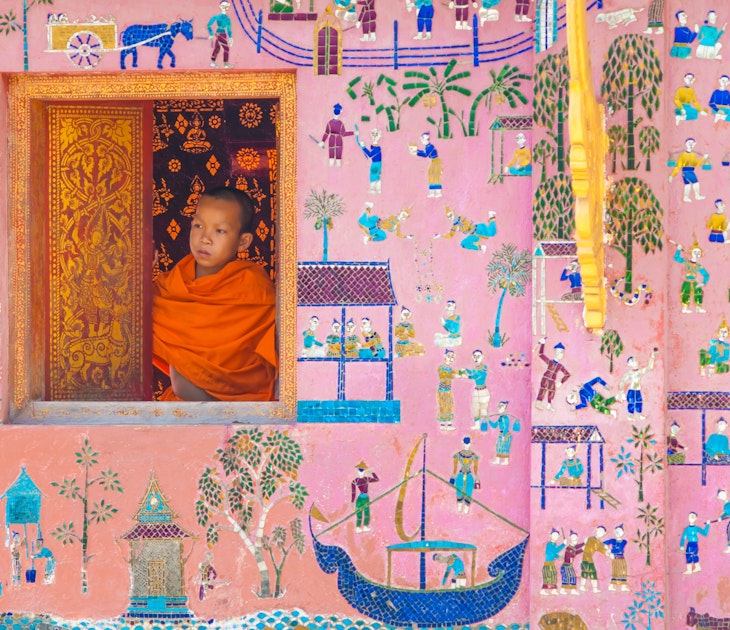
May 12, 2022 • 2 min read
It's one of Southeast Asia's most isolated countries but after more than two years of border closures, Laos has opened up to all international tourists…
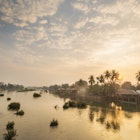
Aug 25, 2017 • 11 min read
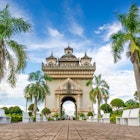
Sep 2, 2016 • 4 min read
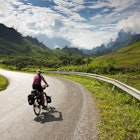
Jan 29, 2016 • 4 min read
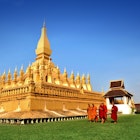
Jan 14, 2016 • 5 min read

Apr 25, 2013 • 5 min read
in partnership with getyourguide
Book popular activities in Laos
Purchase our award-winning guidebooks.
Get to the heart of Laos with one of our in-depth, award-winning guidebooks, covering maps, itineraries, and expert guidance.
Laos and beyond
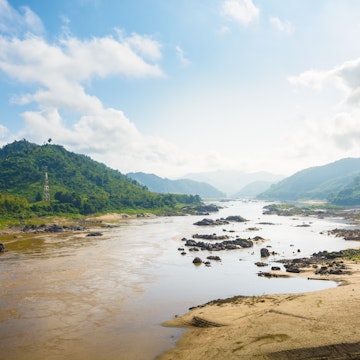
Laos Travel Guide
Saffron-robed monks at outstanding temples, movie-like scenery, and silky blue waterfalls – Laos is made for adventurers.
Best time to visit Laos
Best places to visit in laos, laos travel guide: complete 10-day itinerary, 11 best things to do in luang prabang, 9 best things to do in vang vieng, laos, map of laos, weather in laos.
Laos has a nice tropical climate with two distinct seasons. The dry season runs from mid-October to April, with the latter months being the hottest. The monsoon period (May-Oct) brings rain and humidity, but daily showers are usually short.
Best Travel Insurances
How to plan a trip.
- Find Hotels via Booking.com
- Find Hostels via Hostelworld
- Find a Rental Car via Sunny Cars
- Find Flights to Laos via Skyscanner
- Get a Travel Insurance via Heymondo
- Book Tours & Attractions via GetYourGuide
- Book a Bus/Train/Transfer via 12Go
- Get a Visa via iVisa
- How to pack light for your trip
- How to plan your trip our tips
Why is Laos worth visiting?
As the only landlocked country in Southeast Asia, Laos is famous for its amazing scenery, local villages, and unexplored lands. From stunning mountains and powerful rivers to lush rice paddies and spectacular waterfalls, there are many incredible places to visit in Laos that make it worth a trip.
Is Laos cheap to visit?
Your budget stretches far for travel in Laos, as it remains a cheap country to visit. Although there are some more luxurious options for accommodation and restaurants, you can find delicious food for as low as $2 and stay in vibrant hotels for an average price of $38.
Can I drink tap water in Laos?
While there is enough water supply, it’s often not of high quality for daily use. Because of this, you can get purified water from most convenience stores and supermarkets. For an eco-friendly option, bring a reusable water bottle with a built-in filter system or fill up at restaurants with filtered water.
Do I need a visa for traveling in Laos?
To travel to Laos, you’ll need to apply for an e-visa. This visa permits travelers to stay in Laos for 30 days and normally costs between 45 – 60 USD, depending on your country of residence. The visa is valid for a single entry only, and your passport should be valid for at least 6 months after your journey ends.
What language do they speak in Laos?
Lao, also called Laotian, is the official national language of Laos and one of the Tai languages of Southeast Asia. However, there are more than 80 languages spoken throughout the country. English is also widely spoken, as is French, due to its past, allowing you to connect with the friendly locals.
Do I need travel insurance for Laos?
Travel insurance is your safety net for all your travels, allowing you to enjoy your holiday in Laos with peace of mind. From unexpected medical expenses to lost luggage, it ensures a worry-free trip.
Is Laos safe?
Laos is very safe to travel in, and people are exceptionally friendly. Crime levels are low, although some petty theft does happen. For this reason, carry your valuables with you, especially on buses.
What power plug type does Laos have?
Laos seems to have almost every type of power plug to connect to the electricity: Type A, B, C, E, and F. Type A has two rectangular pins, Type B has two rectangular and one round pin, Type C, E, and F all have round pins but different extra’s (earth clip, etc.). Bring or buy an adapter to charge your devices.
Why do people love Laos?
Its dense forests, stunning plains, and rugged mountains is what brings nature lovers to this corner of the world. But there’s so much more: the ancient cultural attractions and the people make a vacation to Laos an incredible experience.
Travel to Laos
This serene jewel in Southeast Asia is the perfect destination for adventurers, slow travelers, and cultural enthusiasts. From the mystical Plain of Jars full of ancient stories to turquoise pools amidst the lush jungles and cities with saffron-robed monks and elegant temples. With such a pristine landscape and rich culture, there are so many great things to do in Laos . Explore waterfalls, go trekking, or soak up the country’s history together with the locals – Laos is one of the few truly exotic travel destinations in the world.
How to Plan Your Trip to Laos
Use our Laos travel guides to plan your perfect trip! Drive through bright green rice paddies or explore empty jungle roads, only stopping to gaze at the forested cliffs above. In between these luscious northern mountains, you’ll find UNESCO towns like Vang Vieng – the perfect outdoor playground and one of the best things to do in Laos .
Check out our complete 10-day Laos itinerary or browse our informative travel guides.
Best Time to Visit Laos
Each season in Laos comes with a different climate , leaving the choice of the best time to visit up to you.
Dry season (Nov- Feb): The cool and dry season is usually travelers’ favorite time to visit Laos. With temperatures between 20 – 25 degrees Celsius, it’s the most comfortable. Explore the ancient temples of Luang Prabang or cruise down the Mekong River. During the festive period, you’ll also see many boat races and lanterns being lit.
Hot season (March-April): Between the dry and the wet season, temperatures soar above 30 degrees, bringing hot air to many regions. However, the sun colors Laos in beautiful golden hues, making it a good time to come for trekking in the mountainous north.
Wet/green season (May-Oct): The weather in Laos and its scenery change when the wet season comes along. Landscapes transform into a lush, emerald green paradise, and waterfalls are powerful. While daily showers are common, they usually don’t last very long, making it a good time for budget travelers to travel to Laos .
Nature in Laos
As Laos lies landlocked between its neighbors, it doesn’t have any of the iconic Southeast Asia coastline or beaches. However, it boasts many other breathtaking nature scenes, from the mighty Mekong River to limestone peaks and jungle-covered mountains.
The country’s rugged nature makes it the perfect adventure playground. Trek down to powerful waterfalls and swim in beautiful turquoise pools below, or meander through the remote jungles with a guide, exploring protected areas. From verdant rice terraces on the northern mountains to the otherworldly limestone formations, hidden caves, and tranquil lagoons, Laos holds a unique charm when it comes to its natural beauty. This is a land where vibrant flora and fauna thrive.
Food, Culture, and Religion in Laos
The food and culture will quickly leave you in awe of Laos as you make your way through the country. Whether you’re backpacking , touring, or with an organized group, travel here is fulfilling.
Food: The cuisine in Laos is a celebration of fresh ingredients paired with bold flavors. Try their spicy larb, a savory minced meat salad, or a green papaya salad, and pair it with sticky rice (a Lao staple). Coffee is also a popular product in Laos, and the aromatic khao ji blend is perfect to start the day with as you journey through the bustling morning markets.
Culture : Laos’ culture is a treasure trove of beautiful traditions, art, and architecture. Wander through Luang Prabang’s historic streets, where saffron-robed monks collect alms at dawn and explore century-old temples. Alternatively, witness graceful dance ceremonies and participate in one of the country’s well-wishing rituals.
Religion: Buddhism holds a profound place in Laos’ spiritual landscape. Discover serene temples like Wat Phra That Luang (Laos’ national symbol) or Wat Sisaket with thousands of Buddha images. The population’s primary religion is Theravada Buddhism; however, there are also ethnic minority groups like the Hong that form Laos’ cultural tapestry.
Why You Should Travel to Laos
Travel to Laos is full of beautiful moments where time slows, nature reigns, and culture stands at the center. Explore a myriad of natural wonders, from cascading waterfalls to lush landscapes and many jungles. Spend your time in the northern mountains or discover the surreal Pha Tang Karst landscapes.
In between, stop at UNESCO sites like Luang Prabang , where you can witness the timeless beauty of Lao towns and engage in lively well-wishing ceremonies. Stroll through Vientiane’s boulevards, where French architecture meets Buddhist temples, only stopping to indulge in an aromatic Lao coffee.
Besides its incredible playground for adventure seekers, Laotians are very welcoming. Experience their genuine openness as you share a table hunched over a bowl of delicious sticky rice. Their appreciation of slow life adds to your vacation in Laos , creating an unforgettable journey.
Safety and Travel Advice in Laos
Laos is safe to travel in, and people are exceptionally friendly. Nevertheless, it’s always good to be up-to-date about recent events and developments in the country before your Laos vacation .
Natural disasters: There are very few natural disasters in Laos, though the rainy season (May-Oct) does coincide with the typhoon season in Southeast Asia. During this time, mountains are more susceptible to landslides and rivers to flooding. Register your trip with the embassy to receive emergency updates during your trip.
Crime and safety in Laos : While Laos is generally safe, (petty) crime does occur. Minor theft, like bag snatching or pickpocketing, is more common in tourist areas and around ATMs. For this reason, carry your valuables with you, especially when traveling on buses, as there have been cases of tourists having things taken from their bags. Like any destination, we recommend avoiding isolated areas at night and sticking to well-lit spots with more people.
Learn more about travel safety
Landmines: Due to Laos’ history, there are still unexploded bombs in the countryside. Because of this, it’s absolutely essential to always stay on the paths when hiking and never pick up any metal objects. If you’re trekking, go with a guide. The risk is higher after landslides during the monsoon season.
Traffic: Road travel in Laos can be challenging. Roads and vehicles are often in poor condition, especially during the rainy season, and traffic regulations aren’t always enforced. Try traveling only during the day, wear a helmet (often have to buy one), and ensure you have travel insurance.
Outdoor activities: If you’re doing any tubing, climbing, or zip-lining on your holiday in Laos , always exercise caution and consider your safety. Though popular, travel on the Mekong River can be dangerous due to low water levels and sandbanks. Only undertake adventure sports with a well-established and reputable company that has insurance.
Travel Insurance: One of the things we always recommend for your trip to Laos is getting travel insurance. Whether it’s lost luggage or unforeseen accidents, travel insurance gives you peace of mind. This ensures you have a smoother and worry-free experience.
Check out these best travel insurances
Travel Guide Laos
Book your individual trip , stress-free with local travel experts
- roughguides.com
- Travel guide
- Itineraries
- Local Experts
- Travel Advice
- Accommodation
Plan your tailor-made trip with a local expert
Book securely with money-back guarantee
Travel stress-free with local assistance and 24/7 support
Often overlooked in favour of its better-known neighbours, landlocked Laos remains one of Southeast Asia’s most beguiling destinations. Caught in the middle of the two Indochina wars and long isolated from the rest of the world, the country retains a slow, rather old-fashioned charm, and its people – incredibly laidback and friendly, even by Asian standards – are undoubtedly one of the highlights of any visit.
Facts about Laos
Where to go in laos, outdoor activities in laos, morning markets, wat is that, tailor-made travel itineraries for laos, created by local experts.

22 days / from 4799 USD
The Ultimate Southeast Asia Grand Tour
Explore the highlights of four countries in a bit over 3 weeks: Halong Bay & the Mekong Delta in Vietnam combined with the cities Hanoi and Ho Chi Minh City. Proceed to Cambodia with Angkor Wat before watching the monks in Luang Prabang/Laos. Your trip ends in Thailand with elephants and Bangkok.

6 days / from 1550 USD
Historical Laos
One of Southeast Asia’s lesser-known countries, Laos is definitely off the beaten track, but it has retained its culture, charm and traditional village life, wild jungle and stunning countryside. Come here for tradition and mystery and a unique adventure.

21 days / from 4545 USD
Impressions of Vietnam, Cambodia and Laos
Start and end your trip in Ho Chi Minh City and visit highlights such as the Mekong Delta, Phnom Penh with the Killing Fields, Angkor Wat, the historic city of Luang Prabang in Laos before heading back to Vietnam - Hanoi, Halong Bay and Hoi An await.
Laos’s lifeline is the Mekong River, which runs the length of the country, at times bisecting it and at others serving as a boundary with Thailand; the rugged Annamite Mountains historically have acted as a buffer against Vietnam, with which Laos shares its eastern border. Most people visit the country as part of a wider trip in the region, often entering from Thailand and following the Mekong further south. However, Laos alone rewards further exploration, and with a little more time it’s not hard to feel like you’re visiting places where few Westerners venture. Stretching from the forest-clad mountains of the north to the islands of the far south, there’s enough here to keep you occupied for weeks, and still feel as though you’d barely scratched the surface.
For such a small country, Laos is surprisingly diverse in terms of its people. Colourfully dressed hill tribes populate the higher elevations, while in the lowland river valleys, coconut palms sway over the Buddhist monasteries of the ethnic Lao. The country also retains some of the French influence it absorbed during colonial days: the familiar smell of freshly baked bread and coffee mingles with exotic local aromas in morning markets, and many of the old shophouses of its larger towns now (appropriately) house French restaurants.
The effects of the wars, and of its communist government, are unmistakable – it remains completely inadvisable to strike out into the countryside without following paths for fear of UXO (unexploded ordnance) – and the country remains heavily dependent on its neighbours for all manner of products; indeed in some parts of the country, the local markets stock more Chinese and Vietnamese goods than Lao. However, whether you’re riding through the countryside on a rickety old bus crammed with sacks of rice, more people than seats, and blaring tinny Lao pop music, leisurely sailing down the Mekong past staggeringly beautiful scenery, or being dragged by a stranger to celebrate a birth over too much Beer Lao and lào-láo , it’s hard not to be won over by this utterly fascinating country and its people.
- The Lao People’s Democratic Republic, whose capital is Vientiane, is Southeast Asia’s only landlocked country. Modern Laos covers more than 236,000 square kilometres, yet has a population of just under 7 million.
- A constitutional monarchy until 1976, Laos is today a one-party dictatorship and one of the world’s last official communist states. It is also one of the world’s poorest countries, heavily reliant on aid.
- Life expectancy is a rather paltry 57 years, and there’s a young population, with the average age just 19.5 years.
- Lowland Lao (Lao Loum) comprise approximately seventy percent of the population, upland Lao (Lao Theung) and highland Lao (Lao Soung) roughly twenty and ten percent respectively; within these broad definitions, there are many smaller divisions. Chinese and Vietnamese are a small but economically significant portion of the population.
- The national language is Lao, a tonal language closely related to Thai, although the written scripts differ. English is the most spoken European language.
- Laos is a predominately Buddhist country and follows the Theravadan school of Buddhism, in common with neighbouring Thailand, Burma and Cambodia. Around thirty percent of the population, particularly those in the highlands, follow animist beliefs.
Set on a broad curve of the Mekong, Vientiane is perhaps Southeast Asia’s most modest capital city. Yet, although lacking the buzz of Ho Chi Minh City or Bangkok, Laos’s capital has been transformed since the 1990s, with a string of cosmopolitan restaurants and cafés to complement its charming rows of pale yellow French–Indochinese shophouses. Robbed of its more splendid temples in battles with Siam long ago, Vientiane is more a place for adjusting to the pace of Lao life, and indulging in herbal saunas and sunset drinks on the banks of the Mekong, than one for breakneck tours of monuments and museums. Few tourists passing through the capital miss a chance for a half-day journey out to Xieng Khuan, its riverside meadow filled with mammoth religious statues, one of Laos’s most arresting and bizarre sights.

From Vientiane, it makes sense to head north to Vang Vieng, a town set in a landscape of glimmering green paddies and sawtoothed karst hills. A great spot for caving, kayaking, rock climbing and long walks in the countryside, the town is best known for its wild tubing scene, and is undoubtedly the country’s party capital for young backpackers. From here the mountainous old Royal Road to Luang Prabang rollercoasters through some of Laos’s most stunning scenery. The more intrepid can indulge in a road-and-river expedition through Laos’s northwestern frontier, stopping off in the remote outpost of Sayaboury, home to a large portion of the country’s diminishing elephant population.
Despite the ravages of time, the gilded temples and weathered French–Indochinese shophouses of tiny, cultured Luang Prabang possess a spellbinding majesty that make this Laos’s most enticing destination. Though increasingly touristy, the dusty side streets, Mekong views and quiet mornings still lend the city plenty of charm. Most visitors combine a stay here with a couple of day-trips, to the sacred Pak Ou Caves, two riverside grottoes brimming with thousands of Buddha images, and to beautiful Kouang Si waterfall, the perfect spot for a refreshing dip on a hot day.
A few hours north up the emerald Nam Ou River from Luang Prabang is the quiet town of Nong Khiaw, picturesquely surrounded by towering limestone peaks and a great base for trekking and kayaking in the region. Just a little further up the river, and only accessible by boat, Muang Ngoi is a popular travellers’ spot, where it’s hard to drag yourself away from the temptation of spending your days soaking up the views from a hammock. Following the river even further north is one of the greatest highlights of a trip to Laos, passing through stunning scenery on resolutely local boats to get to Phongsali, from which you can explore further into the isolated far north, or join an overnight trek to local hill-tribe villages.
Improved roads means that it’s now a lot easier to explore the far north, an often spectacular region that is home to a patchwork of upland tribal groups. Luang Namtha and the easy-going village of Muang Sing are both centres for treks to nearby hill-tribe villages, while the former also offers kayaking opportunities. Downriver from here is Houayxai, on the Thai border, from where you can join a slow boat down the Mekong for the picturesque journey south to Luang Prabang.
Lost in the misty mountains of the far northeast, Hua Phan province was the nerve centre of communist Laos during the Second Indochina War, and remains well removed from the Mekong Valley centres of lowland Lao life. The provincial capital, Sam Neua, has a resolutely Vietnamese feel (hardly surprising when you consider its proximity to the border), and though it has a rather limited tourist infrastructure, there’s a certain charm about the place once you dig a little deeper. The main reason for a stay here is to visit Vieng Xai, where the communist Pathet Lao directed their resistance from deep within a vast cave complex, and where the last Lao king was exiled until his untimely demise. South along Route 6 from Hua Phan is Xieng Khuang province, the heartland of Laos’s Hmong population. Phonsavan, a dusty rather nondescript town, is the starting point for trips out to the mystical Plain of Jars.
To the south, the tail of Laos is squeezed between the formidable Annamite Mountains to the east and the Mekong River as it barrels towards Cambodia. Thakhek is a good base from which to visit the Mahaxai Caves and Khammouane Limestone NBCA, the highlight of which is Tham Lot Kong Lo, an underground river that can be navigated by canoe. Genial Savannakhet is the south’s most famous town, almost as culturally Vietnamese as it is Lao, a pleasant urban retreat with an architectural charm second only to Luang Prabang. The cool and fertile Bolaven Plateau, where most of Laos’s coffee is grown, makes a refreshing stop during the hot season, not least to try a cup of the famous brew. To the southwest lies diminutive Champasak, with its red-dirt streets and princely villas. The ruins of Wat Phou, the greatest of the Khmer temples outside Cambodia, perch on a forested hilltop nearby.
Anchoring the tail of Laos, the countless river islands of Si Phan Don lie scattered across the Mekong, swollen to 14km from bank to bank, all the way to the Cambodian border. One of the most significant wetlands in the country, Si Phan Don is the perfect spot to while away lazy days, and harbours scores of long-established fishing communities as well as centuries-old lowland Lao traditions.
Discover more places in Laos

- Luang Prabang Travel Guide
- South central Laos Travel Guide
Laos is one of the better outdoor-adventure destinations in Southeast Asia: there are excellent trekking opportunities, vast cave systems to be explored and crashing whitewater rivers to be rafted. With the emergence of a number of specialized travel companies offering inexpensive, organized, adventure tours in previously remote reaches, it’s now easier than ever to experience the wild side of Laos.
Over seventy percent of the country comprises high terrain, with chains of mountains reaching heights of over 2800m running its entire length. Covering many of these ranges are expanses of virgin rainforest. And from these highlands run steep, narrow valleys through which rivers rush down from the mountain heights to join the “Mother of Waters”, the mighty Mekong River, which flows the entire length of Laos.
The easiest and most popular adventure sport in Laos is trekking, with new routes opening up across the country all the time. Trekking is rapidly becoming a major money-earner for Laos, with a range of one- to five-day treks (usually with an environmentally conscious twist) attracting visitors from around the world.
The far north has mountain scenery, forest areas and colourful ethnic hill tribes living in traditional villages. There are excellent tourist facilities available in many northern towns, and Guide Service Offices are gradually being opened throughout the north to support tourists who want to take part in guided treks that are both environmentally friendly and have a low impact on the local peoples.
For visitors interested in hill tribes and organized trekking, the best towns to head for are Luang Namtha, Muang Sing, Luang Prabang and Vang Vieng, all of which have developed programmes for travellers wanting to make a series of day-trips based out of town or take part in multi-day treks involving camping and village stays.
If you want to take a more independent, DIY approach, other towns highly suitable for independent trekking opportunities using self-hired local guides include Muang Long, Xieng Kok, Houayxai, Vieng Phoukha, Muang Khoua and Nong Khiaw, all of which have guesthouses and are close to tribal areas.
In South Central Laos, new companies have been set up to allow visitors to discover sacred lakes, trek through ancient forests and interact with diverse local tribes. The tours have been built to foster development and improve the lives of local people without destroying the region’s natural beauty.
NBCAs and eco-tours
A handful of Lao companies organize eco-tours to wilderness areas featuring rare and exotic flora and fauna. Here, nature lovers and birdwatchers will find some of the rarest species on the planet and vast forest canopies. Although Laos does not have any national parks in the Western sense, since 1993 the government has established twenty National Biodiversity Conservation Areas (NBCAs), many still with villagers and hill tribes living within their boundaries. Unfortunately, though NBCA status means government recognition of their biodiversity, this status has not conferred any real protection (see Southern Laos).
The NBCAs are scattered around the country, often in remote border areas without roads. While many of the parks are inaccessible short of mounting a professional expedition, several have been developed for eco-tourism and have visitor centres and guided walks. The best developed NBCAs for tourists are Phou Khao Khouay, Nam Ha and Phou Hin Poun, all of which can be reached by road.
Watersports
While most river-journey enthusiasts are satisfied with a slow boat down the Mekong between Houayxai and Luang Prabang, many opportunities exist for exploring Laos’s faster waterways. Several companies offer whitewater-rafting trips out of Luang Prabang on a number of northern rivers, including the Nam Ou, the Nam Xuang and the Nam Ming.
Even more popular are river-kayaking adventures ranging from easy day-trips for beginners to multi-day adventures down rivers with grade 5 rapids. Professional guided kayaking tours are currently operated on a regular basis on eight northern rivers as well as the Ang Nam Ngum Reservoir (near the capital) and in Si Phan Don. The best bases for kayaking tours are Vientiane, Vang Vieng, Luang Prabang and Luang Namtha. Another fantastic region for kayaking is the Khammouane Limestone NBCA. Among other scenic wonders, this NBCA features a 7km-long natural river-tunnel through the heart of a mountain, and is becoming popular for organized tours out of Vientiane.
Caves and rock climbing
With its great forests of limestone karst scenery receding into the distance like an image in a Chinese scroll painting, Laos is a great destination for cave exploring, spelunking and rock-climbing. Prime areas for limestone karst scenery in Laos include Vang Vieng, Kasi, Thakhet and Vieng Xai. For most tourists, cave exploring is limited to climbing up to and wandering around in caves that are fairly touristy and have clearly defined pathways. Serious spelunkers can find vast cave and tunnel systems to explore in the Khammouane Limestone NBCA and the Hin Nam No NBCA, but should seek local permission before launching any major expeditions as many caves have yet to have archeological surveys done. With so many awesome unclimbed and unnamed peaks, rock climbing is one sport that seems to have a huge future in Laos. At present the sport is still in its infancy, but new routes continue to be opened up around Vang Vieng.
Mountain biking
With some of the best untamed scenery in Southeast Asia, many unpaved roads, and little traffic, Laos is becoming a very hot destination for cross-country mountain-bike touring. A lot of independent travellers do self-organized mountain-bike touring in northern Laos, bringing their bikes with them from home. Route 13 from Luang Prabang to Vientiane seems to be the most popular route, but be warned that despite the beautiful scenery, the route is also extremely mountainous, crossing several large ranges before reaching the Vientiane Plain. There are much better routes in Houa Phan and Xieng Khuang provinces where you’ll find fantastic landscapes, plenty of remote villages and paved roads with very few vehicles on them.
It’s a good idea to plan carefully. What appear to be very short distances on the map can often take many hours, even in a vehicle. One good thing about bicycle touring in Laos is that should things get too difficult, you can always flag down a passing sawngthaew and throw the bike on the roof. Another alternative is to join an organized cycling tour. There are plenty to choose from but London-based Red Spokes (t020/7502 7252, www.redspokes.co.uk)runs a popular two-week tour that takes in Luang Prabang, Vang Vieng and Vientiane, as well as some rural stretches with spectacular scenery.
Boules and blood sports
One of the quirkiest legacies of French colonial rule is surely petang – a form of boules you’ll see being played in dusty front yards and side streets right around the country.
Like boules, the aim is to throw a small wooden ball, or cochonnet, into the centre of a hard gravel court, and then take it in turns to toss larger metal balls towards it. Players are awarded a point for each time their ball lands nearer to the cochonnet than their opponent’s, and the game ends when one of the players scores thirteen points.
Official rules state petang should be played in teams of two or three, but in practice it’s usually a casual affair, giving people the chance to chat and while away an afternoon.
Team sports aren’t played too often in Laos, simply because equipment is prohibitively expensive. The honourable exception is kataw. Played with a grapefruit-sized woven wicker ball, it‘s thought to have originated in the Malay Archipelago, but is also quite popular in Thailand. Kataw is a hands-free hotchpotch of volleyball, football and tennis, played both with and without a net. Players have to use their feet, legs, chests and heads to keep the ball aloft, and the acrobatics involved are simply astounding. Games are played just about anywhere, but are commonly seen in schoolyards or in monastery grounds.
Another sport you might encounter in Laos is Muay Lao, also known as Lao boxing, which sees fighters striking each other with their fists, knees, elbows and feet. The sport is essentially the same as Muay Thai kickboxing, Thailand’s national sport, but in Laos professional bouts are held fairly infrequently.
As with the rest of Southeast Asia, cockfighting is a celebrated diversion in Laos – no surprise, as the blood sport originated in this region. Betting is, of course, the whole point. Cockfights take place on Sundays and the local cockpit can usually be found by wandering around and listening for the exuberant cheers of the spectators. Unlike in some Southeast Asian countries, knives are not attached to the rooster’s legs in Laos, which means that cockfights last much longer and the birds don’t usually die in the ring.
Another sport that relies on a wager to sharpen excitement is rhinoceros beetle fighting. Although it is difficult to say just how far back the tradition of beetle fighting goes, it is known to be popular among ethnic Tai peoples from the Shan States to northern Vietnam. The walnut-sized beetles hiss alarmingly when angered and it doesn’t require much goading to get them to do battle. Pincer-like horns are used by the beetles to seize and lift an opponent, and the fight is considered finished when one of the two beetles breaks and runs. The fighting season is during the rains when the insects breed. They are sometimes peddled in markets tethered to pieces of sugar cane.
Markets remain a mainstay of daily life in Laos, crammed full of stalls selling everything from pigs’ heads, congealed blood and pungent pa dàek to bamboo baskets for sticky rice and imported toiletries from Vietnam. They’re also a great place for a quick meal – even in the smallest you’ll be able to find someone selling fõe (Vietnamese-style noodles) – though you’ll generally need to get there early to see the best of them.
The wat , or Buddhist monastery , is the centrepiece of most villages populated by ethnic Lao. A contingent of monks and novices lives in each wat, providing the laypeople with an outlet for merit-making . The wat also serves as a hub for social gatherings and, during annual festivals and Buddhist holy days, a venue for entertainment.
Sometimes referred to as a “temple” in English, a wat is actually composed of a number of religious and secular structures, some of which could also be described as a temple. The sim is usually the grandest structure in the monastery grounds, as it houses the monastery’s principal Buddha images, as well as being the place where monks are ordained. The that , or stupa , is generally a pyramid or bell-shaped structure which contains holy relics, usually a cache of small Buddhas. Occasionally, a that will be the reputed repository of a splinter of bone belonging to the historic Buddha himself, while miniature stupas, or that kaduk , contain the ashes of deceased adherents. The haw tai is a solid structure, usually raised high off the ground, for storing palm-leaf manuscripts, and kuti are monks’ quarters. Because the latter two buildings are not considered as important as other religious structures in the monastery grounds, they are not as frequently restored, and are thus most likely to exude that “timeless Asia” charm. Minor buildings sometimes found at a wat include a bell tower and a sala , or open-air pavilion. Many monasteries also have a venerable specimen of a bodhi ( Ficus religiosa ), a wonderfully shady tree of spade-shaped leaves that is said to have sheltered the Buddha while he meditated his way to enlightenment.
Because the wat and resident monks depend on adherents for support, the extravagance of a monastery’s decoration is directly related to the amount of cash flow in the host village or town. In poor villages, the wat may consist of just a sim , which will be a large but simple hut-like structure, raised on stilts without any ornamentation. The only clue to the outsider that this is a monastery will be the freshly laundered monks’ robes hanging out to dry alongside a piece of junk metal or war scrap, such as an old artillery-shell casing, which when struck serves as a bell to wake the monks or call them to assemble.
Travel advice for Laos
From travel safety to visa requirements, discover the best tips for traveling to Laos
- Visa and entry requirements Laos
- Eating and drinking in Laos
- How to get to Laos
- Getting around Laos: Transportation Tips
- Shopping tips for Laos
- Travel Tips Laos for planning and on the go
- Best time to visit Laos
The Rough Guides to Laos and related travel guides
In-depth, easy-to-use travel guides filled with expert advice.

Find even more inspiration here

Planning your own trip? Prepare for your trip
Use Rough Guides' trusted partners for great rates
written by Rough Guides Editors
updated 26.04.2021
Ready to travel and discover Laos?
Get support from our local experts for stress-free planning & worry-free travels.
- Where to stay
- Travel advice
Laos Travel Guide
Last updated on January 21, 2024 by Shannon
Snuggly situated between the neighboring countries of China, Vietnam, Cambodia, Thailand, and Myanmar, is one of Southeast Asia’s most underrated places to visit.
A landlocked country often overlooked for the shiny beaches of Thailand , the renown cuisine in Vietnam , or the ancient temples in Cambodia , traveling through Laos remains among my favorite travel experiences in the world.
When you plan a trip to Laos, there are a few things you have to see, and then a number of places you can go that are fully led by your own interests. Laos offers diverse landscapes, from lush jungles and rugged mountains to sprawling plains, and, of course, the enchanting Mekong Delta.
It features a fair number of ancient temples, but really there are likely other reasons you’re planning to backpack through Laos. Perhaps you want to soak in the beauty of the Nam Song River by rock climbing or tubing trip in Vang Vieng , swing from the ziplines at the Gibbon Experience in the Bokeo Nature Reserve, or marvel at the remnants of French colonial architecture in Luang Prabang .
Or maybe you just plan to unwind and be captivated by the unparalleled tranquility of traveling in Laos—it’s the most laid-back and peaceful destination in the region. Reflecting on my own revelatory trip to Laos in 2009, I cannot stress enough the importance of delving deep into this remarkable country, discovering its cultural nuances, witnessing breathtaking sunsets over the Mekong, and simply savoring every moment.
Table of Contents
Laos’ Relevant History, Briefly
Laos, a country that was once recognized as one of Southeast Asia’s largest kingdoms for a span of four centuries, bore the name Lan Xang Hom Khao, which translates to the “Kingdom of a Million Elephants Under White Parasols.” It held a vital position as a bustling center for overland trade. However, due to a period of turmoil, the kingdom of Lan Xang fragmented into three distinct entities: Luang Prabang, Vientiane, and Champasak.
It was not until the conclusion of the 19th century, during the era of French colonial rule, that these kingdoms reunited to establish the present-day nation of Laos.
Laos takes pride in its extensive historical heritage, which transcends the boundaries of antiquity. Remarkably, it houses the oldest recovered human skull, estimated to be approximately 46,000 years old. Furthermore, evidence of stone artifacts from the Ice Age can still be found, alongside captivating relics from various epochs.
Within this tapestry of history lies the intriguing Plain of Jars, an archaeological site of substantial megalithic importance dating back to the Iron Age. Often underestimated by tourists, this is a hidden gem for history enthusiasts and warrants a visit for its exceptional allure.
Essential Information When Visiting Laos
You won’t need a converter when visiting Laos as it uses the 220V/50Hz (North American plug and two-prong round), and when you arrive you can pull a large amount of Lao Kip (LAK) ( current exchange rate ) from the ATM.
If you’re traveling with a good debit card (I swear by Schwab as the best travel debit card that exists), then you should have no problem pulling out cash regularly as you travel around Laos.
Note that many rural areas do not offer an ATM, nor do they readily accept credit cards in all areas, so you should travel with a fair bit of cash when venturing off the tourist travel.
Can You Drink the Water in Laos?
Water in Southeast Asia, in general, is not safe to drink. That is absolutely the case in Laos—you cannot and should not consume the local water. In fact, you should use bottled water to brush your teeth, and you should also steer clear of fresh vegetables unless at a tourist restaurant (note: not a tourist street cart—don’t eat fresh veggie sandwiches from the street cards).
In rural areas especially, use a SteriPen or LifeStraw if you can’t drink bottled water ( here’s why ) and if you’re lax about using sterile water to brush your teeth, be more vigilant if you go off the beaten path.
How to Book Accommodation in Laos
When you’re in Laos, use Agoda as your go-to. Agoda offers accommodation around the world, but its coverage and property reviews are best in SEA. Accommodation in Laos cheap enough that even budget backpackers can often afford a budget guesthouse and private room. That said, Laos has hostels! You can find those listed on Agoda or Booking.com — and Hostelworld covers Laos, too.
If you’re used to using Airbnb or VRBO , these work a bit differently in in Southeast Asia—although you can find private properties for rent, many hotels use it as well. I used Agoda , Booking.com , and a vacation rental site exclusively on my recent three-month Vietnamese backpacking trip and it worked flawlessly. Read these tips that share exactly how I research and book great hotels and guesthouses along my travels.
Is Laos Vegetarian Friendly?
It’s quite easy for vegetarian travelers to find vegetarian food in Laos. The only consideration is that fish or oyster sauce is used in most dishes. I suggest going with the flow; instead of worrying about the fish sauce, just learn some basic Laotian and ask for your food minus the meat and fish itself.
If you do this, you’re completely fine all throughout the country. Rice will always do in a pinch and fresh, gorgeous fruits abound. Try mangosteens if they’re in season when you’re in Laos!
How is the Internet Access in Laos?
Internet access in Laos has significantly improved in recent years, although it still varies depending on the location and infrastructure. In major cities and tourist areas such as Vientiane, Luang Prabang, and Pakse, you’ll find relatively reliable and faster internet connections.
Hotels, restaurants, and nearly all cafes in the touristy areas of Laos offer Wi-Fi access. But don’t arrive in Laos expecting Thailand-level internet speeds—even in urban areas, the internet speed is moderate to slow.
In more remote or rural areas, internet access is even slower and a lot less reliable. That means you may struggle to stream videos or hold video calls outside of a toursity hub. (Nomadic Notes has a fantastic collection of wifi-friendly cafes across many cities in Southeast Asia .)
Where can you find internet in Laos? Look for Wi-Fi hotspots in hotels, guesthouses, and public places. You should also purchase a local SIM card for your smartphone or use mobile data services—this is so cheap that you should get a plan large enough that you can just hotspot yourself and use your mobile data when needed.
What to Read Before Visiting Laos
- Ant Egg Soup: The Adventures Of A Food Tourist In Laos : An entertaining read about a woman tracking down traditional recipes in every remote corner of Laos.
- Another Quiet American: Stories of Life in Laos : An informative and fascinating personal account of contemporary Laos.
- The River’s Tale: A Year on the Mekong : Solidly written travelogue shedding light on the importance of the Mekong to the people of Southeast Asia.
- Lonely Planet : You’re likely not only backpacking in Laos, so if you’re in the north, this guide is good because it features Vietnam, Cambodia, Laos, and Northern Thailand.
Is Laos Safe to visit?
Laos is a pretty safe country in terms of physical violence. However, it’s worth noting that there have been past incidents along Route 13 between Luang Prabang and Vang Vieng related to uprisings among the Hmong community. Stay informed about the current situation in the area before planning your journey along that route.
And like in any touristy area in the world, theft and scams are a possibility. Laos is a poor country and flashing valuables isn’t a great idea. Keep valuable items close to your body, use a cross-body bag to prevent snatch-and-grab incidents (happens surprisingly often as motorbikes whizz by), avoid walking alone late at night while intoxicated, and maintain situational awareness when handling your wallet during transactions.
If you plan to explore Laos independently on a motorbike, it is crucial to be aware of Laos’ unfortunate distinction as the world’s most heavily bombed country per capita ( here’s why ).
To stay safe in Laos, stick to established paths and avoid venturing off-road without the a local guide at your side. And also note that traffic accidents are one of the number one causes of fatalities for travelers abroad—learn the road rules in Laos and stay alert when motorbiking long distances, always wear a helmet and read this piece to truly understand travel safety .
The fact is, while physical violence may not be a major concern, it is worth noting that getting sick from food handling practices is the most likely thing that will jeopardize your safety. Research and familiarize yourself with tips for staying healthy while traveling and read How to Shit Around the World if you’ve never traveled in developing countries before. It provides practical advice for maintaining good health in developing countries.
The sickest I’ve ever been in my life happened in Laos, and quality healthcare didn’t exist there—it’s still likely that you’d need to me medevaced to Thailand if something major happens. For that reason alone, you should absolutely have travel insurance like IMG Patriot —it’s a must.
How to Get to and Around Laos
Most travelers explore the region overland, with Laos as a subsequent stop on the trip, rarely the place their international flight lands. That means you’ll be crossing overland between the countries, likely using long-distance buses, but that varies greatly depending on the border crossing and the topography. You may find “a bus to a boat to a truck” required for even the most “on-the-path” route to and through Laos.
That said, you can also use a budget airline to fly into Vientiane or Luang Prabang from nearby major cities like Siem Reap, Bangkok, Hanoi, and a few others. tances, you’ll find surprisingly cheap flights via the budget airlines, and this can cut significant time off of your travel days. I reliably find great flight deals on Skyscanner or Expedia .
That’s because transportation in Laos has its unique quirks compared to neighboring countries. The transportation infrastructure in Laos is not as extensive or comfortable as in neighboring countries like Thailand or Vietnam, but it gets the job done. And in recent years there are a growing number of affordable “posh” options.
Let’s talk timelines. Road conditions vary in Laos, and traveling set distances usually takes longer than expected—travel is often sluggish. Most Southeast Asian backpackers rely on buses as the primary mode of transportation within the country, both public and private.
Along Route 13—which stretches from Luang Prabang to the Cambodian border via Vientiane and Pakse—there is a consistent flow of buses catering to travelers. Another popular option is taking a two-day boat ride from the Northern Thai border to Luang Prabang, a journey that many consider a quintessential experience in Laos. (This is where you can take the regular boat trip for roughly $35 or splurge on a post boat that serves lunch and stops at various towns along the way for ~$160.)
Regardless of your chosen mode of transportation—be it bus or boat—allow ample time to reach your destination. While there are schedules in place, sometimes buses and boats depart whenever the driver deems it appropriate.
While this trend is changing in recent years, as the infrastructure improves, it’s best to be prepared for delays. Carry something to read , pack snacks, bring a deck of cards, and most importantly, maintain patience and embrace the journey itself.
Once you’re within a city or town in Laos, tuk-tuks and motorcycle taxis are the most common way to get around—that’s if walking or a bicycle isn’t possible.
Pick out accommodation on Booking.com.
This is the only booking platform I use because it rewards you for loyalty, and I regularly score free breakfasts and 15% off my hotel.
How Much Does it Cost to Travel in Laos?
Budgets always vary greatly depending on individual preferences and travel styles. Theoretically you could travel in Laos for as little as $700 for a month, on a very low budget where you’re traveling slowly.
To cover the range of budget to mid-range travel styles, however, backpacking in Laos ranges between $700 and $1,500 per month. Compared to neighboring Thailand, Laos offers a lower daily budget for backpackers, typically around $26 per day .
This is primarily due to its less developed transportation infrastructure, smaller tourism industry, and the overall economy in Laos. So think about it as a range that varies on if it’s a travel day, wander around day, or a day you’re spending on a big activity. With that in mind, your daily expenses as a budget backpacker hits around $20 to $30 most days in Laos.
Let’s talk specifics on where you’re spending your travel budget in Laos. It’s easy to find basic accommodations for around $10 to $15 per night, especially in guesthouses and budget-friendly hostels. A bed in a dorm room though easily run as low as $5, while most regular private rooms without A/C should run well under $20 in any city or town in Laos.
Street food and local eateries provide affordable meal options ranging from $2 to $6 per meal. If you eat in a restaurant, or if you splurge on Western coffeeshops, then your food budget ticks up quickly (think $8 or up for a meal). These baseline costs give a good estimate of why and how your daily budget can come in so low when budget traveling in Laos.
Mid-range travelers who prefer slightly more comfortable accommodations, private rooms in guesthouses or small hotels, and a mix of street food and dining at local restaurants can expect to spend approximately $40 to $50 per day. Half of that goes toward accommodation—an air-conditioned private room is upwards of $18, as high as $35 for a nicer place (this is when traveling as a couple or in a group can really help cut costs).
Even those who prefer more comfortable accommodations, dining at restaurants (as well as street food), and indulging in some splurges can expect to spend around $55 to $70 per day. (Obviously note that true luxury travel exists in Laos, with rooms over $200 a night).
It’s worth noting that in Laos, there are limited opportunities to spend extravagantly, and your money will stretch further compared to other destinations. If you’re avoiding long overland journeys to save time or for comfort, factor in the cost of flights, which can be relatively expensive for entry and exit from Laos.
Although Southeast Asia has several budget airlines, the routes in and out of Vientiane and Luang Prabang are never rock-bottom—use these tips to find cheap flights on your travels .
With all of that said, Laos is a poor country, and tourism dollars are a pivotal part of the Laotian economy. Travelers should support the local economy whenever possible—that means avoiding excessive haggling and choosing locally-run businesses.
Don’t forget to book travel insurance for your trip —a great policy provides coverage in case of medical emergencies, lost or stolen gear, adventure sports riders, and more. I’ve used IMG Global for more than a decade highly recommend it !
What’s the Best Overland Route Through Laos?
Laos is often visited sandwiched between time traveling to other countries, thus your route will entirely depend on your entry point. As a broad generalization, you route through Laos could look something like one of these options, depending how where and how you enter.
Northern Thailand
Enter Laos from Thailand in the far north, through the Chiang Khong/Huay Xai border crossing and either head north by bus to the hill tribe and trekking region of Luang Namtha, or take the two-day slow boat to Luang Prabang .
From Luang Prabang bus to Vang Vieng and onward to Vientiane—then you can either leave back into Thailand, or head south to the 4,000 islands so you can see the endangered Irrawaddy dolphins and easily (ish) exit Laos into Cambodia or southern Thailand. You could also fly onward to Cambodia or Vietnam.
Central Thailand or Vientiane
Enter Laos from Thailand at the Thai–Lao Friendship Bridge and find yourself in Vientiane. From there, you’ll likely have northern Laos in your sights. It’s dead simple to bus to Vang Vieng and onward to Luang Prabang.
From there you have options: a two-day boat ride up the Mekong River to hiking or Northern Thailand, an eight-hour bus ride to trek from Luang Namtha, an off-the-path adventure with a bus ride to Muang Ngoi and pretty Nong Khiaw, or a winding bus ride to Phonsavan to visit the mysterious Plain of Jars (where you can easily exit Laos into Vietnam).
Southern Thailand or Cambodia
Enter southern Laos via a bus from Cambodia or Thailand (both have border crossings). Visit the Champasak Cultural Landscape, a Laos UNESCO site, explore the 4,000 Islands and say hi to the endangered Irrawaddy dolphins, and then prepare for long travel days as you bus into northern Laos. You can easily make it to Vientiane in a couple of days by bus, and then use the recommendations above to explore Northern Laos.
Northern Vietnam
Enter Laos from the east by bus on a pretty rough (but pretty) northern overland route where you’re likely leaving Hanoi or Ninh Bình in Vietnam and heading to Sam Neua in Laos, or you’re leaving Hue, Vietnam bound for Phonsavan. From either of these spots, it’s easy to get to Luang Prabang and pick up the above recommendations.
Southeast Asia
Fly to Laos from pretty much anywhere else in the region into/out of Vientiane or Luang Prabang—flights won’t run every day between every nearby capital, but there are flights to/from Vietnam (Hanoi and Ho Chi Minh City), Cambodia (Siem Reap and Phnom Penh), Thailand (Bangkok and Chiang Mai), and even further afield (like Malaysia, etc.) during certain times of year.
Flights in and out of Laos are often way more expensive than others in the region, so be sure you can swing the cost in your travel budget if you hope to skip the long bus rides. I recommend checking flight prices right now for a rough idea of if and how this fits your travel budget.
Best Foods to Try in Laos
The national dish of Laos is larb (also known as laap ) which is marinated meat or fish prepared with herbs and greens, and can be quite spicy. Some dishes will have a similar profile to those found in Thailand, like spicy green papaya salad (known as t am mak hoong ) and kai yang (grilled chicken). Most dishes will have elements of galangal, lemongrass, and padaek (fish sauce) and are served with sticky rice, which is eaten by hand.
Similar to other Southeast Asian countries, Laos has a strong street food culture. Khao jee is a popular street food, and very similar to banh mì in Vietnam—it’s a baguette sandwich prepared with fresh French-style white bread, fresh vegetables, and some sort of meat. Khao piak sen is also quite delicious—it’s a soup similar to Vietnam’s classic pho .
Note that food sanitation standards in Laos are not up to par with neighboring Thailand, so eating fresh vegetables (like those in the sandwiches) carries a risk for waterborne illnesses.
Watch closely how the locals prepare your food (is it being washed in fresh water, or a communal water bucket, is it out of the sun and changed frequently? Many food issues in Laos (and the rest of Southeast Asia) can be solved when you heed the first rule of street food : Eat where locals eat.
How to Travel Responsibly
Like other countries in Southeast Asia, Laos has some ethical quandaries facing responsible travelers. I recommend you completely skip elephant experiences in Laos (instead save that for Thailand, where there are some great options ).
Laos is also among the more conservative countries in the region, so women should wear tops that cover their shoulders and bottoms to the knees. And the poverty here is very real—every dollar you spend locally and intentionally goes far in helping locals even something simple like medical treatment, which is scarce.
Lastly, the Lao people are quiet and have social rules about excessive public outburst—bargain respectfully.
You should also limit your use of single-use plastic bottles—Laos’ infrastructure is not strong enough to guarantee it won’t just end up floating in the Mekong River. Bring your own bottle and a SteriPen , if possible, and a refillable water bottle so that you can at least buy huge jugs when you’ll be in one spot for a few days and just refill from it.
Positive actions you can take include spending money with local tourism operators, including some fantastic social enterprises operating in Laos . Read our complete guide to Responsible Travel in Southeast Asia .
Book a day tour to maximize your time.
GetYourGuide has a phenomenal range of tours, and they’re affordable too. Maximize your time by booking your must-dos as a tour, and then slot in the rest as time permits.
Best Things to Do in Laos
1. Swim in the Kuang Si Waterfalls (Luang Prabang).
Immerse yourself in the refreshing waters at Kuang Si, a park outside of Luang Prabang filled with beautiful waterfalls and turquoise pools of water open for swimming. Take a tuk-tuk, which can be hired for around 180,000–200,000 kip, which is particularly affordable if you find other travelers keen to experience this day trip outside of the city.
2. Eat all the things.
Laos has a culinary history unique to the country and differing than neighboring Vietnam or Thailand. Although the sanitary conditions are less safe, overall, you can still safely eat a ton of amazing dishes. This guide to food in Laos will get you started, and Mark covers even more essential eats here . Indulge in the unique culinary delights of Laos.
3. Find adventure in Vang Vieng.
Almost every backpacker traveling to Laos is on their way to Vang Vieng to tube down the Nam Song River . You can also rock climb nearby , eat pancakes at the mulberry farm, and generally enjoy the area. Tubing is rite of passage for SEA backpackers and it’s a fun way to spend a day, especially now that it’s not the massive party scene it used to be (it used to be culturally insensitive and dangerous, too).
4. Sleep in a treehouse and listen for Gibbons in the Bokeo forests.
The Gibbon Experience is pricey but so worth it—I did the Classic Gibbon Experience and will remember it forever. The project has done phenomenal conservation work in the Nam Kan National Park and is a solid choice for responsible backpackers in Southeast Asia , nature lovers, and adventure lovers alike. As of 2023, prices for the Gibbon Experience run around €175 for the express package, and €290 and up for the Classic and Honeymoon packages.
5. Visit the enigmatic Plain of Jars.
And near Phonsavan, in central Laos, you’ll need to hire a tuk-tuk to see the enigmatic Plain of Jars, but it is well worth the trip. The jars date back to the Iron Age and are scattered throughout the upland valleys of the Xiangkhoang Plateau. Hire a tuk-tuk or join a tour to explore the different jar sites, and expect to pay around $10-15 for a half-day excursion.
6. Relax in the 4,000 Islands (Si Phan Don).
A gorgeous archipelago located in the Mekong Delta, Si Phan Don is a must see. It’s easily one of the best sites in Southern Laos. You can unwind in the serene beauty of the 4,000 Islands.
Enjoy laid-back island life, witness breathtaking waterfalls like Khone Phapheng, and spot the endangered Irrawaddy dolphins. Access the 4,000 Islands via bus or boat from Pakse, and budget around $20-30 per day for accommodation and meals.
7. Relax and temple-hop in Luang Prabang.
Easily the prettiest city in Southeast Asia, Luang Prabang is a UNESCO World Heritage Site and has a low-slung charm and beauty you can’t stop enjoying. It’s also an easy spot to stop, take a cooking class, sip beers by the Mekong, and enjoy the Lao lifestyle.
Because of the French influence for so many years, the architecture is an intriguing combination of intricate European among the traditional Buddhist temples. You can also find delicious breads and sweets in town (also the French influence), and a general level of infrastructure that makes this a great place to recharge if you’ve been in the region for a while.
The city also has a rich spiritual heritage. Marvel at the exquisite temples, such as Wat Xieng Thong and Wat Mai, and witness the morning alms-giving ceremony.
And if you’re visiting in October or November. witness a traditional boat racing festival (Boun Suang Heua). You’ll have the opportunity to witness the excitement of traditional longboat races on the Mekong River. Join the festive atmosphere, cheer on the teams, and experience the vibrant culture of Laos.
8. Shopping at local markets.
Backpacking Laos is about more than the big sights, it’s about sinking into the country’s fascinating pace of life . Immerse yourself in the vibrant local markets of Laos for an authentic and enriching cultural experience. From morning markets brimming with fresh produce to bustling night markets filled with handicrafts and local delicacies, these markets offer a glimpse into the country’s diverse traditions and flavors.
Discover the bustling morning market in Luang Prabang, where locals gather to purchase an array of fresh ingredients and exotic fruits. Engage with the friendly vendors, sample local snacks, and soak in the lively atmosphere.
In major towns like Vientiane and Luang Prabang, explore the vibrant night markets that come alive with rows of stalls showcasing traditional textiles, wooden crafts, silver jewelry, and pottery. Bargain for unique treasures while directly supporting local artisans and communities.
Shopping at these markets allows you to take home authentic souvenirs while contributing to the preservation of traditional crafts and sustainable livelihoods. Remember to bring cash in small denominations and embrace the art of negotiation, respecting local customs and avoiding restricted items.
9. Boat the Mekong River.
Rivers are an essential part of life in Laos —be sure you enjoy the slice-of-Laos seen from a river boat at least once on your trip. If you’re not up for the two-day boat between Thailand’s border and Luang Prabang, consider something like a day trip to the Pak Ou Caves to still experience the magic of life along the banks of the Mekong. Spending time on the Mekong is an essential thing to do in Laos. It’s the best way to experience the tranquility of rural landscapes, observe traditional riverbank villages, and gain insights into local life.
10. Trek through the lush landscapes of Luang Namtha.
Head to Luang Namtha, located in the north of Laos, for an unforgettable experience. This region is renowned for its ethnic diversity and stunning natural landscapes, making it an ideal destination for an immersive adventure.
Join a guided trekking tour that will take you through lush jungles, cascading waterfalls, and remote hill tribe villages. Immerse yourself in the daily life of ethnic communities such as the Akha, Yao, and Lanten tribes, learning about their customs, traditions, and traditional crafts. Participate in activities like rice planting, handicraft making, and cooking traditional meals.
During the trek, you’ll have the opportunity to stay overnight in a traditional hill tribe village, experiencing the warmth of Lao hospitality firsthand. Engage in cultural exchanges, share meals with your host family, and gain a deeper understanding of the local way of life.
Luang Namtha is accessible by bus or flight from cities like Luang Prabang. Various tour operators in the area offer homestay and trekking packages that range in duration from one to several days. Prices for homestays and trekking tours can vary depending on the length and inclusions, but budget around $30-50 per day. If you’re keen to organize it before arriving, Viator has great options from of treks and homestays lasting from three to five days from Luang Namtha.
11. Spend a day in the historic capital city, Vientiane.
Explore the charming capital city of Laos, Vientiane, and discover its blend of French colonial architecture and Buddhist temples. Highlights include the iconic Pha That Luang, Patuxai Monument, and the lively night market along the Mekong River. Vientiane can be reached by air or bus, and budget approximately $30-40 per day for expenses.
12. Discover the cave landscapes of Tham Kong Lo.
Venture into the mesmerizing underground world of Tham Kong Lo, a colossal karst cave in Phu Hin Bun National Park. Hop on a long-tail boat to navigate the cave’s serene river, marvel at its massive chambers, and discover hidden stalagmites and stalactites. Access Tham Kong Lo from the town of Ban Kong Lo, and expect to pay around $15-20 for a boat tour.
13. Explore the picturesque villages of Muang Ngoi and Nong Khiaw.
Embark on a scenic journey to the charming villages of Muang Ngoi and Nong Khiaw, situated along the Nam Ou River in northern Laos. Immerse yourself in the tranquil atmosphere, surrounded by stunning limestone cliffs and lush greenery. Muang Ngoi offers a peaceful escape with limited electricity and motorized vehicles, while Nong Khiaw boasts truly stunning viewpoints and hiking trails.
In Muang Ngoi, take leisurely walks through the village, interact with friendly locals, and spend at least one day on a scenic trek to nearby caves and viewpoints. In Nong Khiaw, hike to the panoramic viewpoint of Pha Daeng, explore the Nam Ou River by kayak or boat, and visit the picturesque Nong Khiaw Bridge.
Bus to Nong Khiaw from Luang Prabang and then easily take a boat onward to Muang Ngo. Accommodation options in both villages range from guesthouses to riverside bungalows, with prices averaging around $10-20 per night.
14. Learn a traditional craft.
Discover the intricate art of weaving, pottery making, or other local crafts, and gain a deeper appreciation for the country’s artistic traditions. When I traveled Laos with my teenage niece, taking classes and learning local crafts was a real highlight for her. But it’s not only one of the best things to do with kids in Laos, it’s also a lot of fun for adults. I loved our weaving workshop where we learned to die silk and then wove our own placemat.
You can organize this throughout Laos, but you’ll have more options in and around Luang Prabang. The Traditional Arts and Ethnology Center is located just a short walk from the city center of Luang Prabang, and you can participate in workshops and demonstrations led by skilled artisans. Learn the techniques of traditional Lao weaving, creating vibrant textiles adorned with intricate patterns and motifs. Gain insight into the cultural significance of these crafts and their role in preserving Lao traditions.
In the town of Ban Xieng Lek, located a 30-minute drive from Luang Prabang, you can join pottery workshops and learn the art of shaping clay into beautiful ceramic pieces. Under the guidance of experienced potters, unleash your creativity and create your own unique pottery souvenirs.
To explore bamboo crafts, head to the village of Ban Nong Heo, just 30 minutes from Vientiane. Here, you can learn the art of bamboo weaving, crafting intricate baskets, mats, and other decorative items. Engage with local artisans, observe their meticulous techniques, and try your hand at this ancient craft.
How to Plan Your Time in Southeast Asia
📍 Navigate more effectively. Bookaway is super handy to assess the full range of transport options between two cities—it shows everything from flights to trains, buses, minibuses, and more. If you’re booking a rental car, I’ve always found the best deals on RentalCars.com .
🛏️ Find great accommodation . Agoda has the widest and most affordable selection in Southeast Asia. It’s part of the Booking.com family, but has better reviews for SEA. You can book hotels, hostels, and even vacation rentals.
❗ Yes, you need travel insurance . IMG Global is the travel insurance I’ve used for well over a decade of traveling solo, and with kids. Here’s why .
Book Tours Ahead of Time I use Get Your Guide to book locally run tours since I can assess the options, read reviews, and lock in a date.
✈️ Book affordable flights. Expedia and Skyscanner are the first places I look for low-cost flights .
🧳 Smart packing can save your trip. Shop my favorite travel gear , including all of the packing essentials for traveling , gear to keep you safe in Southeast Asia, my favorite travel books , and more.
📖 Read up on any off-the-path activities. Travelfish is among my go-to resources for anything in Southeast Asia. It’s updated far more often than print guidebooks and has extensive local insight and a fairly active forum, too. If you head off-the-path, this should be the first place you check for tips, transport advice, etc.
☕ Peruse all of my tips for round the world travel , or learn how to move and live abroad .
Laos Travel Guide: Best Stories from the Blog
I traveled around Laos on multiple trips spanning several months in total during my time backpacking Southeast Asia . These stories featured across my travel blog represent my favorite places in Laos, the best moments of my trip, and more.

A Little Nostalgia… A Reason to Love Southeast Asia
A Little Photoessay… Stories of Culture & History in Luang Prabang, Laos
A Little Photoessay… A Slice of Life on the Mighty Mekong
A Little Tourism… A Laid-Back Laos, and Our Shrinking World
A Little Quandary… Ethics and the Elephants of Asia
A Little Trial… Travel Versus, Well, Travel
A Little Travel Memory… Please Sir, I Want Some More
A Little Reflection… Finding the Retired Buddhas at Laos’ Pak Ou Caves
A Little Discovery… 20 Neat Things I Learned By Traveling in Developing Countries
A Little Transportation… Figuring Out the Roads & Rules of Southeast Asia
A Little Village… Village Trekking and Elephant Experiences in Hongsa, Laos
A Little Adventure… Ziplines & Treehouses in the Laos Jungle with the Gibbon Experience
A Little Beauty… Visiting the Stunning Turquoise Waters at Laos’ Kuang Si Falls
A Little Confession… Facing Down the Worst Sickness of My Life
A Little Charm… My Favorite Things to Do in Luang Prabang
A Little Adventure… Learning to Rock Climb in Vang Vieng, Laos
A Little Adventure… On the Nam Song River in Vang Vieng, Laos
A Little Bus Ride… Laos Border Crossing in the Cold
Spark Nomad

Laos Travel Guide: Exclusive Attractions To Unleash In 2024
Want to know what to expect on your Laos trip? Check out this Laos travel guide for details on the best attractions, places to visit in Laos, and ways to get around.
Tucked snugly between Thailand and Vietnam, Laos is a landlocked country that promises an uncrowded haven. The relaxed lifestyle here mixes with exciting adventures that capture the hearts of all travelers. If you love the outdoors, you’ll discover a paradise with plenty of thrilling activities surrounded by the beauty of nature.
Before starting your journey, be aware that certain countries may enjoy visa exemptions for short visits to Laos. These countries include members of the Association of Southeast Asian Nations (ASEAN), such as Japan, South Korea, Russia, Switzerland, and Luxembourg. However, it’s advisable to double-check with the Laos embassy or consulate in your home country to confirm specific requirements.
If you’re coming from the United States, obtain a 30-day tourist visa by completing a form upon arrival at the border. The process is straightforward: after paying 620,000-827,000 Laotian Kip (30-40 US Dollars), you’ll receive your visa within 10 minutes. Also, ensure you have a passport photo with you, or you’ll have to pay an additional fee.
Table of Contents
Where To Go in Laos
Luang prabang (north central region).
Luang Prabang is the best place to discover Laos’ intricately designed religious architecture. This UNESCO World Heritage Site hosts well-preserved cultural treasures, from temples adorned with gold to captivating streets graced by Buddhist monks.
For more unforgettable sights in Luang Prabang, make your way to one of the most prized natural wonders in the country: Kuang Si Waterfalls.
Additionally, if you plan to stay longer, explore the diverse range of Luang Prabang hotels available to enhance your experience of this enchanting destination.
Where to stay in Luang Prabang:
- Budget Hotel : Chaluenxay Boutique Hotel proves you can find great accommodation at an affordable cost. It offers comfortably spacious rooms for budget-friendly rates.
- Mid-Range Hotel : On The Mekong Resort boasts traditionally designed rooms that will envelop you in the cultural heritage of Laos. With state-of-the-art facilities and helpful staff, it’s no wonder this resort gets excellent ratings from guests.
- Luxury Hotel : Le Sen Boutique Hotel is for you if you’re drawn to elegant and refined decor. It features an air-conditioned gym and a large outdoor pool to satisfy any fitness enthusiast. Moreover, the in-house breakfast is highly recommended.
Nong Khiaw (Northeast Region)
Nong Khiaw is a charming rustic town next to the Nam Ou River, 236 miles (380 km) in length. As you roam the quaint villages, you’ll see endless footpaths and cycling trails leading to the heart of the rural countryside.
Since Nong Khiaw is nestled in between limestone mountains, don’t miss the chance to hike up the routes decorated with thriving greenery—and if you’re brave enough to conquer a steep slope, climb the 1,500-foot-high (457-meter) Phadeng Peak.
Where to stay in Nong Khiaw:
- Budget Hotel: Meexok Guesthouse features a simple garden terrace and air-conditioned rooms to keep you fresh. You can access their laundry service for added convenience. Another plus is the location—only 2 minutes from the main road.
- Mid-Range Hotel: Nam Ou View Villa has comfortable interiors and a balcony overlooking the peaceful Nam Ou River. This place has all the essentials: warm running water, large closets for storing luggage, and friendly staff eager to help.
- Luxury Hotel: Mandala Ou Resort is perfect for a serene view of the Nam Ou River while cooling off at the infinity pool. After rest and recharge in your spacious bedroom, look forward to a delectable dining experience at the Thai and Western Restaurant.
Vientiane (North Central Region)
Add some fascinating history lessons to your trip by visiting Vientiane, the capital city of Laos.
While travelers admire Vientiane today for its cultural monuments and temples, this city played a pivotal role in the nation’s fight for independence centuries ago. Immerse in these gripping tales of resilience at Vientiane’s must-visit attractions, such as the COPE Visitor Centre and Pha That Luang.
Where to stay in Vientiane:
- Budget Hotel: New Champa Boutique Hotel offers great lodging at reasonable prices. With its highly-raved location, quiet surroundings, and attentive staff at your service, you won’t regret booking a stay here.
- Mid-Range Hotel: Eastin Hotel Vientiane is ideal for viewing the photogenic Mekong River while lounging on a terrace several stories high. You will be treated to a buffet breakfast, top-notch amenities, and spotless indoor areas built with a marble finish.
- Luxury Hotel: Lao Poet Hotel radiates sophistication with its chic aesthetics. It’s renowned for impeccable service, allowing you to indulge in lavish comfort. With a prime location, you’ll be able to explore many cafes and restaurants within walking distance.
Savannakhet (South Central Region)
Ever wondered if it was possible to travel back in time? Savannakhet in South Central Laos is known for weaving traces of rich history with updated visuals.
For a quick religious immersion, visit the St. Teresa Catholic Church. If you have time to spare, wander along the riverfront to bask in the peaceful ambiance or go to the Savan Cafe to grab a cup of coffee.
Where to stay in Savannakhet:
- Budget Hotel: Xaythone Guest House is the cheapest option on this list. It has excellent value for its price, with convenient amenities like a washing machine. The staff here are very approachable and ready to assist with any concerns.
- Budget Hotel: Sala Thongyon Guest House is a pleasant bungalow located near shops and restaurants. It features a blooming garden and a communal area for cooking, where you can mingle with other guests. The place has bicycles available for rent, too.
- Mid-Range Hotel: Avalon Residence combines comfort and costliness. You will definitely be satisfied with well-kept rooms, a convenient location, and hearty meals.
Pakse (Far South Region)
The charming city of Pakse sits where the Mekong and Se Don Rivers converge. It’s teeming with ornate temples which embody the locals’ religious devotion. Explore lively markets, indulge in culinary delights, and behold the scenic natural backdrops that define Pakse as an essential travel destination in Laos.
Where to stay in Pakse:
- Budget Hotel: Sanga Hostel is great if you don’t mind sharing a large bedroom with other guests. One advantage that sets it apart from other options is the low price.
- Mid-Range Hotel: Intouch Riverside Hotel features a swimming pool on the rooftop where you can marvel at the sight of the Mekong River.
- Luxury Hotel: Le Jardin Hotel , renowned for its spacious rooms and cozy beds, is where you’ll find the perfect respite before the next leg of your Laos adventure.
Things To See and Do in Laos
This section will help you discover the enchanting realm of Laos, a lesser-known gem in Southeast Asia . This destination offers a feast for the eyes while keeping you physically active.
From pristine natural beauty to symbolic places of worship, dive into an array of experiences across land, sky, and water in Laos!
1. Jungle Trekking – Pakse
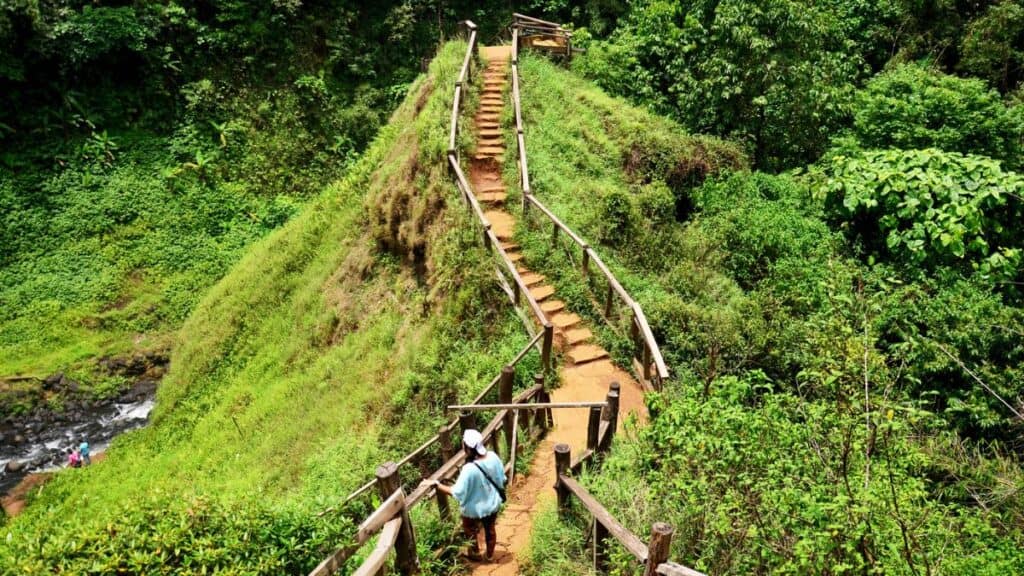
Ready for an adventure that will take your breath away? Explore Laos’ well-preserved remote areas by trekking through the jungle—abundant flora and winding trails await!
One of the top destinations to connect with nature is the Bolaven Plateau in Pakse, where diverse wildlife such as tigers, elephants, monkeys, and rare birds find their place. As you tread the secluded routes, the ethnic villages, caves, and waterfalls will make your journey even more fascinating.
- Location: Bolaven Plateau, Pakse
2. Zip Lining – Bokeo Province
Zip lining in Laos lets you glide through the skies and witness rainforests from soaring heights, all while getting your heart pumping with excitement. The best place for this exhilarating activity is Bokeo Nature Reserve in the far northwest due to its rich biodiversity.
- Location : Bokeo Province
3. Visiting Waterfalls – Pakse
Uncover Laos’ natural beauty at its mesmerizing waterfalls, where turquoise-colored gems flow down rock layers. My personal favorite is the Kuang Si Waterfalls near Luang Prabang, with bright blue pools inviting you to relax amidst the sound of crashing waters.
Alternatively, head to the Bolaven Plateau in the far south for a thrilling motorbike tour. Discover what makes each waterfall special at the highlands, from the thunderous surge of the Tad Fane Falls to the ethereal tranquility of the Tad Yuang Waterfalls.
- Location: Luang Prabang and Bolaven Plateau, Pakse
4. Mountain Climbing – Thakhek
Imagine getting a full-body workout while taking in spectacular sights from above—in Laos, this is a reality for many tourists! Ascend one-of-a-kind rock formations at The Green Climbers Home in Thakhek, strewn with climbing routes of varying difficulty. With its mountainous terrain, Laos is rapidly growing in recognition as one of the best climbing destinations in Southeast Asia.
- Location: Thakhek (3-4 hours away from Savannakhet by bus or minivan)
5. Kayaking – Nong Khiaw
Kayaking hubs in Laos beckon with picturesque views and vibrant landscapes. In Nong Khiaw, paddle away on the Nam Ou River to see what the hype is all about.
Encounter the Pak Ou Caves along the riverbank, where hundreds of Buddha mini-statues hold spiritual significance.
- Location: Nong Khiaw
6. COPE Visitor Centre – Vientiane
At this intriguing exhibit, unearth compelling stories of Laos’ turbulent past and the community’s efforts to rebuild what was lost. It was founded by the Cooperative Orthotic and Prosthetic Enterprise (COPE) Vientiane, a non-profit organization that empowers victims of political conflict by providing prosthetic limbs and rehabilitation.
- Location: Vientiane
7. Pha That Luang (Great Sacred Stupa)
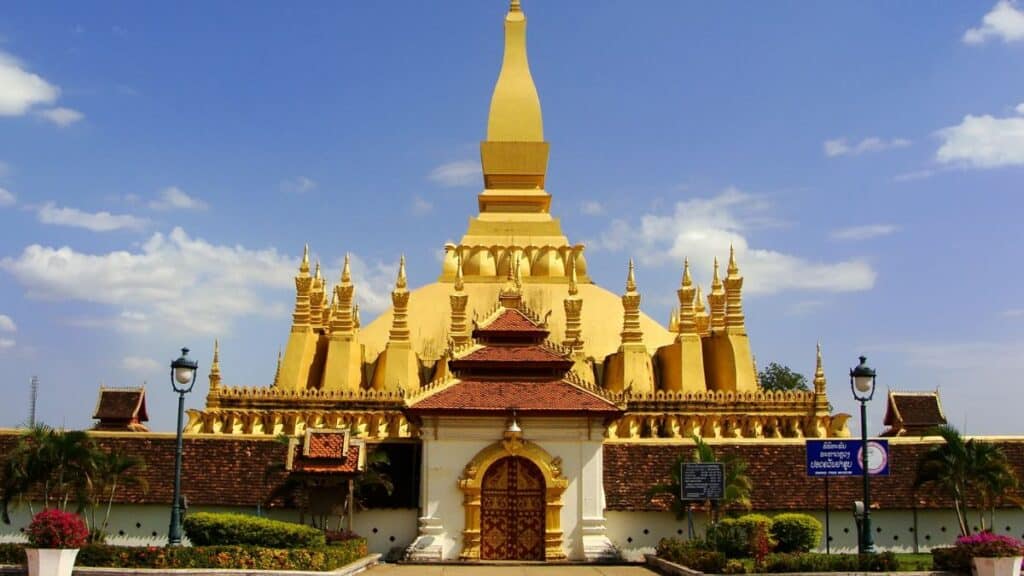
Travelers in Laos will notice its strong ties to Buddhist tradition, much like neighboring Thailand . The country’s most revered cultural monument is Pha That Luang, a 148-foot-high (45-meter) stupa painted in shimmering gold. This must-visit site hosts images of the holy Buddha and a statue of Jayavarman VII, a mighty ancient ruler.
- Entrance fee: 5,000 Kip ($0.30)
8. Wat Xieng Khouane Luang (Buddha Park) – Vientiane
If you want a leisurely-paced outdoor activity, visit the open-air Buddha Park . The meadow is comprised of over 200 mystical concrete sculptures amidst refreshing greenery.
Contrary to its name, the landmark honors deities from both the Hindu and Buddhism faiths. Stroll through the garden to spot unique sculptures of various sizes, including a grand pumpkin-shaped statue and a three-headed elephant figure.
- Entrance fee: 15,000 Kip ($0.80)
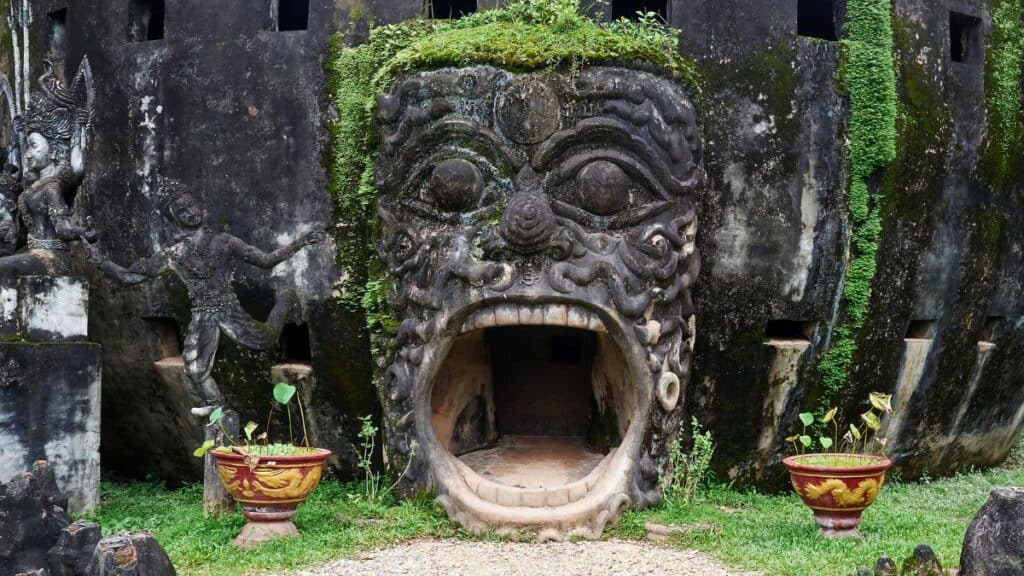
9. Coffee Farms – Pakse
Are you a coffee aficionado? If yes, don’t miss the opportunity to sample Laos’ locally brewed coffee, celebrated for its robust and full-bodied flavor.
At the lush Bolaven Plateau down south, you’ll find bustling coffee plantations and processing centers fueling the country’s rapidly growing coffee bean trade. Experience immersive activities like hand-picking beans alongside farmers, who will also teach you about their distribution methods.
10. Wat Xieng Thong – Luang Prabang

Laos has no shortage of temples paying homage to the Buddha. Among these, Wat Xieng Thong stands out as one of the most famous in the country, known for its mosaic designs portraying the “tree of life” symbol and local folklore. The distinct structure adds to its allure, with a low roof that appears to sweep upwards.
- Entrance fee: 20,000 Kip ($1)
- Location: Luang Prabang
11. Night Market – Luang Prabang
If you’re craving authentic cuisine, visit the famous Night Market in Luang Prabang . It’s where family-owned stalls serve delectable dishes ranging from baguettes (interestingly, Laotians have integrated French influences due to colonial history) to fried noodles, barbeque skewers, and chopped vegetables.
Additionally, you can purchase handcrafted souvenirs or t-shirts as gifts to bring back home.
12. Elephant Sighting – Sainyabuli Province
Meet Laos’ gentle giants in their natural habitat. At Nam Tien Lake in Sainyabuli Province, get a firsthand view of the elephants’ jaw-dropping size and observe how they play in the wild. Spending time with these massive creatures is sure to leave a lasting impression.
- Location: Sainyabuli Province (Northwest Region)
How To Get Around Laos
With Laos’ distinctive “untouched” charm, it’s worth noting that most roads are paved but are filled with potholes. You’re likely to wind through rugged terrains while getting from one place to another. But don’t fret, as reliable transport networks serve anyone trying to navigate the country.
In 2021, Laos launched a railway system spanning the northern part of the country. It gives locals and tourists a convenient and speedy travel option. Stretching from Boten to Vientiane, the significant stations for travelers include Luang Prabang, Vang Vieng, and Vientiane.
- Routes : Boten to Vientiane
- Average Cost: 140,000 Kip ($7) for a one-hour ride
Please note that they will scan your bag when you enter the boarding area for the train, like they do at the airport. They will remove anything flammable, including spray deodorant and other gasses.
The sole domestic carrier, Lao Airlines, efficiently links key tourist destinations with reasonably priced flights. Remember that securing a plane ticket can be challenging during peak tourist seasons.
- Routes: Vientiane to Luang Prabang, Vientiane to Pakse, and Vientiane to Savannakhet
- Average Cost: 970,000-2,721,000 Kip ($50-$140), depending on the endpoint
Local Bus
Local buses in Laos provide an authentic travel experience with varying comfort levels. They are more budget-friendly than tourist buses, offering frequent departures and the flexibility to make stops along the route. However, remember that you’ll have limited personal space and access to basic amenities during your travel.
- Routes: Vientiane to Luang Prabang, Vang Vieng to Vientiane, Vientiane to Pakse
- Average Cost: 136,000-390,000 Kip ($7-$20), depending on the endpoint
Minivan Transfer
Boarding a minivan is faster for routes like Vientiane to Vang Vieng or Thakhek to Savannakhet. If you’re traveling in peak season, I suggest booking when you arrive. Otherwise, booking your minivan transfer the day before your departure won’t be an issue.
Prices vary from place to place, so I recommend checking out a couple of different companies before buying your tickets. Please note that all transactions are done in cash.
- Routes: Vientiane to Vang Vieng, Thakhek to Savannakhet
- Average Cost: 350,000 Kip ($12) per trip
Tuk-Tuk (Motorized Tricycle)
Tuk-tuks, the iconic motorized tricycles, offer a convenient mode of transportation for groups. Tuk-tuks are prevalent in major cities like Vientiane, Luang Prabang, and Pakse.
Remember to haggle for a better deal, as drivers often quote high prices to tourists. Also, negotiate the fare before departure to avoid an unfairly high price.
- Average Cost: 58,000-97,000 Kip ($3-$5) per trip
Songthaew (Shared Taxi)
A songthaew, which resembles an oversized tuk-tuk, is an affordable mode of transportation with fixed routes. Expect modest fares, but be prepared to share seats with other passengers bringing bulky cargo.
- Average Cost: 10,000-20,000 Kip ($0.50-$1) per trip
Bicycle Rental
Renting a bicycle is best for city exploration in Luang Prabang, Vientiane, and Pakse. In Laos, you can traverse any city within 20 minutes. While there’s no need to worry about theft, using a lock for security is advisable as you won’t find any bike racks around.
- Average Cost: 10,000-50,000 Kip ($0.50-$3) per day
Motorbike Rental
Much like in Vietnam , renting a motorbike or scooter is a popular yet potentially risky mode of transportation. It’s essential to inspect the motorbike’s condition before hopping on. Wear a helmet at all times and carry your belongings securely. Like with car rentals, an international driver’s license is required.
- Average Cost: 150,000 Kip (10 USD) per day
2-Day Boat Tour
Boats are stationed along the Mekong River, providing the most scenic means of transportation. Slow boats ride up and down the river, serving locals and tourists while carrying goods.
- Routes: Any city along the Mekong River
- Average Cost: 486,000 Kip ($25) per trip
Best Time To Visit Laos
Generally, it’s best to visit Laos during the coolest period of the dry season, from November to February. At this time, you can enjoy nice weather and clear skies, perfect for checking out the country’s attractions.
While the rainy season (May to October) allows plants to flourish and makes the climate cooler, unpredictable conditions like floods may hinder your travels, especially on unpaved roads.
Since Laos is a mountainous country, temperatures depend on a specific area’s altitude. In the dry season, Laos’ northern and central regions are at 79°F-81°F (26°C-27°C) because of higher altitudes. On the other hand, temperatures in Pakse range from 79°F-84°F (26°C-29°C) as it’s located in the south.
Useful Tips For Your Laos Travel
- While there are low theft rates in Laos, it’s wise to guard your valuables by keeping them in a backpack or sling bag . Additionally, steer clear of poorly lit areas at night.
- While English is commonly understood, familiarizing yourself with basic Lao phrases is the best way to bridge language barriers.
- Motorbike accidents are common in Laos. Never ride while intoxicated.
- Before long motorbike rides, check the tire pressure, fuel level, and oil.
- Have an international driver’s license ready for renting cars or motorbikes.
- Bargain with vendors when shopping or negotiating tricycle fares, as some tend to overcharge foreigners.
- Carry both US dollars and Kip. Using Kip for small purchases and dollars for larger transactions is a good idea.
- Avoid eating raw meat or fish as they might possess harmful bacteria. Wash fruits and vegetables thoroughly to minimize pesticide consumption.
Frequently Asked Questions – Laos Travel Guide
Is laos expensive to visit.
Laos is known for its affordable prices, though slightly costlier than some neighboring countries. Still, it remains largely budget-friendly for most travelers.
What Is Considered Rude in Laos?
Laos follows traditional Buddhist customs, so certain gestures might come across as impolite. These include showing public displays of affection, wearing revealing clothing, being unhygienic, touching someone’s head, pointing your foot at others, and using your left hand to give items.
Is Laos Safe for Female Tourists?
Laos welcomes women travelers with its reputation for safety. The country’s friendly locals and warm atmosphere contribute to its low crime. But just as in any destination, women should exercise precautions like avoiding solitary walks at night and staying alert to their surroundings.
Conclusion – Laos Travel Guide
Whether you go around as a backpacker or opt for the luxury travel version, your Laos trip will still be filled with IG-worthy sights, delicious flavors, and awe-inspiring experiences that will make you wonder where time went.
Hopefully, this guide will inspire you to enjoy yet go beyond the laidback, fabulous capital, Vientiane, and explore Laos’ countryside with its hidden gems and exciting adventures.
Interested in similarly gorgeous Southeast Asian destinations? Check out these travel bucket list places:
- Scuba Diving in Thailand – 16 Best Scuba Diving Destinations
- Discovering Hoi An: A Comprehensive Guide to Unforgettable Experiences
Founder of Spark Nomad, Radical FIRE, Copywriter
Expertise: Personal finance and travel content. I’m a full-time traveler, and I’ve been to 49 countries and 5 continents. Education: Bachelor of Economics at Radboud University, Master in Finance at Radboud University, Minor in Economics at Chapman University. Over 200 articles, essays, and short stories published across the web.
Marjolein Dilven is a journalist and founder of Spark Nomad, a travel platform, and Radical FIRE, a personal finance platform. Marjolein has a finance and economics background with a master’s in Finance. She has quit her job to travel the world, documenting her travels on Spark Nomad to help people plan their travels. Marjolein Dilven has written for publications like MSN, Associated Press, CNBC, Town News syndicate, and more.

Laos Travel Guide
Your ultimate laos travel guide, with tips, and things to see and things to do in laos. great for first-time and returning travelers..
In all of Laos there is a fusion of contrasting culture. Enjoy a baguette and egg for breakfast and then have Laap Chicken for lunch. We enjoyed the blend of French Culture with Asian tradition.
The French used to rule that land and their presence is evident everywhere. To walk into a temple filled with Golden Buddhas one minute and then to be out in the sunshine riding a bicycle on a busy street heading towards a replica (with Buddhist elements) of the Arc du Triomphe is very cool indeed.
This Laos travel guide will help you plan your next vacation.
Popular Guides
- the Countryside in Vang Vieng
The Pak Ou Caves, Sacred Buddha Caves of Laos
Our Highlight
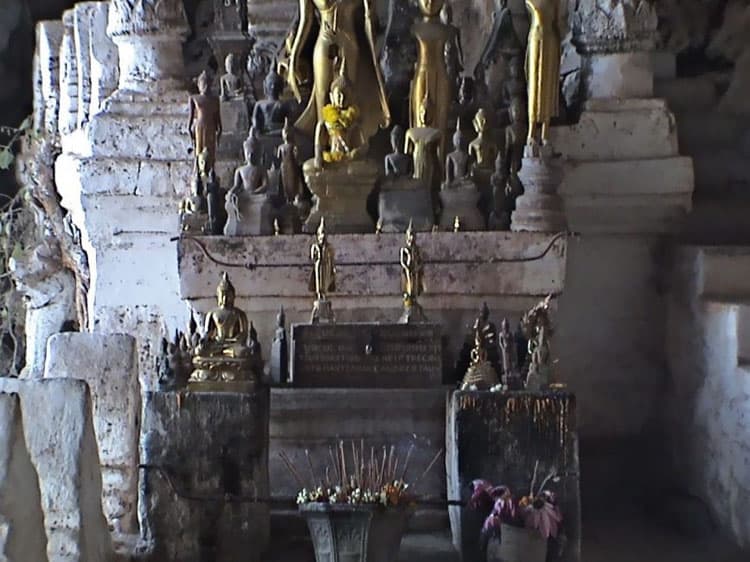
Table of contents
Table of Contents
Fast Facts about Laos
- Laotian power voltage is 220 V 50 Hz; Power sockets A, B & C.
- Laotian currency is the Laotian Kip (LAK) and is around 8,000 LAK for 1 USD.
- Visas upon arrival are for 30 days for most nationalities and they can be extended a max of two times for up to 30 days each time.
- Bargaining is very much a part of life in Laos, and an art form, requiring a balance of humour, patience and tact.
- Tap water in Laos is not considered safe to drink. It’s recommended to only drink bottled water, readily available in hotels, shops and restaurants.
- Try to bring sufficient amounts and appropriate forms of cash with you upon entry. Laos now has ATM machines, but they are only sparsely located in Huay Xai, Luang Prabang, Vientianne and Vang Vieng
- Be polite . Ask to take people’s pictures (especially a monk), take your shoes off at the door, keep your feet off the furniture, don’t point etc. A little kindness goes a long way!
Things to See and Do in Laos
- Cycle through the Countryside – explore another side of Vang Vieng
- Go on a Motorcycle Adventure – The Loop is a three-day motorbike adventure through central Laos which starts and finishes in Ta Khek. The whole thing revolves around a particular guest house, the Ta Khek Travellers Lodge
- Explore the Sacred Caves of Laos – The Pac Ou Caves are a sacred site located on the Mekong River. It is loaded with thousands of Buddha statues and is still used as a place of worship.
- Patuxai – Built between 1957 and 1968, Patuxai is a war monument built in honor of citizens of Lao who fought for its independence from France.
- Visit Wat Sisaket – The temple of Wat Si Saket is the only Laos temple that was undamaged during the occupation by the Siamese. Within it are more than 10,000 Buddha sculptures of different shapes and sizes.
- Explore That Luang – Also known as “the Great Stupa,” That Luang is a national symbol in Laos. It is considered to be Laos’ most sacred monument and is regularly visited by tourists and pilgrims alike.
- Slow Boat to Thailand from Laos – Taking the slow boat from Luang Prabang Laos to Chaing Kong Thailand is the perfect way to experience the Mekong river, to see the villagers that live along the river and to view the rolling landscape of Laos.
- Visit Vientiane – Laos’s national capital, Vientiane, should not be missed. Guesthouses and shops rent bicycles for a dollar a day and it is a great way to see the Pagodas and Wats .
Laos Travel Guides
Cycling through the Countryside in Vang Vieng, Laos
Accommodation
Budget – Budget hotels and guest houses in Laos are very affordable. On average, they cost about 10 USD per night. Rooms on the lower end of this are usually equipped with fans, while those on the higher end may have air conditioning, water heating, and TV sets.
Mid Range – In Laos, a mid-range hotel will cost between 15 – 25 USD a night. For this, you’ll get spacious rooms, private bathrooms, clean sheets and fittings, and outdoor swimming pools.
High End – Pricing for high-end hotels in Laos starts around 100 USD per night. You will get accommodation in colonial accommodation or a recently built place with rooms that have satellite TV, air-conditioning, fridges, and water heating.
Check out our favorite booking platforms Booking.com , Tripadvisor and VRBO for the best deals on accommodation in Laos.
- Sticky Rice (Khao Niao) – Sticky Rice is a chewy and delicious staple food that is typically served in a small bamboo basket and eaten with special sauces.
- Laap (Lahb, Larp, or Larb) – Laap is a protein-dense delicacy that is prepared with a combination of chopped fish, pork, chicken, beef, and duck.
- Green Papaya Salad – This is prepared using strips of unripe papaya, which are pounded together with palm sugar, tomatoes, garlic, dried shrimp, raw eggplant, and more.
- Mok Pa – This dish is made of steamed fish prepared with green onions, fish sauce, lemongrass, and green chili, and then wrapped in banana leaves.
- Khao Piak Sen – This is a noodle soup made with pork or chicken, and that is considered to be comfort food in Laos.
The Best Ways to Get Around Laos
Getting to laos:.
Flights: At the moment, you cannot fly directly to Laos unless you are within Asia. Once within the continent, you can get direct flights to the Vientiane and Luang Prabang International Airports.
You can check for the best flights to Laos on Skyscanner .
Transportation:
Buses : Jumbos are pick-up trucks that have been transformed for use as public buses. They have set routes and typically cost 1.25 – 2.5 USD.
Taxis / Uber : Taxis are available but are relatively expensive. Distances and costs vary but expect to spend about 7 USD per trip. Uber is not available in Laos but LOCA, a local ride-sharing company, operates and offers private transportation.
Car Rental: You can rent a private car and a driver from your guesthouse or from a tourism company. You can also compare prices here .

When to go To Laos
- The best time for you to visit Laos is between October to April. The weather is mild and dry.
- However, if you want to travel via river, it’s best to go between November and January.
Where to Stay in Laos
- Settha Palace Hotel – Located in Vientiane, this colonial-era hotel has rooms that are stocked with essential amenities. It has a large garden and an outdoor pool.
- Luang Say Residence – This Luang Prabang hotel offers breakfast for residents, and there is free wifi in the rooms.
- Muang La Resort – Muang La Resort is set in tropical gardens by a river in Muang La. It has large living spaces, private hot tubs, and offers experiential stays.
Check out our favorite booking platforms Booking.com , Tripadvisor and VRBO for the best deals on accommodation.
What to Pack for Laos
Laos has a tropical monsoon climate with a cool dry season from November to February, a hot dry season from March to April and a rainy season from May through October.
The wettest months are from June to September; the rain is not constant – afternoon or evening downpours are common. At this time some roads in the countryside may be impassable as they can get flooded or washed out.
During the cool season, temperatures in the north, especially in Phonsavan, can get down to freezing. The Bolaven area can get pretty chilly as well.
- The protection basics – Travellers should stock up on the essentials: sun block, mosquito/insect repellant containing DEET or a pyrethroid insecticide, sunglasses and a hat.
- Personal safety products – Before leaving for your trip, make sure to pack some personal safety products, like money belts and locks, so that you can keep your valuables safe on your trip.
- Head Lamp / Torch – Many smaller towns, including several provincial capitals, have power for only a few hours in the evening or none at all, so it’s worth bringing a torch.
- A tropical wardrobe. This should include—for both men and women—shorts, T-shirts, breathable rain gear, a warm jacket or fleece, sturdy footwear, and a wrap. Casual clothes with natural fibers – linen, silk, cotton – work well in the heat and humidity.
See our packing tips: packing tips
Laos Travel Guide: Best Booking Resources
Whenever we travel to we make sure to start with these companies. We have tried a lot of different ones over the years and all of these have consistently proven to be the best when it comes to offering great prices.
We have used every one of these personally and continue to do so.
- Booking.com : This is our go site to when comparing prices for accommodation. It usually has the cheapest prices, especially in Europe and we love their interface. Not to mention you get free cancellation and you are guaranteed the best price.
- Trip Advisor : What we like about Trip Advisor is that we can look at all the reviews and then book our accommodation. TripAdvisor is where we go when we want to compare prices with multiple accommodation providers.
- VRBO : is the main search engine we use when we are looking for a home or apartment rental. It can sometimes be cheaper than hotels and it is the best way to stay in areas that offer a more local feel.
- Hostelworld : With one of the largest databases of hostels in the world, Hostelworld is the go-to site when you are looking for budget accommodation.
- Skyscanner : This is the first place we check for flights. It consistently comes back with the cheapest and best options. It allows us to compare a lot of airlines to get the best price.
- Rome 2 Rio : If you want to see how to get somewhere by plane, train, bus, ferry or car Rome2Rio lays it all out for you as well as related costs.I love how they show it all to you on a Google Map and it works offline.
- Get Your Guide: For all your day trip and city guide needs, we use Get Your Guide. It has the world’s largest collection of things to do with more than 30,000 activities in 7500 destinations.
- World Nomads Insurance: When traveling to Italy you should always have travel insurance. We have found the best bang for your buck is by far World Nomads.
Laos Travel Guide: Related Articles
To browse all our articles and guides about Laos click here.
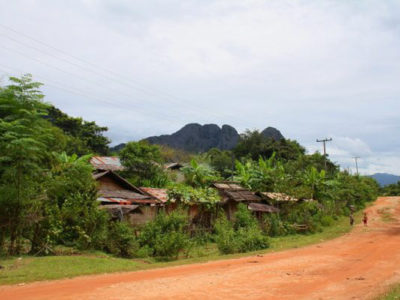

No videos yet!
Click on "Watch later" to put videos here
Laos Travel Guide – Everything You Need to Know

Laos, often referred to as the “Land of a Million Elephants,” is a captivating and serene destination nestled in Southeast Asia. Known for its lush landscapes, ancient temples, and rich cultural heritage, Laos offers travelers a unique and off-the-beaten-path experience. Whether you’re exploring the spiritual wonders of Luang Prabang, cruising down the Mekong River, or trekking through pristine jungles, Laos invites you to immerse yourself in its natural beauty and warm hospitality. Discover a hidden gem in the heart of Asia, where time seems to slow down, and tranquility prevails. Welcome to Laos, where every journey is an adventure into the heart of Southeast Asia’s soul.
What’s the Best Time to Visit? 📅
The best time to visit Laos as a tourist largely depends on your preferences and the type of experience you seek, as Laos experiences distinct seasons:
- Cool and Dry Season (November to February): This is generally considered the best time to visit Laos. The weather is cool and dry, making it ideal for outdoor activities, sightseeing, and trekking. The temperatures are comfortable, and the lush landscapes are at their greenest. This is the peak tourist season, so expect larger crowds and higher prices, especially in popular destinations like Luang Prabang and Vientiane.
- Hot Season (March to April): March and April are hot and dry months, with temperatures often exceeding 35°C (95°F). While this can be uncomfortable for some, it’s a great time for water-related activities like tubing and kayaking. Note that the hot season can be scorching in some regions, so be prepared for the heat if you choose to visit during this time.
- Rainy Season (May to October): The rainy season in Laos can bring heavy downpours, particularly from June to August. Travel during this time can be more challenging due to muddy roads and occasional flooding, especially in rural areas. However, it’s the least crowded season, and accommodations and tours may offer lower prices. The landscapes are lush and vibrant, and the rain usually comes in short, intense bursts, leaving plenty of time for activities.
In summary, the best time to visit Laos for most travelers is during the cool and dry season from November to February when the weather is pleasant and outdoor activities are enjoyable. However, if you prefer fewer crowds and don’t mind occasional rain, the rainy season can also be a rewarding time to experience the country’s natural beauty. It’s essential to consider your interests and priorities when planning your trip to Laos.
What’s the Best Way to Get Around? 🚌
Getting around Laos as a tourist can be an adventure in itself. The choice of transportation largely depends on your budget, schedule, and the areas you plan to visit. Here are the primary ways to get around Laos:
- Domestic Flights: For long distances, flying is the quickest option. Laos has several domestic airports, including those in Vientiane, Luang Prabang, Pakse, and others. Lao Airlines and other regional carriers operate flights connecting major cities. This is an excellent option if you want to save time and cover large distances.
- Buses: Buses are the most common mode of transportation in Laos. There are various types of buses, including VIP and sleeper buses for longer journeys. However, road conditions can be rough in some areas, and travel times can be long due to winding mountain roads. Bus travel is relatively inexpensive and a great way to experience local life.
- Minivans: Minivans are another popular option for both short and long journeys. They are faster than buses but can be cramped, and the roads can be bumpy. Minivans often connect major tourist destinations.
- Tuk-Tuks and Songthaews: In cities and towns, tuk-tuks (three-wheeled taxis) and songthaews (shared minivans) are common for short trips and local transportation. They are convenient for getting around within urban areas.
- Boats: In areas along the Mekong River, such as Luang Prabang and Vientiane, boat travel is an option. Slow boats and speedboats offer scenic journeys, but safety standards can vary, so choose your operator carefully.
- Renting a Motorbike or Bicycle: In some tourist areas, you can rent motorbikes or bicycles to explore at your own pace. This is a great way to see local life and visit off-the-beaten-path destinations. However, be aware of road conditions and traffic safety.
- Taxis and Ride-Sharing: Taxis are available in larger cities like Vientiane and Luang Prabang. Some apps, such as Grab, offer ride-sharing services in these areas, making it more convenient to get around.
- Walking: In smaller towns and tourist areas, walking is a pleasant way to explore. Many attractions, restaurants, and accommodations are within walking distance of each other.
When traveling in Laos, especially by bus or minivan, it’s essential to be flexible with your schedule as delays and road conditions can vary. Additionally, consider the weather and road conditions during the rainy season, which can affect travel plans. Always check the latest travel information and be prepared for some adventures along the way.
What’s the Official Language?
The official language of Laos is Lao, and it is the most widely spoken language in the country. While you can often find English spoken in tourist areas and at hotels and restaurants, learning a few basic Lao words and phrases can go a long way in enhancing your travel experience and showing respect for the local culture. Here are some essential Lao words and phrases for tourists:
- Hello: Sabaidee (ສະບາຍດີ)
- Thank you: Khop jai (ຂອບໃຈ)
- Yes: Jao (ແມ່ນ)
- No: Baw (ບໍ່)
- Please: Khawp jai (ຂ້ອຍບໍ່ໄດ້)
- Excuse me / Sorry: Khaw thot (ຂໍຂ້ອນ)
- Good morning: Sabaidee ton sao (ສະບາຍດີຕົ້ນເສີຍ)
- Good afternoon: Sabaidee ton khaw (ສະບາຍດີຕົ້ນເຂົ້າ)
- Good evening: Sabaidee ton yen (ສະບາຍດີຕົ້ນເຍຍ)
- Good night: Sabaidee ton baht (ສະບາຍດີຕົ້ນບັນ)
- How much is this?: Nee thao dai? (ນี่ໄດ້ເດີ?)
- Where is…?: Yuu hai…? (ຢູ່ທ່ຽວ…?)
- I don’t understand: Khon khaw bpai (ຂໍຂ້ອຍບໍ່ໄດ້)
- Water: Nam (ນໍ)
- Food: Ah-han (ອາຫານ)
- Bathroom/Toilet: Hong nam (ຫ້ອງນໍ)
- Help: Chuay (ຊ່ວຍ)
- I’m lost: Khony hak diao (ຂໍຢັກເດີ)
Learning and using these basic Lao phrases can make your interactions with locals more enjoyable and demonstrate your respect for their culture. Lao people often appreciate it when tourists make an effort to speak their language, even if it’s just a few words.
Where to Stay? 🏨
Laos offers a variety of accommodation options for tourists, ranging from budget-friendly guesthouses to luxurious resorts. Your choice of where to stay depends on your budget, travel style, and the areas you plan to visit. Here are some popular types of accommodations and recommended places to stay in Laos:
- Guesthouses and Hostels:
- Luang Prabang: The town is known for its charming guesthouses and hostels, many of which are in traditional Lao-style buildings. You’ll find options for all budgets here.
- Vang Vieng: This backpacker-friendly destination has numerous guesthouses and hostels offering affordable accommodation.
- Vientiane: The capital city also has a range of guesthouses and hostels catering to budget travelers.
- Boutique Hotels:
- Luang Prabang: This city has a selection of boutique hotels with unique designs, offering a more personalized and comfortable stay.
- Vientiane: You can find boutique hotels that combine comfort and style in the capital.
- Resorts and Luxury Hotels:
- Luang Prabang: For a more upscale experience, there are several luxury resorts and boutique hotels set against the backdrop of this UNESCO World Heritage-listed town.
- Vientiane: The capital city offers luxury accommodations with modern amenities.
- Luang Namtha: If you’re exploring northern Laos, there are eco-lodges and upscale resorts amidst stunning natural surroundings.
- Riverside Bungalows:
- Don Det (in the 4,000 Islands area): This area in southern Laos offers charming riverside bungalows, perfect for a relaxing stay along the Mekong River.
- Villages near Luang Namtha: For an immersive cultural experience, consider staying in a local homestay where you can learn about traditional Lao life and customs.
- Eco-Lodges:
- Nam Et-Phou Louey National Protected Area: In this remote part of northern Laos, you can stay in eco-lodges while participating in wildlife conservation activities and guided night safaris.
- Floating Rafts:
- Kong Lor Cave: Near the Kong Lor Cave, you can find floating raft-style accommodations on the Nam Hin Bun River, offering a unique and serene experience.
- Treehouse Accommodations:
- Nong Khiaw: Some accommodations in this scenic town offer treehouse-style lodgings, providing stunning views of the limestone karsts.
When booking accommodation in Laos, it’s a good idea to make reservations in advance, especially during the peak tourist season from November to February. Additionally, consider the amenities you require, such as air conditioning, Wi-Fi, and proximity to attractions, when selecting your lodging.
What to Eat? 🍽️
Laos offers a diverse and flavorful culinary scene that reflects its cultural diversity and influences from neighboring countries. When visiting Laos as a tourist, you should definitely try these must-try foods and dishes:
- Laap (Larb): Laap is the national dish of Laos and consists of minced meat (often chicken, pork, or fish) mixed with herbs, lime juice, fish sauce, and toasted rice powder. It’s typically served with fresh vegetables and sticky rice. The combination of fresh herbs and tangy flavors makes it a must-try.
- Sticky Rice: Sticky rice (khao niew) is a staple in Lao cuisine. It’s served with almost every meal and is an integral part of the culinary experience. You’ll often see locals shaping sticky rice into small balls for easy eating.
- Tam Mak Hoong (Green Papaya Salad): This spicy and refreshing salad is made from shredded green papaya, garlic, chilies, lime juice, and fish sauce. It’s a delicious and popular street food dish.
- Mok Pa (Fish Steamed in Banana Leaves): Mok Pa is a dish where fish, usually catfish, is marinated in a mixture of herbs, spices, and coconut milk, then wrapped in banana leaves and steamed. The result is a fragrant and flavorful dish.
- Khao Soi: Khao Soi is a Lao noodle soup made with flat rice noodles and served in a rich and flavorful coconut milk-based broth. It can be found in various variations with chicken, beef, or vegetables.
- Or Lam: Or Lam is a traditional Lao stew made with vegetables, mushrooms, and sometimes meat, typically pork or buffalo. It’s flavored with lemongrass, galangal, and chilies, giving it a unique taste.
- Jeow (Lao Dips): Jeow is a variety of spicy dipping sauces made from ingredients like chili peppers, garlic, herbs, and fish sauce. It’s commonly served with vegetables and sticky rice.
- Khao Poon (Lao Noodle Soup): This flavorful noodle soup features a rich, coconut-based broth with rice vermicelli, vegetables, and your choice of meat. It’s commonly found at street stalls and markets.
- Khao Piak Sen (Lao Chicken Noodle Soup): A comforting and filling dish, Khao Piak Sen consists of wide rice noodles, chicken, and a flavorful broth.
- Fried Insects: If you’re feeling adventurous, you can try fried insects like crickets, silkworms, and grasshoppers, which are commonly sold as snacks in local markets.
- Khao Jee (Lao Baguette Sandwiches): A remnant of French colonial influence, Lao baguette sandwiches are filled with various ingredients like pork, chicken, vegetables, and a spicy sauce.
- Mekong River Fish: While in Laos, especially near the Mekong River, try fresh fish dishes. Grilled Mekong River fish is a local specialty, often served with flavorful dipping sauces.
- Fruit Shakes: Laos has an abundance of tropical fruits, and you can enjoy delicious fruit shakes made from mangoes, papayas, and other seasonal fruits.
Don’t forget to complement your meals with Beer Lao, the country’s famous local beer, or refreshing coconut water. Exploring the local cuisine is a delightful part of your visit to Laos, so be sure to try these dishes and embrace the country’s culinary traditions.
What to See? 🔍
Laos offers a wealth of natural beauty, historical sites, and cultural attractions for tourists to explore. Here are some must-see places in Laos that you should consider visiting:
- Luang Prabang: This UNESCO World Heritage-listed town is a gem of Laos, known for its well-preserved architecture, Buddhist temples, and serene atmosphere. Highlights include the Royal Palace Museum, Mount Phousi for panoramic views, and the Kuang Si Falls.
- Vientiane: The capital city of Laos offers a mix of colonial-era and contemporary architecture, as well as several significant temples such as Pha That Luang, Wat Si Saket, and the Patuxai Victory Monument.
- Vang Vieng: Nestled amid stunning karst limestone formations and the Nam Song River, Vang Vieng is famous for its outdoor adventures like tubing, kayaking, and cave exploration.
- Plain of Jars (Phonsavan): Explore the mysterious archaeological site featuring giant stone jars of unknown origin scattered across the landscape. The area also has a history tied to the Vietnam War and a UXO (unexploded ordnance) museum.
- Bolaven Plateau: Located in southern Laos, this plateau is known for its cool climate, lush coffee plantations, and beautiful waterfalls, including Tad Fane and Tad Yuang.
- Pakse: The gateway to the southern part of Laos, Pakse offers easy access to the Bolaven Plateau, the Mekong River, and the nearby Wat Phou, a Khmer temple complex.
- Si Phan Don (4,000 Islands): This picturesque region in the Mekong River is a haven for relaxation and outdoor activities. Don Det and Don Khon islands are popular destinations, where you can watch Irrawaddy dolphins, bike around, or simply enjoy the tranquility.
- Luang Namtha: A gateway to northern Laos and the Nam Ha Protected Area, this area is perfect for trekking, eco-tours, and experiencing the culture of various ethnic minority groups.
- Kuang Si Falls: Located near Luang Prabang, these turquoise waterfalls are a must-see. You can swim in the natural pools and enjoy the lush surroundings.
- Wat Phu (Vat Phou): This Khmer temple complex, a UNESCO World Heritage site, predates Angkor Wat and offers a glimpse into Laos’ ancient history.
- Nong Khiaw: A charming town surrounded by limestone karsts and situated on the Nam Ou River, Nong Khiaw is a serene destination for hiking, river cruises, and enjoying the scenery.
- Kong Lor Cave: This massive limestone cave in central Laos can be explored by a boat ride through its stunning interior, complete with towering stalactites and stalagmites.
- Vieng Xai Caves: Used as hideouts and shelters during the Secret War, these caves in the northeast offer a glimpse into Laos’ more recent history.
These are just a few of the must-see places in Laos. The country’s natural beauty, historical significance, and cultural diversity make it a rewarding destination for travelers interested in exploring Southeast Asia off the beaten path.
What to Do? 📸
Laos offers a wide range of activities and experiences for tourists to enjoy. Here are some must-do things to consider when visiting Laos:
- Alms Giving in Luang Prabang: Wake up early to witness and participate in the traditional alms-giving ceremony where Buddhist monks collect alms from locals and tourists. Remember to be respectful and follow the customs.
- Explore the Temples: Laos is home to numerous Buddhist temples and monasteries. Explore the ornate temples in Luang Prabang, Vientiane, and other cities to admire the architecture and soak in the spiritual atmosphere.
- Take a Boat Ride on the Mekong River: The Mekong River runs through Laos, and taking a scenic boat ride is a great way to see the country’s landscapes. You can even opt for a multi-day river cruise.
- Trekking: Laos offers excellent trekking opportunities, especially in northern regions like Luang Namtha and Luang Prabang. Explore lush jungles, remote villages, and diverse landscapes while trekking.
- Visit the Night Markets: Most towns and cities in Laos have vibrant night markets. These are great places to shop for local handicrafts, textiles, and souvenirs while enjoying local street food.
- Learn to Cook Lao Cuisine: Consider taking a cooking class to learn how to prepare traditional Lao dishes such as laap, sticky rice, and tam mak hoong. You can find classes in Luang Prabang, Vientiane, and other tourist hubs.
- Explore the 4,000 Islands: Don Det and Don Khon islands in the 4,000 Islands region offer a relaxed atmosphere, perfect for swimming, biking, and exploring waterfalls.
- Go Tubing or Kayaking in Vang Vieng: Vang Vieng is known for its outdoor activities, and tubing down the Nam Song River is a popular choice. You can also go kayaking or explore caves in the area.
- Visit Wat Phou: Explore the ancient Khmer temple complex of Wat Phou near Champasak. It’s a UNESCO World Heritage site and offers a glimpse into Laos’ history.
- Experience the Bolaven Plateau: Tour coffee plantations, visit waterfalls, and take in the cooler climate of the Bolaven Plateau in southern Laos.
- Attend Local Festivals: If your visit coincides with a local festival or celebration, such as Boun Ok Phansa or Boun Bung Fai, don’t miss the chance to witness traditional ceremonies and cultural performances.
- Interact with Locals: Engage with the friendly and welcoming Lao people. Visit villages, chat with locals, and immerse yourself in the local culture.
- Visit the COPE Visitor Centre: Gain insight into the impact of unexploded ordnance (UXO) in Laos by visiting the COPE (Cooperative Orthotic and Prosthetic Enterprise) Visitor Centre in Vientiane.
- Explore Caves: Laos is home to numerous caves, including Kong Lor Cave and Vieng Xai Caves. Take guided tours to explore their stunning interiors.
- Relax and Unwind: Laos is a country known for its laid-back vibe. Take time to relax, enjoy the scenic landscapes, and unwind in this tranquil destination.
Remember to respect local customs and traditions while exploring Laos, and be mindful of the natural environment, as Laos boasts stunning natural beauty and biodiversity.
Culture and Safety 🦺
Traveling to Laos is generally safe, but it’s essential to be aware of and respect the local culture and follow safety guidelines to ensure a smooth and enjoyable trip. Here are some tips regarding culture and safety when traveling to Laos:
- Respect for Buddhism: Buddhism is the dominant religion in Laos, and monks hold a revered place in society. When visiting temples or participating in religious ceremonies, dress modestly (covering shoulders and knees) and remove your shoes before entering. Do not touch monks, especially if you are a woman, as physical contact with them is typically discouraged.
- Customs and Etiquette: Be polite and show respect to locals. Use both hands when giving or receiving something, and avoid pointing your feet at people or religious objects. It’s customary to greet with a slight bow called a “nop,” particularly when meeting elders.
- Lao Language: While many people in tourist areas speak English, learning a few basic Lao phrases can be appreciated and helpful in rural areas.
- Cultural Sensitivity: Be sensitive to local customs and traditions. Ask for permission before taking photos of people, especially in rural villages. Avoid public displays of affection, as they can be considered disrespectful.
- Health Precautions: Ensure your vaccinations are up-to-date before traveling to Laos. Drink bottled water, avoid consuming ice in your drinks, and be cautious about the food you eat to prevent foodborne illnesses.
- Malaria and Dengue: Laos has areas where malaria and dengue fever are prevalent. Consult a healthcare professional before traveling to assess the need for preventive measures and bring mosquito repellent and long-sleeved clothing.
- Traffic and Road Safety: Be cautious when crossing streets, as traffic can be chaotic, and road conditions may vary. If you plan to rent a motorbike, wear a helmet and ensure you have the necessary documentation. Road accidents are a significant risk in Laos.
- Water Activities: If you participate in water activities like tubing or kayaking, be aware of local conditions and safety measures. Always wear life jackets, and follow the instructions of guides.
- Natural Hazards: During the rainy season (May to October), be aware of the potential for flooding and landslides, especially in hilly or mountainous areas.
- Unexploded Ordinance (UXO): Laos is heavily affected by unexploded ordnance from the Vietnam War era. Stay on marked paths and avoid straying into remote or rural areas without a local guide. If you encounter any suspicious objects, do not touch them and inform the authorities.
- Local Laws and Regulations: Familiarize yourself with local laws and regulations, including drug laws. Possession or use of illegal drugs can result in severe penalties.
- Travel Insurance: It’s strongly recommended to have comprehensive travel insurance that covers medical emergencies, trip cancellations, and other unforeseen events.
By respecting local culture and following safety guidelines, you can have a safe and culturally enriching experience while traveling in Laos. Additionally, staying informed about the current political and health situations in the country is advisable before your trip.
In conclusion, a visit to Laos promises a remarkable journey through a land of timeless beauty and cultural richness. Whether you seek spiritual serenity, outdoor adventures, or a taste of authentic Southeast Asian life, Laos has something to offer every traveler. From its picturesque temples to its pristine natural landscapes, Laos invites you to explore, relax, and experience a truly enchanting destination. Come and discover the hidden treasures of Laos, where the past meets the present in a harmonious blend, creating unforgettable memories that will linger long after your journey’s end.
You may also like

State of Palestine Travel Guide – Everything You Need to Know

South Sudan Travel Guide – Everything You Need to Know

Democratic Republic of the Congo Travel Guide – Everything You Need to Know
Travel destinations.
- Experiencing Australia 20
- Experiencing Cambodia 5
- Experiencing China 24
- Experiencing Cruise 6
- Experiencing France 5
- Experiencing Germany 3
- Experiencing Indonesia 10
- Experiencing Italy 11
- Experiencing Japan 10
- Experiencing Korea 7
- Experiencing Malaysia 6
- Experiencing Maldives 7
- Experiencing Myanmar 10
- Experiencing New Zealand 17
- Experiencing Singapore 15
- Experiencing Switzerland 4
- Experiencing Taiwan 14
- Experiencing Thailand 18
- Experiencing Vietnam 5
- Destinations

Introduction
- For beginners
- Visas & borders
- Getting here
An independent travel guide to Laos
Landlocked Laos is one of Asia’s most enchanting destinations. Stunning natural beauty—think mist-shrouded mountain peaks flanked by jungle-clad valleys—combine with a fascinating Buddhist culture to make Laos a superb destination for backpackers and independent travellers, while luxury tourists are also well-catered for.
On this page
- Alternative
- How long for
Communist Laos flung open its doors to tourism in the early 1990s and the decades since have witnessed a steady growth in traveller numbers. The country is changing fast, but pockets remain well off-the-beaten-track, ready to be explored by the adventurous few who are willing to forego the usual tourist luxuries. Those who want to experience a real taste of rural Southeast Asian life will be delighted.
Our Laos travel guide is here to help you get the most out of each and every one of your trips to Laos, beginning with the simple guidelines below aimed at first-time travellers to the country.

Absolute highlights
People tend to make a beeline straight for Luang Prabang when they talk about the highlights of Laos. While it's true that the northern reaches of the country have more of the top-shelf attractions, the slow pace of travel in the south can also be very endearing. Most first-time travellers head to north Laos first, south second.

Luang Prabang : The charming city of Luang Prabang , once the capital of Laos and still considered to be its spiritual heart, breathes a rich meld of French Indochinese architecture, Theravada Buddhist temples and a magical atmosphere.
Vang Vieng : Natural wonder, backpacker mecca, party central, Lima Site 6: Vang Vieng , 155 kilometres north of Vientiane on the road to Luang Prabang, has been given many labels. The small town’s striking river landscape lined with towering karst has lured travellers right from the get-go and remains stunning despite being well-visited.
Vientiane : For many years a sleepy backwater capital of an equally backwater state, as Laos has slowly opened up to foreign investment and tourism Vientiane has undergone vast changes and continues to expand. It’s a small city with an easy charm, and it harbours growing ambitions.
4,000 Islands : We’re not sure if anyone has ever actually totalled up these islands at the far southern reaches of Laos, but there are at least three worth your attention: Don Khong , Don Dhet and Don Dhon .
Popular destinations
Nong Kiaow : A small town on the banks of the Nam Ou River, Nong Kiaow boasts a gorgeous backdrop of imposing limestone mountains, picturesque river views and genuine local colour.
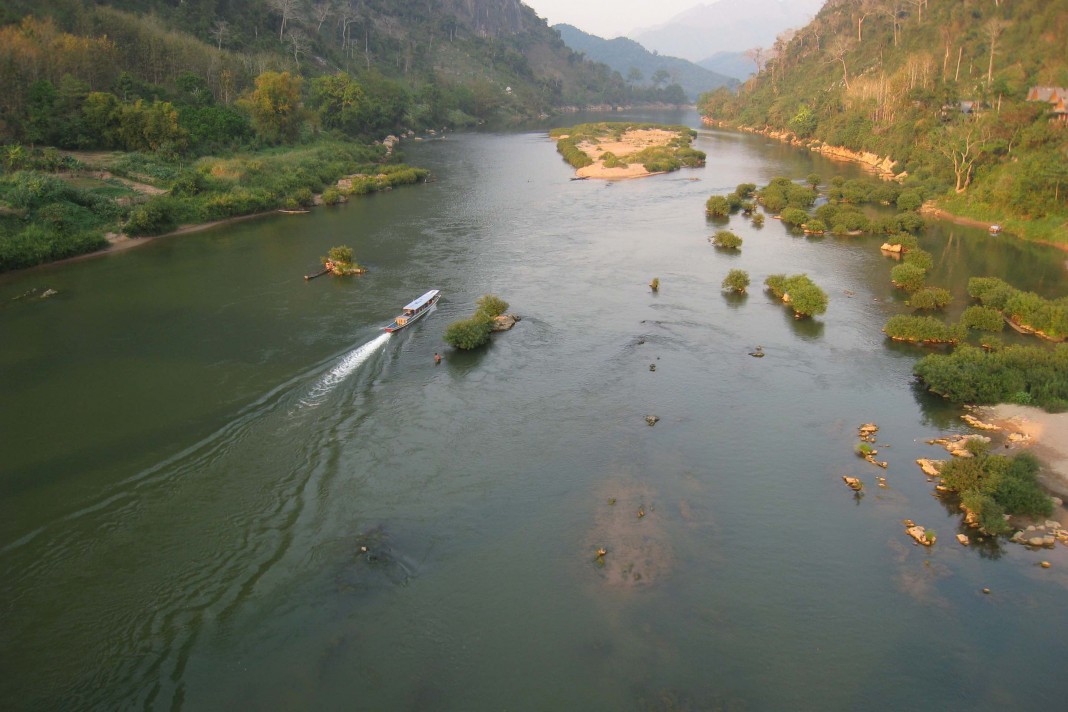
Pakse : While it doesn’t measure up to the low-key splendour of Luang Prabang, Pakse has a definite charm, some beautiful wats and two gorgeous rivers—great for enjoying some eats and drinks by the waterside and watching the sun smoulder into the horizon.
Don Dhet : Referred to by some as Khao San Road on the river, Don Dhet is a classic backpacker hub with just a fraction of the shenanigans that take place on Khao San Road.
Luang Nam Tha : Nestled in mountainous northern Laos just a hop, skip and a jump from the Chinese border, Luang Nam Tha is an excellent base for trekking and other outdoor activities, particularly in and around the Nam Ha National Protected Area.
Phonsavan : Xieng Khuang province is the site of the mysterious Plain of Jars, the origins of which is unclear, inciting international debate. The best place to explore the Plain from is Phonsavan .
Alternative destinations
Muang Ngoi : A gorgeous, sleepy town, Muang Ngoi gets our vote as one of the friendliest places in all of Laos. Simple as that.
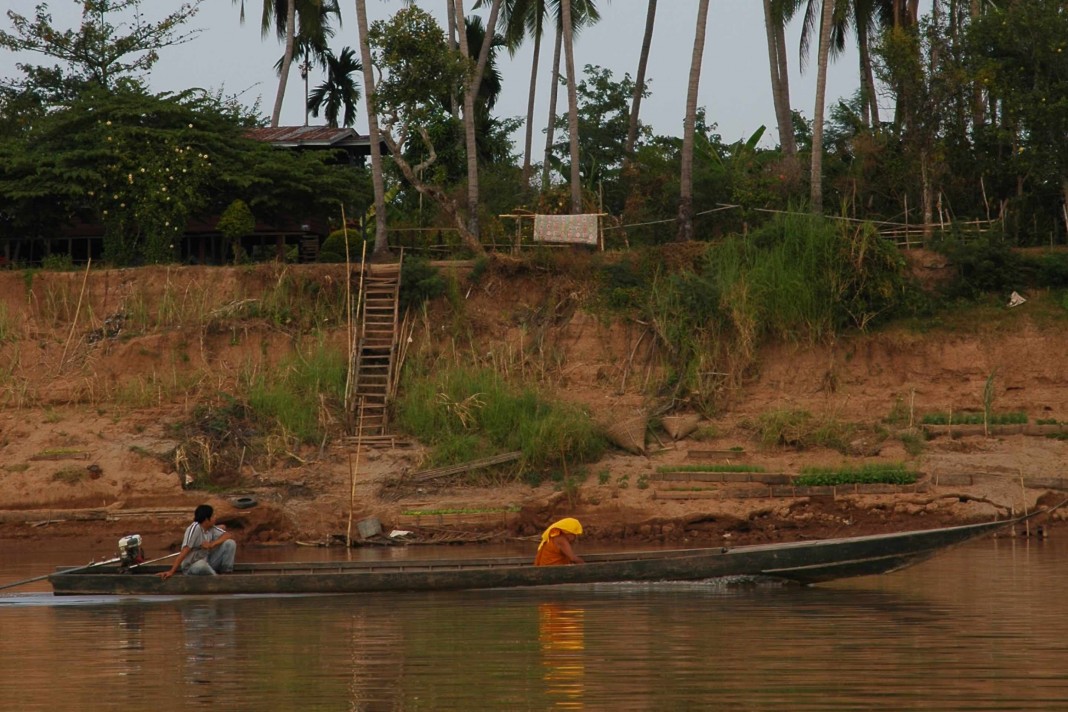
Champasak : Set on the banks of the Mekong in one of its wider sections, Champasak is the kind of town where you can end up staying a few days just reading a book and recharging. It is also the leaping off point for spectacular Wat Phu.
Don Khong : The largest island in the Si Phan Don area, the interior of Don Khong is almost entirely given over to rice cultivation and a forested mountainous area, while just about all the accommodation is crammed into and around the sleepy town of Muang Khong, on the island’s east coast. Chill out here.
Vieng Xai : About an hour by songthaew from Sam Neua is the neat and tidy town of Vieng Xai , set among beautiful karst limestone mountains rising dramatically out of rice fields. During the Secret War this area was the seat of command for the most powerful members of the Pathet Lao; the caves they inhabited are the major reason for visiting Vieng Xai.
Tha Khaek : Across the Mekong River from the Thai town of Nakhon Phanom you’ll find Tha Khaek —the biggest, most tourist-friendly town in the province—and also the base for the best scooter loop in the country.
A lot of travel in Laos is all about the journey and in response to this there are a number of straightforward loops that can be undertaken, most commonly by scooter, though car and bicycle are also possible in most cases.

Tha Khaek Loop : A 500-kilometre motorcycle journey starting and ending in Tha Khaek in Southern Laos, the Tha Khaek Loop (also known as the Konglor Loop or just the Loop) takes in the limestone scenery of Khammuan province, remote villages and many caves, of which the highlight is Konglor, a seven-kilometre long cave which has a large river running through the middle of it.
Bolaven Loop : One of the most rewarding experiences on offer in Southern Laos is a motorcycle trip through the Bolaven Plateau . It’s home to numerous waterfalls, great scenery, tribal villages and unexplored corners galore.
Pak Ou Loop : We’ve researched and created a full-day motorbike trip that gets you off-the-beaten track while covering two Luang Prabang attractions. We’re calling it “ the Pak Ou Loop ” since Pak Ou village marks the furthest point from Luang Prabang.
Chompet Loop : Just across the Mekong River from town is Chomphet district with a 23 kilometre dirt road loop that will take you through the countryside, past small villages, beautiful rice paddies and mountains. It’s bumpy and hilly with some very steep sections. The experience is like stepping back in time.
Vang Vieng Loop : Vang Vieng town itself can be an eyesore but it only takes 10 minutes on a bicycle to get out and find yourself surrounded by rice paddies , karsts and people planting rice by hand.
Nature lovers
The Gibbon Experience : With stunning vistas and lush rainforests, the natural beauty of Laos is one of the primary reasons many people visit and the Gibbon Experience is one of the best ways to appreciate this beauty.

Trekking in the Nam Ha National Protected Area : Trekking is why most people come to Luang Nam Tha—your money goes to employing the local community and to park fees that fund wildlife/forest conservation projects and maintenance. Your visit also sends a message to villages about the value of protecting the environment .
Exploring Phou Khao Khouay National Park : Sprawling yet little-visited Phou Khao Khouay National Park (the name means “Buffalo Horn Mountain”) features some beautiful scenery and a vast array of biodiversity. Experience dense jungle as well as cool, misty pine forests, rivers and waterfalls, including noteworthy Tad Leuk and Tad Xay— both can be visited in a single day trip from Vientiane .
Cooking courses and food walks : When it comes to food and food walks, all roads lead to Luang Prabang, with Tamarind and Bamboo Tree two stand-out options.
Kayaking in Vang Vieng : Now that Vang Vieng is attracting a different sort of traveller (the kind that aren’t interested in tubing), kayaking has exploded in popularity and trips down the river, ranging from an hour to a full day, are offered by several tour companies in town. Whatever vessel you choose, a trip on the river is a must while in Vang Vieng.
Buddha Park : More curious than spectacular—which makes for a curious spectacle—a rogue monk is said to have attempted to reconsolidate Buddhism and Hinduism into his own brand of mysticism through a prolific collection of sculptures depicting various deities and scenes from both religions. Today, it is known as Buddha Park .
The most popular time to visit Laos is between November and February. There is little rain but the rivers are high and the weather isn’t too hot. The Lao rainy season runs from May to October. April is very hot and can be very smoky due to farmers burning back. On the upside, April brings Lao New Year—the party to end all parties.
How long to go for
How long have you got?! For a first-time visitor looking to see just see Luang Prabang on a fly-in, fly-out trip, three days would suffice, but as soon as you get into multiple destinations, you’ll be needing at least a week. With two weeks you could explore one region of the country—raising the question, north or south ? Overall, to touch on all the main bases across Laos you would really need three weeks at a minimum .

Bear in mind Laos has numerous overland border crossings with its neighbours, so visas permitting you can crisscross over it as you go from Thailand to Vietnam, for example. As with Cambodia, Laos fits well into regional trips.
If you are planning a longer stay, it pays to familiarise yourself with Laos’ visa rules .
What it will cost
Your budget will depend very much on your style of travelling . If you’re comfortable in very simple accommodation, eating street food, not drinking too much alcohol, travelling using cheap transport and steering clear of heavily touristed (and so more expensive) destinations, you can still survive on around US$15 per day—more in Luang Prabang and maybe a couple of dollars less if you’re especially frugal and travelling as a couple.

Most independent budget travellers though tend to spend more. That air-con room is tempting, as is the pool and WiFi, latte and occasional VIP bus or short domestic flight. All these conspire to push daily budgets up to around a more comfortable US$20-$30 per day.
If your tastes veer more towards the luxurious, then Laos does offer terrific value — especially in the accommodation stakes, with lovely and tasteful offerings in the US$50-$150 mark scattered across the country. Food and entertainment costs can rising accordingly. Likewise, you can also spend north of a thousand dollars per day for truly luxurious settings — think private pool villas and so on — flying everywhere and fine dining the whole way along. We can’t speak of this personally though!
What to watch out for
Despite being one of the poorer nations on earth, Laos is a very safe country to travel in. Petty theft, particularly the snatch and grab variety, is a bit of a problem, but only really in the capital Vientiane. Drugs are readily available in some centres, notably Vang Vieng and Don Dhet. Partakers should exercise a great degree of care as overdoses and deaths are not unheard of — not to mention buying is illegal .
Violent crime specifically aimed at foreign travellers remains rare, but does happen. Use your common sense, stay under control and, if a situation becomes uncomfortable, leave or seek assistance immediately. Don’t, in general, trust tuk tuk drivers offering extra services. Don’t change money with them, don’t let them take you to get your visa at their suggestion, don’t leave your bags with them and always agree on a price before you get in the tuk tuk.
Laos has some wonderfully warm and hospitable individuals who will have your back in a pinch. Yet, as anywhere, you may come across a predatory opportunist seeking out the unwary or naive. Be compassionate, be friendly, be open-hearted, but do remember where you are.
Having adequate travel insurance cover is essential .
On the road in Laos can be interesting. Whether you’re travelling on foot or by bicycle, motorbike or car, do not enter the road with any expectations whatsoever. Be prepared for anything! Don’t expect people to drive at a speed comparable to your own, don’t expect people to drive on the correct side of the road, don’t expect people to wait for you to get out of their way, don’t expect people to use lights or turn signals, and don’t expect people to pay any attention to what you’re doing or signalling, particularly if they have a family of six and a TV balanced on their motorbike while they are texting and driving—they have other stuff on their mind.
Always, always always wear a helmet when on a motorbike in Laos.
Basically if you wouldn’t do it in your home country because it is stupid, why do it in Laos?
Popular destinations in
Champasak Don Dhet Don Khon Don Khong Huay Xai Kasi Luang Nam Tha Luang Prabang Muang Ngoi Nong Kiaow Pakbeng Pakse Phonsavan Savannakhet Tad Lo Tha Khaek Loop Vang Vieng Vientiane See all destinations in Laos
- 3 Other destinations
- 4.1 History
- 4.2 Culture
- 4.3 Climate
- 4.4 Tourist information
- 6.1.1 Visa on arrival
- 6.1.2 e-Visa
- 6.1.3 Visa from the embassy
- 6.1.4 Visa extension
- 6.2 By plane
- 6.3.1 From China
- 6.3.2 From Thailand
- 6.4.1 Cambodia
- 6.4.2 China
- 6.4.3 Myanmar
- 6.4.4 Thailand
- 6.4.5 Vietnam
- 6.4.6 By motorbike from Vietnam
- 7.1 By plane
- 7.2 By train
- 7.3.1 By public transport
- 7.3.2 By ride-hailing
- 7.3.3 By songthaew
- 7.3.4 By tuk-tuk/jumbo
- 7.3.5 By motorbike
- 7.3.6 By bicycle
- 7.4.1 By slow boat
- 7.4.2 By speedboat
- 8.1 Natural attractions
- 8.2 Cultural attractions
- 8.3 Recent history
- 10.1.1 Foreign currencies
- 10.1.2 ATMs
- 10.1.3 Cash advance
- 10.1.4 Cash
- 10.1.5 Money exchange
- 10.2 Shopping hours
- 10.4 What to buy
- 11.1 Where to eat
- 11.2 Dietary restrictions
- 15.1 Corruption
- 15.3 Relationships
- 15.4 LGBT travellers
- 15.5 Illegal substances
- 15.6 Traffic conditions
- 15.7 Miscellaneous
- 17.1 Religion
- 17.2 Politics
Laos (ເມືອງລາວ mư̄ang lāo or ປະເທດລາວ pa thēt lāo ) is the only landlocked nation in Southeast Asia . Formerly a French colony, it is one of the few remaining communist states in the world, espousing Marxism–Leninism as its main political ideology.
The term "communist state" may have negative connotations in some parts of the world, but Laotian official ideology is closer to the Chinese one; many Laotians (60-70%) are practicing Buddhists, the Laotian government actively encourages foreign investment in Laos, your words and actions are not heavily regulated and monitored, and the government encourages and promotes tourism.
Rich in diversity and landscapes, the politically and culturally dominant Lao people make up 53.2% of the population. There are numerous hill tribes in Laos; many of them are found in the various foothills and mountains of the country and their settlements continue to remain untouched and protected. Almost 150 distinct ethnic groups call Laos home.
Although the country is not usually on most travellers' lists, tourism has been on the rise since the 1990s, and the country continues to attract millions of tourists each year. Laotians are known for their hospitality and relaxed attitude to life, and you can expect to be treated with immense respect as a visitor. The country has a lot to offer.
Regions [ edit ]

Cities [ edit ]
- 17.98 102.63 1 Vientiane — the increasingly busy capital on the banks of the Mekong River
- 20.283333 100.416667 2 Huay Xai — in the north, on the Mekong and the border with Thailand
- 20.95 101.4 3 Luang Namtha — capital of the north, known for its trekking
- 19.89 102.134722 4 Luang Prabang — a UNESCO World Heritage City known for its numerous temples, colonial era architecture, and vibrant night market
- 20.7 101.816667 5 Muang Xay — also known as Oudomxay, the capital of the multi-ethnic province of Oudomxay
- 19.8939 101.1359 6 Pakbeng — halfway point on the overnight slow boat between Huay Xai and Luang Prabang
- 15.116667 105.783333 7 Pakse — gateway to the Wat Phu ruins and the "four thousand islands" (Si Phan Don)
- 16.55 104.75 8 Savannakhet — in the south on the Mekong, connected by bridge to Mukdahan in Thailand
- 17.4 104.8 9 Tha Khaek — a popular base for exploring Phou Hin Boun National Park including the famous Konglor Cave
Other destinations [ edit ]
- 21.05 101.56444 1 Ban Nalan Trail — a two-day ecotourism trek in the north of Laos
- 15.11 106.44 2 Bolaven Plateau — highland with waterfalls, jungles and farmland
- 14.8825 105.8425 3 Champasak — Wat Phu is a UNESCO World Heritage Site with Angkor-style Khmer temples
- 20.5713 102.611 4 Nong Khiaw — beautiful karst cliffs where you can discover hilltribe villages, kayak, bike ride or just hang out
- 19.431111 103.1525 5 Plain of Jars — Iron Age cemetery sites near Phonsavan; also one of the main locations to learn about the "Secret War".
- 14.05 105.84 6 Si Phan Don — the "four thousand islands" are nestled within the Mekong near the Cambodian border
- 18.926667 102.449444 7 Vang Vieng — backpacker hangout for exploring limestone caves and tubing on the Nam Song river
- 20.405278 104.226389 8 Vieng Xai — remote cultural oasis and symbolic cradle of Marxism; see the caves where the Pathet Lao leaders ran their operations in defiance of the West
Understand [ edit ]
From 1947 to 1975, Laos was a landlocked kingdom under a French protectorate and an independent state. Today Laos is a one-party communist state under a presidential system and offers a mix of tropical beauty and Buddhist traditional culture.
The Lao People's Democratic Republic (ສາທາລະນະລັດ ປະຊາທິປະໄຕ ປະຊາຊົນລາວ) ( Lao PDR ) is the only landlocked country in Southeast Asia, and the most sparsely populated. Unlike most countries in Asia, the country has not undergone a major industrialisation and modernisation period; as result, lifestyle remains mostly rural and there are no large cities. An adjective often applied to Laos is "forgotten", but contrary to what advertised by travel agencies, it is hard to say this applies to tourism as well: Laos gets only 20% fewer international visitors than the Philippines , which has a population 15 times bigger than that of Laos.
Travelers lured by the prospect of visiting an untouched "Shangri-la" are likely to be disappointed; in fact, cities like Luang Prabang , Nong Khiaw and Vang Vieng are very tourist-oriented. On the other hand, Laos can be extremely rewarding for those who are instead drawn by the laid-back lifestyle and the opportunity to knock back a few cold Beerlao while watching the sunsets on the Mekong. Perhaps one of the biggest attractions of Laos is the famous "Lao PDR" - Lao-Please Don't Rush .
History [ edit ]
Laos is squeezed between vastly larger neighbors. It was created as an entity in 1353, when warlord Fa Ngum declared himself the king of Lan Xang ("Million Elephants"). The kingdom began as a Khmer vassal state. After a succession dispute, the kingdom split in three in 1694, and was eventually devoured piece by piece by the Siamese, the last fragments agreeing to Siamese protection in 1885.
The area east of the Mekong, however, was soon wrenched back from Siam by the French, who wanted a buffer state to protect Vietnam, and set up Laos as a unified territory in 1907. It was briefly occupied by Japan in 1945, and a three-decade-long conflict was triggered when France wanted to retake its colony. Granted full independence in 1953, the war continued between a variety of factions, with the Communist and North Vietnam-allied Pathet Lao struggling to overthrow the French-aligned monarchy. During the Vietnam War (1964-1973), this alliance led the United States to dump 1.9 million tons of bombs on Laos, mostly in the northeast stronghold of the Pathet Lao: as a comparison 2.2 million tonnes were dropped on Europe by all sides during World War II.
In 1975, after the fall of Saigon, the Communist Pathet Lao took control of Vientiane and ended a six-century-old monarchy. The royal family was arrested and sent to reeducation camps, where most of them died by the 1980s, though some of the royals managed to escape to France and establish a government-in-exile, where they remain to this day. Closer ties to Vietnam and socialization were replaced with a gradual return to private enterprise, an easing of foreign investment laws and admission into ASEAN in 1997. Due to its landlocked location and difficult terrain, Laos has long been deeply impoverished due to the difficulty of building infrastructure. However, in the 21st century, Laos has developed a close relationship with China , who have invested substantially in infrastructure projects in the country. This improvement in infrastructure has led to tremendous economic growth, with more than 80% of the Lao people now living above the poverty line.
Despite being just one hour by air from the hustle and bustle of Bangkok , life in Laos has continued in much the same way it has for hundreds of years, although things are now slowly beginning to change. In the mid-1990s the government reversed its stance on tourism, and then declared 1998 "Visit Laos Year". Since then, tourism in Laos has been rising every year.
In 2021, Laos and China completed the construction of a semi-high-speed rail linking Kunming to Vientiane , with an extension to Bangkok already under construction, and talks of extending the line possibly all the way to Singapore . The rail connection is expected to have a dramatic impact on the country whenever cross-border travel resume; Kunming itself has a population 8 times bigger than Vientiane, and in fact, comparable to the entire population of Laos, while the province of Yunnan as a whole has a population about 7 times bigger than the population of Laos. It is likely that the face of tourism in the country will drastically change, and the word "forgotten" used to describe Laos will become a forgotten memory itself.
Culture [ edit ]

Despite its small population, Laos has 49 ethnic groups, or tribes, from which Lao, Khmer, and Hmong constitute approximately three-quarters of the population. Most tribes are small, with some having just a few hundred members. The ethnic groups are divided into four linguistic branches: Lao-Tai language represented by 8 tribes, Mone-Khmer language with 32 tribes, Hmoung-Loumien language with 2 tribes, and Tibeto-Chinese language represented by 7 tribes.
Laos is officially Buddhist, and the national symbol, the gilded stupa of Pha That Luang , has replaced the hammer and sickle even on the state seal. Still, there is a good deal of animism mixed in, particularly in the baci (also baasi ) ceremony conducted to bind the 32 guardian spirits to the participant's body before a long journey, after serious illness, the birth of a baby, or other significant events.
Lao custom dictates that women must wear the distinctive phaa sin , a long sarong available in many regional patterns; however, many ethnic minorities have their own clothing styles. The conical Vietnamese-style hat is also a common sight. These days men dress Western-style and only don the phaa biang sash on ceremonial occasions. Nowadays women often wear Western-style clothing, though the "phaa sin" is still the mandatory attire in government offices, not only for those who work there but also for Lao women who are visiting.
Climate [ edit ]
Laos has three distinct seasons. The hot season is from Mar-May, when temperatures can soar as high as 40°C and the humidity makes it feel like 50°C. The slightly cooler wet season is from May-Oct, when temperatures are around 30°C, tropical downpours are frequent (especially Jul-Aug), and some years the Mekong floods.
The dry season from Nov-Mar, which has low rainfall and temperatures as low as 15°C (or even to zero in the mountains at night), is "high season". However, towards the end of the dry season, the northern parts of Laos — basically everything north of Luang Prabang — can become very hazy due to farmers burning fields and fires in the forests.
Tourist information [ edit ]
- Laos Tourism website
Talk [ edit ]
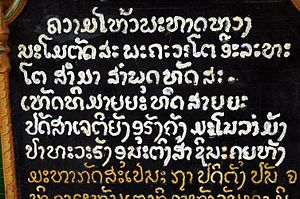
The official language of Laos is Lao (ພາສາລາວ pháa-sǎa láo ), a tonal language closely related to Thai . The Thai dialect spoken in the northeastern Isaan region of Thailand, historically a part of greater Laos, is in fact very similar to Lao.
French , a legacy of the colonial days, is spoken by the elderly and is taught in schools in Laos, but its use is gradually being supplanted by English. French is often used in government and commerce, and French is often used to transliterate Lao words.
English is gradually becoming popular, but proficiency in the language is generally poor. Try to speak slowly and carefully so that people can understand you. In some tourist areas, you can expect to come across school children who are eager to practice their English skills with you. They may, after a conversation, ask you to sign a form or pose for a photo with you as proof that this conversation took place.
Thai is widely understood by Laotians, largely because Thai media is popular in the country. If you are a speaker of Thai , you should have no problems getting around independently and picking up the language easily.
There are two main ways to turn the Lao script into the Latin alphabet: either French-style spellings like Houeisay , or English-style spellings like Huay Xai . While government documents seem to prefer the French style, the English spellings are becoming more common. The latter is used on Wikivoyage. Two quick pronunciation tips: Vientiane is actually pronounced "Wiang Chan", and the letter x is always read as an "s".
Like in neighboring Thailand , local pronunciation of the English word "twenty" often causes confusion by sounding a lot like "seventy".
Get in [ edit ]
Laos is one of the easiest countries in the world to visit — virtually everyone, save for citizens of a few countries, can enter the country visa-free or obtain a visa on arrival.
Visas [ edit ]
Citizens of the following countries may enter Laos without a visa for tourism provided they do not stay for longer than the following number of days:
- 14 days: Myanmar
- 15 days: Japan , Luxembourg , Switzerland
- 30 days: Brunei , Cambodia , Indonesia , Malaysia , Mongolia , Philippines , Russia , Singapore , South Korea , Thailand , Vietnam
See the website of Lao Immigration for more details. Visitors of all other nationalities require a visa.

Visa on arrival [ edit ]
Laos immigration provides a list of border checkpoints where a visa on arrival is available. A visa on arrival is available to most nationalities entering at the airports in Vientiane , Luang Prabang , Pakse and Savannakhet . Some (but not all) land border crossings also offer a visa on arrival, see below for listings. One passport photo is required although you may be able to pay a US$1 fee for your passport photo to be scanned upon arrival.
As of Nov 2023, the price of a visa on arrival is US$40 for all except the following nationalities (this excludes countries not eligible for visa on arrival and those with a visa exemption for 30 days):
- China, Vietnam: US$20
- All other Nationals: US$40
Paying in Thai baht (1,500 baht ~ US$47 in Jan 2019) is possible too, but the mark-up means that travellers should try to bring U.S. dollars. While Lao kip are usually not accepted for the visa fee, border staff does make exceptions sometimes, however at a bad rate. A US$1 "out of office hours/overtime" surcharge at the Friendship Bridge in Vientiane , and a small possibly 10 baht to US$1 entry stamp fee might also be charged.
e-Visa [ edit ]
All visitors eligible for visa on arrival can alternatively apply for an e-Visa in advance online. The eVisa website has its own list of border checkpoints that accept eVisas for entry into Laos. The website requires you to submit a scan of your passport and a passport photo, and processing time is 3 business days. However, e-Visas are around US$15 more expensive than visa on arrival, and can only be used at a limited number of border crossings (as of 2023, only 8 border crossings accept eVisas, including all 3 international airports). The only selling point is really convenience, since you can head straight to the special immigration counter set aside for those with eVisas, and you don't need to queue up, sort out passport photos and pay cash on arrival.
Visa from the embassy [ edit ]
Finally, visas can be obtained in advance from Lao embassies or consulates. The fee varies by nationality and by embassy; US$40 is common, although can be as high as US$63 (in Kuala Lumpur). Processing times also vary; 2-3 days is typical, though you may be able to pay an extra small amount (around US$5) to receive the visa in as little as one hour. In Phnom Penh the travel agencies can arrange the visa the same day (but may charge as much as US$58) while getting it from the embassy takes a few days. Getting a visa from the embassy in Bangkok costs around 1,400 baht for most nationalities, plus 200 baht more for "same day" processing. It's cheaper and quicker to get a visa at the border , but if you're not eligible for VOA, going via an embassy is the only option.
Visa extension [ edit ]
Entry permit extensions (sometimes referred to as "visa extensions") are available from the Immigration Department in Vientiane , Luang Prabang or Tha Khaek , the Police Station in Pakse , and possibly other cities. Extensions are not possible in Laos' second city, Savannakhet , although you can do a border run from there to Thailand to get a new 30-day visa. The cost is US$2.50 per day plus a small "form fee" ranging between 5,000 kip (Pakse) to 30,000 kip (Vientiane). The process is very easy; turn up in the early morning with your passport and one photo; fill in a form (in Luang Prabang they do this for you) and come back in the afternoon to collect your passport with an extension stamp in it. If you do this in the late morning or later in the day, your passport will be ready the following day.
If you want to extend for longer than two weeks and are near the Thai border, it can be more cost effective to nip over the border (entry to Thailand is free for most Western nationalities) and return immediately to get a new 30-day Lao visa since a 30-day visa extension costs US$75 .
By plane [ edit ]
Direct flights to Laos are limited and often expensive.
Those two international airports are served by national carrier Lao Airlines and a few others, including Thai Airways , Bangkok Airways (Luang Prabang only) and Vietnam Airlines . Some seats on flights of Vietnam Airlines are reserved for Lao Airlines (codesharing/better price).
Singapore Airlines's low-cost subsidiary Scoot has regular service from Singapore to Vientiane. There are also regular round trip flights from Vientiane to Kunming, China and Incheon, South Korea on Lao Airlines and other carriers. Low-cost carriers AirAsia flies to Vientiane from Kuala Lumpur three times a week, and offers daily flights from Bangkok to Luang Prabang. Another cheap option for getting to Vientiane is to fly to Udon Thani in Thailand with discount airlines Nok Air or Air Asia and connect to Nong Khai and the Friendship Bridge via shuttle service directly from the airport (40 minutes); from here, Vientiane is 17 km (11 mi) away.
By train [ edit ]
From china [ edit ].
A new railway line from Kunming , China to Vientiane opened in December 2021. Passing through Pu'er , Jinghong , Mengla and crossing the Chinese border at Mohan / Boten , the line serves Luang Namtha , Muang Xay , Muang Nga , Luang Prabang , Muang Kasi , Vang Vieng , Phonhong and Vientiane on the Laotian side.
Cross-border passenger services began operating in April 2023. The train runs at speeds of up to 160 km/h, covering the distance from Kunming to Vientiane in 10 hr 30 min, though you will have to get off the train at Mohan and Boten to complete Chinese and Lao border formalities respectively. Note that Boten railway station does not provide visas on arrival, though e-Visas are accepted for entry.
From Thailand [ edit ]
There is a bridge across the Mekong from the Thai town of Nong Khai to Thanaleng near Vientiane . There are two shuttle services per direction per day, with one timed to connect to the night trains from Bangkok . Visa on arrival is NOT available when crossing the border by train and you must go back to the road crossing by car. Bargain hard. The train is not a very attractive option because the railway station is in the middle of nowhere, however, there are shuttle buses to take you the rest of the way. An extension of the aforementioned Kunming-Vientiane railway line onward to Bangkok is under construction, but completion is still years away.
By land [ edit ]
Most border crossings open for foreigners , with an indication where visas on arrival can be issued, are listed on the web site of the National Tourism Administration . This list is unfortunately incomplete.
Cambodia [ edit ]
Visa on arrival for Laos is available when entering from Cambodia overland, with an official "Visa on Arrival" office incorporated into the checkpoint. The nearest Cambodian town is Stung Treng , and the border is a 60- to 90-minute bus ride away. The border is lightly used, with almost no onward public transport available once you passed through immigration, therefore it may be wise to book transport all the way to Ban Nakasang or Pakse depending on your destination.
If you're buying a ticket from a destination in Cambodia to one in Laos (the most common being Siem Reap/Phnom Penh to Don Det) and you want the border crossing to be as trouble-free as possible, accept that you will have to additional bribes that usually add up to at least US$5 on top of the visa-on-arrival fee applicable to your nationality, current as of 2019. Not including possible mark-ups for the visa, the charge consists of:
- $2 "stamp fee" on the Lao side
- $2 "stamp fee" on the Cambodian side
- $1 "assistance fee" for the facilitator as he gets the Lao visa and entry stamp for you
This is the best case scenario: the "assistance fee" may also be $2 depending on the bus company used, and/or the facilitator will demand a higher total to account for the inflated visa price. While you can decline to use a facilitator, you will nevertheless be asked for the unofficial fees by the immigration officials, as the facilitator merely collects them on their behalf to "speed up the process".
It is possible to at least circumvent the unofficial fees on the Cambodian side – several reports suggest that the Cambodian officials are quick to give in if you refuse to pay the fee; it seems easiest if you can convince them that you simply don't have any dollars left.
Little public information exists for the Lao side. The officials may or may not try to overcharge you for the visa on arrival. For Canadians, this can oddly result in paying less than the official price of US$42. One traveller reported that officials, at least on one occasion, seemed to use US$30 (the official price for most eligible nationalities) as the baseline for passports from Western countries, but then asked a Canadian citizen for US$35 instead. Whatever your nationality, do make sure you know what visa price applies to your passport before you hop on the bus to this border.
Furthermore, it is unknown whether one can refuse to pay the inflated visa fee (if applicable), the unofficial stamp fee, be successful and be still able to find onward transport to Ban Nakasang, although this definitely works the other way round (coming from Laos, going to Cambodia). Getting held up by not paying will likely see your bus leave without you.
For those who want to stand their ground and don't mind possibly having to wait for a few hours in order to beat corruption, there is an option worth trying: Book your transport with any operator to the border only, ideally from Stung Treng with a departure in the morning to have time on your side. Enquire with travel agencies or online to book your separate onward transport from the border going North, and make sure it only leaves two to three hours after your arrival at the border. Alternatively, if you're feeling the stars are aligned in your favour, you may be able to catch a minivan or tuk-tuk that some travellers use to get independently to the border from the Lao side; it's unlikely to happen after lunchtime though.
Another pitfall of the journey to the border is that you will often have four changes of bus (number depending on your origin – some vehicles are small minibuses where passengers have to sit on each other's laps), and hours spent driving to remote guesthouses to pick up backpackers. Asia Van Transfer (AVT) was set up by a foreign expat and has built a good reputation for not letting passengers wait unnecessarily, not letting them change vehicles and also not overbooking seats, but this means they're also a bit pricier; also, they cannot drive into Laos.
If your luggage has been sent in a bus you are not on, because of "lack of space", it will sometimes disappear. The "King of Bus Company" is known to do this.
China [ edit ]
The land crossing between Mengla (Yunnan) and Boten (Laos) is open to foreigners and visa on arrival is possible or you can get in advance at the Lao consulate in Kunming . In addition to the train (above), a daily bus service operates from Mengla to Luang Namtha and Udomxai . Buses from Mengla to Luang Namtha leave from the North bus station. The first bus leaves around 08:00 and costs about ¥40.
Generally speaking, it is not possible for independent travellers to cross from China to Laos via the Mekong River, not least because there's a chunk of Myanmar in the middle and the Lao checkpoint at Xieng Kok does not issue visas on arrival. Travel agents in China run irregular cruises from Jinghong (China) via Chiang Saen (Thailand) to Huay Xai (Laos), but schedules are erratic and prices expensive.
Myanmar [ edit ]
The Myanmar-Laos Friendship Bridge is the sole official border crossing between Myanmar and Laos. The bridge connects Shan State in Myanmar with Luang Namtha Province in Laos, in a very remote region for both countries, and information on when (or whether) the crossing is operating is hard to find. The official Laos immigration website indicates that a Laotian visa on arrival is available at the border, though Laotian eVisas are not accepted for entry.
Thailand [ edit ]
There are eight border crossings open to all between Thailand and Laos. From north to south:

- Huay Xai / Chiang Khong : Using the fourth Friendship Bridge is the usual overland route to Luang Prabang, easy bus connections to Chiang Rai and points beyond on the Thai side.
- Ban Pangmon / Ban Huak : Located on a remote mountainous road. If you want to travel overland from Chiang Mai to Hanoi overland via Laos, this is one possible route. No visa on arrival .
- Muang Ngeun / Huay Kon : At 152 km, the nearest to Nan , a worthwhile destination in Northern Thailand. Also, 40 km away from Pak Beng in Laos. Walking distance between checkposts, and very friendly officers due apparently to very low tourist use.
- Nam Hueng / Tha Li : Easily reached via Loei on the Thai side, but 378 km of poorly sealed road away from Luang Prabang . No visa on arrival . The 'mandatory' tuktuk service, charging 30 baht for a several minutes' ride across the bridge, can be avoided with some assertiveness.
- Vientiane / Nong Khai : The first Friendship Bridge and the busiest of crossing of them all. Direct trains from Bangkok now available.
- Paksan / Bueng Kan : No visa on arrival .
- Tha Khaek / Nakhon Phanom : The third Thai-Lao Friendship Bridge.
- Savannakhet / Mukdahan : The second Thai-Lao Friendship Bridge.
- Vang Tao / Chong Mek : On the route from Pakse to Ubon Ratchathani .
Note: if crossing from Thailand into Laos by motorcycle, it is necessary to hire a customs agent to expedite the process. Individuals or groups trying to cross the border with motorcycles will be refused entry by customs if they do not use an agent.
Vietnam [ edit ]
There are several border crossings that can be used by foreigners. These include:
- Donsavanh - Lao Bao - to Savannakhet
- Keo Nua Pass
- Lak Sao - to Khammouan Province
- Nam Can - to Plain of Jars
- Na Meo - to Sam Neua
- Pang Hok - Tay Trang (close to Dien Bien Phu , the site of a famous battle where the French were defeated by Vietnamese independence fighters)
- Bo Y (nearest town on Vietnamese side being Ngoc Hoi and on Lao side Attapeu)
- Nam Phao - Cau Treo
Travellers have reported a 10,000 kip "weekend fee" being charged by Lao border officials for crossing on the weekend. No receipt is given.
By motorbike from Vietnam [ edit ]
The border crossing on a Vietnamese motorbike at Tay Trang is very easy and straightforward. You arrive after going over some hills at the Vietnamese border where very friendly guys handle your case easily and with no hassle. You fill out the form for "temporary export of a vehicle", show them the Vietnamese registration card for the bike (which is usually in the owners name) and pay US$10. Then you proceed to the police, show the papers to them and get the exit stamp.
You then have to drive for 6 km over the mountains to get to the Lao checkpoint. There some not-so-friendly border guards there who expect you to pay 5,000 kip for general fees and 25,000 kip for importing a vehicle. They fill out the form themselves.
Get around [ edit ]
Travel within Laos has historically been slow, often painful and sometimes dangerous, but the 2021 opening of a railway spanning the northern half of the country and the ongoing construction of a parallel expressway is set to shake things up. Nevertheless, if travelling off the beaten track, allow plenty of leeway in your schedule for the near-inevitable delays, cancellations and breakdowns.

State carrier Lao Airlines has a near-monopoly on domestic flights. They managed a 13-year accident-free streak until an October 2013 crash near Pakse resulted in 49 fatalities, the country's deadliest air disaster. The fairly comprehensive network is by far the fastest and, relatively speaking, the safest way of reaching many parts of the country, although the new train line (see below) now offers some real competition.
As of 2013, the popular Vientiane - Luang Prabang route costs about US$101 (one-way full fare for foreigners), but covers in 40 minutes what would take you at least ten hours by bus. However, the new high-speed train connects these two places for only US$12, and takes 2 hours.
Flights to more remote destinations are flown on the Xian MA60, a Chinese copy of the Soviet An-24, and are frequently cancelled without warning if the weather is bad or not enough passengers show up.
Lao Airlines also flies 14-passenger Cessnas from Vientiane to Phongsali , Sam Neua and Sainyabuli ( Xayabouly ) several times a week. These airfields are all rudimentary and flights are cancelled at the drop of a hat if weather is less than perfect.

The first railway in Laos, the Chinese-built Lao-China Railway crossing the northern half of the country from the Chinese border at Mohan / Boten via Muang Xay , Luang Prabang and Vang Vieng to Vientiane opened in December 2021.
Both electric/high-speed (EMU) and ordinary trains operate, with the EMU services at up to 160 km/h per hour, making this by far the fastest and most comfortable way to travel in Laos. As of April 2023, there is one high-speed "C" train and one normal "K" train per daily running the length of the line, with one additional high-speed "C" service between Vientiane and Luang Prabang only, and two additional "C" trains running between Vientiane and Muang Xai only. The international "D" train between Vientiane and Kunming may also be ridden by domestic passengers, but skips the stop at Muang Xai. that Sample travel times and fares in kip as of October 2022:
The railway is very popular, and demand always exceeds capacity. The easiest way to buy tickets is to go through a travel agency, who will handle all the paperwork for a service charge of around US$4 per ticket. Discover Laos has a good reputation and can deliver tickets to your hotel in advance. Baolau offers fully self-service online ticketing, but you will still have to pick up paper tickets in person. First class gets you wider seats (2+2 seating instead of 2+3) but very little else; however, it often has better availability than second class.
If you wish to try your luck, a new ticket office opened in Vientiane Center in February 2022, where you can purchase tickets for trains up to 3 days in advance. As of February 2022, only tickets to Boten, Muang Xai and Luang Prabang can be bought at the Vientiane Center office, while tickets for all other destinations can only be bought at the station. The Vientiane Center office also does not accept cash payments, and payments can only be made using a UnionPay credit card, Chinese mobile payment apps WeChat Pay or Alipay, or the OnePay mobile payment platform of Lao bank BCEL. You can use the Loca app to pay with OnePay, but will pay a large commission, or you can try using the LCR Tickets app which allegedly accepts Visa cards. Despite all this hassle, you may still end up empty-handed, as scalpers frequently buy up all the tickets. If you're in a pinch, try your luck at the train station, as unsold same day tickets may reappear in the inventory.
The trains operate on the same model as Chinese high-speed railways, with strict ID and security checks at the entrance to train stations. Baggage will be scanned and while liquids are OK, pressurized sprays or alcohol will be confiscated. Facilities at stations are minimal to non-existent, and so bring everything you'll need with you, including food and drink. Some trains have trolleys hawking banana chips and sandwiches, but you can't count on these either. More info here .
One final quirk: be sure to hold onto your ticket , as you'll need to show it again on leaving the station or risk getting fined the price of a new one!
By road [ edit ]
By public transport [ edit ].
The main routes connecting Vientiane , Vang Vieng , Luang Prabang and Savannakhet are sealed, and the transport options on these roads include bus, minibus, and converted truck. The first expressway in Laos now connects Vientiane to Vang Vieng and is slowly being extended north towards Luang Prabang, but the full length to the Chinese border will not be ready until the 2030s.
A good source of bus timetables, including some basic town maps, can be found at hobomaps.com
Some common routes through Laos include:
- Vientiane to Vang Vieng – now connected by a direct 113 km expressway, less than 1.5 hours by direct VIP bus
- Vang Vieng to Luang Prabang – amazing scenery through the mountains, at the cost of a long 8-hour trip full of curves.
- Luang Prabang to Phonsavan - minibus: a cramped 7-hour trip, so arrive early to get good seats as near the front as possible; beautiful views so secure a window seat if possible. Bus is 8 hours.
- Phonsavan to Sam Neua - converted pickup truck: beautiful views but lots of hills and bends, hence possible nausea
- Sam Neua to Muang Ngoi - minivan: a 12-hour trip along a horrible road; good views and a necessary evil, but fun if you're prepared to get a few knocks and talk to some Lao people who are, after all, in the same boat
- Muang Ngoi to Luang Namtha - Minivan: 10-hour trip (Oudomxay); OK road, much travelled by backpackers
- Luang Namtha to Huay Xai - once a muddy nightmare, now rebuilt and one of the best roads in Laos, 3-4 hours
- Paksan to Phonsavan - there is a new road between Borikham and Tha Thom. In Tha Thom there is a guesthouse with 8 rooms. The forest between Borikham and Tha Thom is still in a very good condition, but it's a dirt road. Since most of the forest in Laos has gone this is one of the last roads surrounded by primary forest. There are substantial road works being undertaken by the Vietnamese between Paksan and Phonsavan and there can be some fairly long delays along the way. Even though the trip is only a couple of hundred kilometres it can take 16-20 hr to traverse this section.

Local transport (less than 20 km) in Laos consists of tuk-tuks, jumbos, and sky labs, motorised three or four wheelers. A jumbo should cost no more than 20,000 kip for short journeys of 1-5 km.
You can now also travel the entire length of the country using a fully guided "hop on hop off" bus service provided by Stray Travel . This is the only guided hop on hop off bus in Southeast Asia.
Women should be aware that often during lengthy bus or minibus trips there is no opportunity to go to the toilet during breaks, so it may be advisable to wear a wide skirt.
By ride-hailing [ edit ]
The main ride-hailing app in Laos is LOCA . You can pay by cash or use a credit card to pay through the Loca app. Well-known ride-hailing apps found elsewhere in Southeast Asia, such as Grab, do not operate in Laos.
By songthaew [ edit ]
A songthaew (ສອງແຖວ) is a truck-based vehicle with a pair of bench seats in the back, one on either side — hence the name, which means "two rows" in Thai. In English tourist literature, they're occasionally called "minibuses". By far the most common type is based on a pick-up truck and has a roof and open sides. Larger types start life as small lorries, and may have windows, and an additional central bench; smaller types are converted micro-vans, with a front bench facing backwards and a rear bench facing forwards.
Songthaews are operated extensively as local buses, and generally are the most economical way to travel shorter distances. There also as taxis; sometimes the same vehicle will be used for both. Be careful if asking a songthaew to take you to someplace if there is nobody in the back, the driver might charge you the taxi price. In this case, check the price before embarking.
By tuk-tuk/jumbo [ edit ]
The names tuk-tuk and jumbo are used to describe a wide variety of small/lightweight vehicles. The vast majority have three wheels; some are entirely purpose-built, others are partially based on motorcycle components. A tuk-tuk organisation in Vientiane controls the prices that tourists are expected to pay for point to point destinations. The rates are negotiable, and you should agree on the price prior to getting on the tuk tuk.
By motorbike [ edit ]
Motorbike travel in Laos is not without risks but the rewards of truly independent travel are great. There are several rental shops in Vientiane, Luang Prabang , Pakse and Tha Khaek , but bike rentals in other parts of the country may be scarce. The quality of machines varies from shop to shop so you need to fully inspect it before you head out on the road. There are many good roads and many paved ones and touring Laos is done easily.
There are a variety of bikes available in Laos, depending on which town and rental shop you go to. Some available include the Honda Baja or XR 250 dual-purpose bikes, Ko Lao 110 cc and the usual Honda Win/Dream 110 cc. Helmets are not only mandatory in the country but a valuable item in a place where traffic rules are made up by the minute. Police have been cracking down on people who do not have a motorcycle licence, so expect to pay a fine if caught without one.
Petrol costs 9,000 kip/L (diesel 8,000 kip/L) as of Mar 2020.
By bicycle [ edit ]
Cycling is a great option with quiet roads. Laos offers wonderful remote areas to discover, little traveled roads, friendly people and even some companies providing cycling tours with the help of professional guides all over the country. The more time people seem to spend in Laos the more they seem to like the quiet travel mood and the opportunity to actually be in contact with the people along the way. Good maps are available about the roads in Laos and all major routes are with good roads. In normal distances you find simple guest houses and in all major towns better choices and restaurant. Food is not a problem as long as you remember to carry some stuff with you. Tropical fruits and noodle soup are the standards.
There are a number of local operators running a wide selection of guided mountain biking tours through Laos.
If you travel on your own, there are very few proper bike shops outside of Vientiane. but also for bikes with 28-inch wheels you might have a hard time. Bring your equipment with you and make sure you get contact details from a supplier, perhaps in Thailand.
By boat [ edit ]
Boats along the Mekong and its tributaries are useful shortcuts for the horrible roads, although as the road network improves river services are slowly drying up, and many of the remaining services only run in the wet season, when the Mekong floods and becomes more navigable. Huay Xai on the border with Thailand to Luang Prabang and travel south of Pakse are the main routes still in use.
There are so-called slow boats and speedboats - the latter being tiny lightweight craft equipped with powerful motors that literally skid across the water at high speeds.
By slow boat [ edit ]
Many people go from Chiang Khong in Thailand via the border town of Houai Xai down the Mekong to the marvelous city of Luang Prabang . The ride takes two days and is very scenic. Apart from that, it is a floating backpacker ghetto with no (good) food sold, cramped, and hot. By the second day, the novelty has worn off. Recommended to bring a good (long) read, something soft for the wooden benches and patience.
Slow boats generally stop in the village of Pakbeng for the night. Some boat packages will include accommodation, although this is usually at an inflated rate. By arranging a hotel in the town, it is easy to get a lower price. Most shops in Pakbeng shut down at about 22:00, so expect to get a good sleep before the second day's boat ride. This is also a good place to stock up on supplies.
The boats have considerably improved. They now have soft used car seats, and serve pre-fab food, which is not great, but certainly sufficient.
By speedboat [ edit ]

An attractive choice for some, with a 6-hour ride from Huay Xai to Luang Prabang , as compared to the two-day trip on the slow boat, but not for the faint of heart. Expect to be crammed into a modified canoe made for 4, with 10 other people, along with all the luggage somehow packed in. Expect to sit on the floor of the canoe, as there are no seats, with your knees against your chin for the full 6 hours. Expect an incredibly loud engine inches behind your head. Expect the engine to break a few times, and stops for delays to fix it. That being said, when this ride finally ends, if you make it with no trouble, you will never be happier to get to Luang Prabang. Stories of small, overloaded speedboats sinking or hitting driftwood are common, but if you are a good swimmer, take comfort in the fact that you can see both shores throughout the entire trip. So, as you see, choosing between the slow boat and the speedboat is a hard call, based mostly upon your comfort level; would you prefer a slow unpleasant trip, or a much faster, but more dangerous unpleasant trip. Either way, the scenery along the way is gorgeous and unexploited, and Luang Prabang is an incredible city, worth a thousand of these journeys.
Though helpful in saving time, speedboats are not without danger: built to carry 8 passengers, they are often overloaded; the engine noise is well above a healthy level, which could be a serious hazard to your ears, especially if you are on the boat for a long time. It also causes considerable noise pollution, scaring wildlife and spoiling the peaceful river life. Fatalities resulting from capsize due to incautious maneuvering, or hitting floating logs or hidden rocks, have been reported but some claim and are exaggerated by competing slow boat owners. However, the vast majority of speedboat users have no serious problems. If you are taller than the average Laotian are a bit claustrophobic and/or have inflexible leg muscles you are guaranteed an extremely uncomfortable experience for several endless hours.
Suggestions for those who decide to take the risk:
- get one of the front seats as they allow you to stretch your legs and are far from the noisy motor
- wear helmets and life jackets; reconsider your journey if these are not provided
- bring a coat in the cold season, the strong wind can make you feel cold even at temperatures of 25 °C.
- bring earplugs
- protect water-sensitive equipment as you might get wet.
By car [ edit ]
Road accidents are common. The main causes are poor vehicle maintenance and careless driving. Road conditions vary and some roads are in very poor condition. A large proportion of road accident victims were travelling on a tuk-tuk, motorcycle or scooter. Driving at night is particularly dangerous because of the lack of street lights, high speeds and disregard for traffic rules. Heavy traffic at night can lead to dangerous situations.
Be vigilant when travelling on motorways because of the occasional robbery of vehicles.
Find out in advance your driving licence and the driving licence requirements for the different vehicles.
When hiring a vehicle, remember that they are rarely insured. Check the condition of the vehicle at the time of rental with the rental company. The hirer is responsible for any damage caused to the vehicle. Damage claims in the event of an accident are often high. Do not leave your passport as a deposit, but a copy of your passport.
See [ edit ]
Unlike neighboring Thailand or Vietnam , Laos never underwent a massive economic development, neither during colonisation nor even after the liberalisation of the Communist economy. As result, one key attraction of Laos is that most of the country, including the capital Vientiane , retains a relaxed, laid back feel with minimal presence of modern architecture or international brands and food chains. How much longer this will last is open to much speculation, but meanwhile, it makes it a truly special and unique country to visit.
Natural attractions [ edit ]

The term wilderness is much misused, but it can truly be applied to much of Laos. The mighty Mekong river and its tributaries together create perhaps the single most important geographic feature of the country. Its meandering path in the North has created some of the most stunning limestone karsts anywhere on earth. The backpacker-central town of Vang Vieng is a commonly used base for exploring the karsts. Further north, the terrain becomes more hilly, and the jungle less explored. Luang Namtha is the far-northern town which makes the best base for those visitors who really want to see the truly remote Lao wilderness, and directly experience the lifestyles of the various hill tribes in this region.
In direct contrast to Northern Laos, the Mekong delta lowlands in the South are perfectly flat. Si Phan Don ( four thousand islands ) is a great base for experiencing what is surely the most chilled and relaxed region anywhere in Asia. Experiencing local village life, taking it all in and doing absolutely nothing should be the aim here. There are though some wonderful river-based sights, including the largest falls anywhere in Southeast Asia. If you are lucky you might get a close-up view of a Mekong pink dolphin.
Cultural attractions [ edit ]

In this most Buddhist of nations, it is no surprise that temples are a key attraction. In the capital city of Vientiane , the three-layered gilded stupa of Pha That Luang is the national symbol and most important religious monument in the country, dating from the 16th century. There are numerous other beautiful temples which on their own make a stay in the capital city vital for any visitor to Laos.
The whole of the ancient capital of Luang Prabang is a UNESCO World Heritage Site . Befitting that status, it is a unique city. Beautifully preserved gilded temples with their attendant orange-robed monks mold almost seamlessly with traditional wooden Lao houses and grand properties from the French colonial era. Spotlessly clean streets with a thriving café culture on the banks of the Mekong and the Nam Khan, complete the picture of a city which is almost too pleasant to be true.

The Plain of Jars is a megalithic archaeological landscape dating from the Iron Age. Thousands of stone jars are scattered over a large area of the low foothills near Phonsavan . The main archaeological theory is that the jars formed part of Iron Age burial rituals in the area, but this is by no means proven, and a great deal of mystery remains. The area suffered tragic damage from American bombing during the Secret War of the 1960s, and much UXO remains uncleared. When that process is complete it is very likely this will be declared a UNESCO World Heritage site.
Wat Phu is a ruined Hindu Khmer temple complex in Champasak province. It dates from the 12th century and visitors who have been to Angkor Wat will notice the similarities.

Recent history [ edit ]
The town of Vieng Xai provides a striking insight in the recent history of not only Laos, but the whole of Indochina. In 1964, the US began intensive bombing of the Lao communist movement – Pathet Lao – bases in Xieng Khouang. Under much bombardment, the Pathet Lao moved east to Vieng Xai and established their headquarters in the limestone karst cave networks around the town. A whole 'Hidden City' was established which supported around 20,000 people. During nine years of almost constant American bombing, the Pathet Lao sheltered in these caves, and lived in a largely subterranean environment. Schools, hospitals and markets as well as government ministries, a radio station, a theatre and military barracks were all hidden in the caves. After the 1973 ceasefire, Vieng Xai briefly became the capital of Laos, before that function was moved to Vientiane in 1975. There are formal daily tours of the caves, as well as other evidence of that era in the town.
Do [ edit ]
- Herbal Sauna . One Laotian experience definitely worth trying is the herbal sauna. Often run by temples, these are simple-looking affairs, often just a rickety bamboo shack with a stove and a pipe of water on one side, usually open only in the evenings. The procedure for a visit is usually: Enter and pay first. The going rate is around 10,000 kip, plus around 40,000 kip if you want a massage afterward. Go to the changing room, take off your clothes and wrap yourself up in a sarong which is usually provided. Keeping yourself modestly sarong-clad, head over to the shower or water bucket in one corner and wash up. Plunge into the sauna room itself. It will be dark, hot and steamy inside, with intense herbal scents of lemongrass and whatever the sauna master is cooking up that day, and you will soon start to sweat profusely. When you've had your fill, head outside, sip on a little weak tea and marvel at how the tropical heat of the day now feels cool and refreshing. Repeat at will. ( updated Nov 2016 )
- Hiking . Hiking in mountainous Northern Laos is popular, and this often includes homestays in minority tribe villages. The main hub for this is Luang Namtha where the two day Ban Nalan Trail is especially notable. The route goes through the Nam Ha National Protected Area, and involves staying in Khmu villages. Other hiking hubs include Oudomxay , south of Luang Namtha, and Pakse in southern Laos.
- Kayaking . Can be arranged in a wide number of locations. The ambitious traveller could kayak the Mekong between Luang Prabang and Vientiane .
- Rock Climbing . The limestone karst formations in Northern Laos are ideal for rock climbing. Vang Vieng is the main rock-climbing centre but climbs are also possible further north at Nong Khiaw and Mung Ngoi .
- Tubing . Floating down the river on a large inflatable tube is one of the attractions of the SE Asia backpacker circuit. The hugely popular stretch of the Nam Song at Vang Vieng is lined with bars that lure you and your tube in with ziplines, water slides, loud music, buckets of terrible local whiskey, and unlimited Beerlao. After numerous tourist deaths, crackdowns on Vang Vieng tubing were announced in Aug 2012. Since then, many river bars have been closed down along with their flying foxes and rope swings. Tubing is still possible, but it's now a lot quieter. Whether this is a long or short-term result is still to be seen. Tubing can also be found in other locations around Laos including Si Phan Don , Nong Khiaw and Mung Ngoi .
Buy [ edit ]
Money [ edit ].
The Lao currency is the kip (ກີບ), officially denoted by the symbol " ₭ " (ISO code: LAK ). Wikivoyage articles use kip to denote the currency.

The largest note is 100,000 kip (around US$5). Other notes in common circulation are 1,000, 2,000, 5,000, 10,000, 20,000 and 50,000 kip. Withdrawing the maximum of 2,500,000 kip from an ATM could result in 25 100,000-kip notes. This makes carrying large quantities of kip quite inconvenient. In speech, it's common to drop the final three zeroes, so "20" means 20,000.
The Lao kip is a non-convertible currency, meaning that outside border towns, it's very hard to exchange kip in other countries, and rates can be poor even in Laos itself. It's best to exchange any excess kip before leaving the country. There are currency exchange counters at both Vientiane airport and the Nong Khai-Vientiane land border (straight and right of the Visa on Arrival desk).
Foreign currencies [ edit ]
The only official currency of Laos is the kip, but rampant inflation post-COVID has made hard currencies attractive again. Some hotels and tour agencies are now requesting payment in U.S. dollars, and many touristy shops will also happily accept Thai baht (near the border) and even the euro as well. If you use a credit card, payment will often be in USD. In remote places, only kip is accepted and no ATMs will be available, so plan ahead.
ATMs [ edit ]
There are ATMs in Vientiane and other major cities including Luang Prabang, Vang Vieng, Savannakhet, Tha Khaek, Pakse and Luang Namtha. BCEL , the largest bank, accepts Visa/Cirrus and MasterCard/Maestro, but surcharges of 20,000 kip (Mar 2020) often apply. Most banks have a limit of only 1 million kip, but BCEL ATMs allow you to withdraw up to 2.5 million kip at once.
In the following the ATM fees charged by several banks (as of Jan 2023):
- BCEL – withdrawal fee 20,000 kip
- Phonsavan Bank – withdrawal fee 20,000 kip, maximum limit 1,000,000 kip
- LDB – withdrawal fee 30,000 kip
- Indochina Bank – withdrawal fee 20,000 kip, maximum limit 3,000,000 kip
- Laoviet Bank – withdrawal fee 20,000 kip, maximum limit 1,000,000 kip
Expats living in Vientiane routinely get cash from ATMs in Nong Khai or Udon Thani in Thailand, where the maximum per transaction is mostly 20,000 baht, or ten times what you'll get in Laos.
Conversion rate at ATMs is usually about 5-7% worse than the market rate. So, it may make sense to exchange cash instead considering that at some border crossings from Thailand you get Lao kip at the market rate.
Cash advance [ edit ]
Many banks, travel agents and guest houses will allow you to take out cash from a credit card as a cash advance. This usually occurs by withdrawing the money in US dollars from the card as a cash advance; the card issuer will usually charge a fee (about 3%), the Lao bank involved will charge about 3%, and then the agent providing the cash advance might or might not charge another 3%, and then the amount is converted from US dollars to kip at an unfavourable rate, costing another 5% or so. Thus, these transactions are much more expensive than the typical charge for withdrawing cash from ATMs in other countries. Getting a cash advance in US dollars and changing it to kip might save money compared to bringing euros with you to Laos.
Cash [ edit ]
The use of ATMs and credit cards in banks is subject to computer operation, staff computer skills, power cuts, telephone network breakdowns, holidays, etc. A few visitors have been forced out of the country prematurely as they couldn't withdraw funds to continue their travels. Always bring some cash. Changing money can be next to impossible outside major towns.
Money exchange [ edit ]
Banks give good rates, and private exchange booths are common in the major tourist areas. The U.S. dollar is by far the best currency to exchange, with tight spreads and competitive rates. Thai baht and other hard currencies like euros are accepted, but the rates will be worse.
Try to bring the newest and shiniest notes you can, since money changers will reject bills that have even small marks and tears.
Shopping hours [ edit ]
Many shops start an hour's lunch break at noon, and some maintain the (now abolished) official French two-hour break. Nearly everything is closed on Sundays, except restaurants and many shops.
Costs [ edit ]
Prices tend to be lower in Laos than in neighboring countries, though standards might be lower as well. Prices are lower in smaller towns and villages than in tourist centers like Luang Prabang and Vientiane .
A budget of US$40 a day is a good rule of thumb, though it's possible to get by on far less. Excluding transport costs, living on US$15/day isn't difficult.
A basic room with shared bath can be as little as US$6 in Vang Vieng or as much as US$10-15 in Vientiane or Luang Prabang . Meals are usually under US$5 for even the most elaborate Lao, Thai or Vietnamese dishes (Western food is more expensive), and plain local dishes cost US$2-3. A local bus from Vientiane to Vang Vieng costs US$5; a VIP bus from Vientiane to Luang Prabang costs US$20; the slow boat from Luang Prabang to Huay Xai costs US$25.
Unlike in Thailand, access to temples in Luang Prabang is not free, but typically costs US$1-2. In Vientiane only the more famous temples charge an entry fee.
Outside of tourist centres, rooms can be found for US$2.50, and even at Si Phan Don for US$5/night. Large noodle soups are around US$2, and a typical price for large bottles of Beerlao is US$1.
For some products Laos is more expensive than Thailand and Cambodia as most goods, petrol, and food is imported from Thailand and Vietnam.
What to buy [ edit ]
Typical Lao dresses in cheap machine-made fabric can be made to order. Expect to pay around US$5 for the fabric and US$2 for labour. Handmade Lao silk is one of the most attractive things to buy. The talat sao (Morning Market) in Vientiane has dozens of small shops selling 100% handmade silk scarves or wall hangings from US$5 upwards depending on quality, intricacy of design and size. Beware cheap synthetic fabrics sold as silk imported from China and Vietnam. Be skeptical when shopping for items made from "antique silk". They are usually fake, but still attractive, but don't pay more than US$30-50. In markets, bargaining is always expected. Do not lose your cool: just keep smiling.
Eat [ edit ]

Lao food is one of the underappreciated cuisines of the world and can be a real highlight of your trip. It's very similar to the Isaan food of northeastern Thailand: very spicy, more often bitter than sweet, and using lots of fresh herbs and raw vegetables. These cool your mouth when the chilli gets too intense.
Rice is the staple carbohydrate. The standard kind is sticky rice (ເຂົ້າໜຽວ khao niaow ), eaten by hand from small baskets called tip khao . Using your right hand, never your left, pinch off a bit, roll into flat disk, dip or wrap and munch away. Sticky rice is so important culturally that it's the standard offering to monks and the Lao even call themselves "children of sticky rice" ( luk khao niaow ).
The national dish is laap (ລາບ, also larb ), a "salad" of minced meat or fish mixed with herbs, spices, lime juice and, more often than not, blistering amounts of chili. Unlike Thai larb , the Lao version can use raw meat ( dip ) instead of cooked meat ( suk ), and if prepared with seafood makes a tasty, if spicy, carpaccio.
Another Lao invention is tam maak hung (ຕໍາຫມາກຫຸ່ງ), the spicy green papaya salad known as som tam in Thailand, but which the Lao like to dress with fermented crab (ປູດອງ pudem ) and a chunky, intense fish sauce called pa daek (ປາແດກ), resulting in a stronger flavour than the milder, sweeter Thai style. Other popular dishes include ping kai , spicy grilled chicken, and mok pa , fish steamed in a banana leaf.
Sausages are very popular in Laos. The most common is sai oua (ໄສ້ອັ່ວ), a grilled sausage made from pork, sticky rice and herbs, which pairs beautifully with the local beer and is a fixture at drinking holes. More challenging to the Western palate are sai gork (ໄສ້ກອກ) and naem (ແໜມ), both prepared by fermenting raw pork and thus quite sour in taste.
Laos also boasts a range of local desserts. Kanom kok is a small, spherical pudding made from coconut milk, tapioca and ground rice. Sang kaya mayru is a pumpkin filled with a sweet custard and then steamed. The pumpkin itself is also sweet, and the resulting mixture can be quite delicious. Sticky rice with mango or durian is also a popular snack.
In addition to purely Lao food, culinary imports from other countries are common. Khao chī pate (ເຂົ້າຈີ່ປາເຕ້), French baguettes stuffed with pâté, and foe (pho) noodles from China are both ubiquitous snacks particularly popular at breakfast. Foe can refer to both thin rice noodles (Vietnamese pho), and to the wide flat noodles that would be called guay tiow in Thailand.
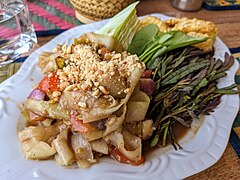
Where to eat [ edit ]

Vientiane and Luang Prabang have many Western-style restaurants serving up classy versions of Lao food and international favorites. French food is well represented, with bakeries particularly common. The influx of Chinese investment has also brought along many authentic Chinese restaurants , although navigating the menus in these can be a challenge if you speak neither Chinese nor Lao.
Any Lao town of size has a night market (ຕະຫຼາດກາງຄືນ talat kangkhun ) operating from sunset until 10 PM or so, serving up cheap and easy meals, with lots of barbecued stuff on a stick and beer. Much of this food is prepared and kept in less than hygienic conditions though, so use some caution when choosing what to eat. Morning markets (ຕະຫຼາດເຊົ້າ talat sao ) have lighter fare, with noodles and stuffed baguettes particularly common.
Dietary restrictions [ edit ]
Laos is a tough place if you have any sort of dietary restrictions. Outside a few dedicated vegan places in Vientiane and Luang Prabang, fish and shrimp based sauces are ubiquitous and even Buddhist monks typically eat meat. Dairy is easily avoided though, since it's never used in traditional Lao cooking.
Drink [ edit ]

The national drink of Laos is the ubiquitous and tasty Beerlao , made with Laotian jasmine rice and one of the few Lao exports. It maintains an almost mythical status among travellers and beer aficionados. The yellow logo with its tiger-head silhouette can be seen everywhere, and a large 640 ml bottle shouldn't cost more than US$1-2 in restaurants. In addition to the original, it's now available in a constellation of flavors: light, dark, white (wheat), even an IPA!
Rice spirit, known as lao-lao , is everywhere and at less than US$0.30 per 750 ml bottle is the cheapest way to get drunk. Beware, as quality and distilling standards vary wildly.
Lao coffee ( kaafeh ) is recognised to be of very high quality. It's grown on the Bolaven Plateau in the south; the best brand is Lao Mountain Coffee . Unlike Thai coffees, Lao coffee is not flavoured with ground tamarind seed. To make sure you aren't fed overpriced Nescafé instead, be sure to ask for kaafeh thung . By default in lower end establishments, kaafeh lao comes with sugar and condensed milk; black coffee is kaafeh dam , coffee with milk (but often non-dairy creamer) is kaafeh nom .
Fresh coconut juice is delicious, and soymilk at convenience stores is surprisingly tasty, nutritious, and inexpensive.
There is not much nightlife outside of Vientiane and Vang Vieng, although nearly all restaurants serve beer. Some places may be so laid-back that they will expect you to keep track of what you have drunk, with the odd guest house asking how much you have drunk during your stay upon check out.
Sleep [ edit ]
Accommodation options outside the Mekong Valley's main tourist spots are limited to basic hotels and guesthouses, but there are many budget and mid-priced hotels and guesthouses and quite a few fancy hotels in Vientiane and Luang Prabang. Pakse has the Champasak Palace. Rooms usually start from 60,000 kip (Jan 2023).
Work [ edit ]
Lao work permits are difficult to obtain, unless you can secure employment with one of the numerous NGOs. English teaching is possible but poorly paid (US$5-8/hour).
One of the most interesting ways to get to know a country, and which has become increasingly popular, is to volunteer .
Stay safe [ edit ]
Laos in general is a safe country, in part because violent crime is punished to a significant extent by the government. This said, petty crime remains a concern.
In accordance with the law, you are required to have an identification document on you at all times, and the police have the legal right to ask you for it. What this means: a copy of your national identity card or your passport. If they ask you for it, just give it to them. Failing to produce an identity document on request will result in a fine.
Corruption [ edit ]
Laos is one of the most corrupt countries in the world. Bribery, cronyism, and nepotism are not unheard of and have become accepted practices.
Crime [ edit ]
Laos is considered a low-crime country.
If you are the victim of a crime in Laos, do not expect to be taken seriously; the Laotian justice system is inefficient, lacks accountability, corrupt, and is susceptible to political interference. Government officials, high-profile individuals (VIPs), and those with political connections generally enjoy impunity in Laos.
Do not expect any kind of reliable assistance from Laotian law enforcement authorities and do not expect them to solve your problems; their response to crimes is severely limited by bureaucracy, inadequate training, corruption, low salaries, and a lack of accountability. In addition, expect little to no help if you're not fluent in Lao .
As obvious as it may sound, always behave respectfully to law enforcement authorities, even if they happen to be rude or corrupt. Rudeness will only be responded to with rudeness.
Relationships [ edit ]
Foreigners are not allowed to stay in the homes of Laotian nationals or family members based in Laos without prior permission from the government.
Adultery is punishable by up to a year of imprisonment and a fine. If you've been accused of adultery, you and your partner will be prosecuted.
It is illegal to invite someone of the opposite sex to your hotel room. Hotel staff may call the police on you if you attempt to break this law. That said, you may notice foreigners with Lao partners while in Laos. If you find yourself in the same position, be discreet.
Relationships between Laotian nationals and foreigners are not illegal, however, if you happen to find romance in Laos (which is highly unlikely for most people) you are supposed to submit a formal application to the authorities. Not doing so can result in legal penalties. Foreigners married to Laotians are required to have their marriage certificate authenticated at a Laotian embassy before travelling to Laos.
LGBT travellers [ edit ]
Homosexuality is legal in Laos. Public displays of affection between same-sex couples may be tolerated in large cities like Vientiane , but in smaller towns, homosexuality remains taboo, especially among the Hmong people.
Illegal substances [ edit ]
Laos is at the center of the illegal drug trade; therefore, the country has a huge problem with illegal substances. At some point during the 1990s, it was believed the country was the largest opium producer in the world. Although the government has done a lot to stamp out the illegal drug trade, the country's remote geography, struggling and weak economy, and high level of corruption mean that the issue is very difficult to keep under control.
The following tips will come in handy:
- Never leave your food or drinks unattended , and always be careful when someone gives you food or a drink.
- Be wary of "special" or "happy items" in restaurants ; such dishes may contain opiates.
- Be aware of your surroundings at all times ; do not allow anyone to reach for your pockets or belongings.
- Never leave your belongings unattended , and always pay close attention.
Traffic conditions [ edit ]
Although Laotian traffic laws are strict (at least on paper), driving by the majority of Laotians is wild and reckless .
Speeding, reckless passing, and failure to obey traffic laws are common, as is driving under the influence. In the event you end up in a car accident, do not attempt to flee the scene. It is punishable by up to three years in prison and a fine up to 10,000,000 Kip .
Miscellaneous [ edit ]
- Landmines and unexploded ordnance left over from the Vietnam War maim or kills hundreds of people every year as Laos is the most bombed country in history. Almost all of these occur in the eastern and northern parts of the country, especially near the border with Vietnam; there is no unexploded ordnance along the Mekong Valley tourist trail. Never enter areas marked as minefields and travel only on paved roads and well-worn paths. If you are unsure of which areas are safe, ask the locals.
- Fake products are very common. Laos is one place where Chinese or Thai companies dump sub-standard products. Similar to Myanmar, there are few if any laws preventing such trade.
- Vaping is illegal in Laos, so do not bring any e-cigarettes with you.
Stay healthy [ edit ]
Laos is on track to hit its goal of eliminating malaria by 2030, but there are still occasional outbreaks, particularly in the south ( Savannakhet and beyond). Anti-malarials are recommended if visiting those areas for an extended period, but check with health professionals: there is also a high incidence of drug-resistant parasites in Laos. Other mosquito-borne diseases, such as dengue , can be life-threatening, so make sure you bring at least 25% DEET insect repellent and ensure that you sleep with mosquito protection like nets or at least a fan. Vientiane seems to be malaria-free but not dengue-free. The mosquitoes that are active during the day carry dengue and those that are active in the evening carry malaria. 25% DEET insect repellents are almost impossible to find in Laos, so bring some from your home country.
The usual precautions regarding food and water are needed. Tap water is not drinkable anywhere in Laos, but bottled water is cheap and widely available. In Laos, most bottled water is simply treated tap water, but quality can vary between brands. Tiger Head is recommended, which is made by the Laos Brewing Company (of Beerlao fame), and costing 5,000-6,000 kip. Roadside water kiosks that let you cheaply fill your own bottle with filtered water are not present in Laos.
Vientiane has several medical clinics are associated with European embassies, and there are several private hospitals in Vientiane that are run to Western standards. Otherwise, you probably have to go to Thailand for better treatment of serious injuries and illnesses. Udon Thani and Chiang Mai are generally recommended; they're only a few hours away, depending on your location in Laos. Ubon Ratchathani and Chiang Rai might have suitable clinics, as well, and there's Bangkok, of course. Expatriates in Laos probably have the best information; the more upscale hotels can be good resources, as well.
Travel insurance that includes cover for medical evacuation is strongly recommended. Remember: if you can't afford travel insurance, then you can't afford to travel.
HIV [ edit ]
Laos had a population HIV rate of 0.3% in 2020.
Respect [ edit ]
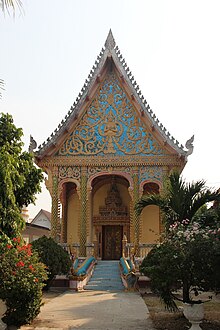
Dress respectfully (long trousers, sleeved shirts) when visiting temples and take your shoes off before entering temple buildings and private houses.
As with other Buddhist countries, showing the soles of your feet is very poor manners. Never touch any person on the head. Despite the prevalence of cheap alcohol, public drunkenness is considered disrespectful and a loss of face.
Things in Laos happen slowly and rarely as scheduled. Keep your cool, as Lao people will find humour in any tourist showing anger. They will remain calm, and venting your anger will make everybody involved lose face and is certainly not going to expedite things, particularly if dealing with government bureaucracy.
Swastikas are commonly seen at Buddhist temples. They are regarded as a sacred symbol, and have no connection to Nazism or anti-Semitism whatsoever.
Religion [ edit ]
Theravada Buddhism is the dominant religion in Laos, and it plays an important role in Laotian society. Laotian men are generally expected to spend a certain amount of time living as a monk at least once in their lifetime.
Try not to show any form of disrespect to Buddhism—inappropriately presenting Buddha or inappropriately behaving in a Buddhist temple is no laughing matter and will offend many.
Buddhist monks are accorded a great deal of respect in Laos, so behave accordingly when you come face to face with a monk.
When interacting with monks, keep the following rules in mind:
- Do not touch a monk if you are a woman. Monks are forbidden from touching women.
- Offer your seat to monks on public transport. Not doing so is considered extremely disrespectful.
- Do not offer a monk money; it is considered disrespectful. Monks are not allowed to accept, or even touch money. You should only offer food to a monk, and only in the morning, as monks are not allowed to eat after noon. If you want to donate money, go to a temple and put it into the donation box. "Monks" that accept money are fakes.
- Do not take a photograph of a monk unless they've permitted you.
- If you are a woman, do not pass anything directly to a monk. Put down what you want to give to a monk to let him pick it up, or give it to a man to pass to the monk on your behalf.
- Do not sit above a monk. Sit below them or kneel before them.
Politics [ edit ]
Do not criticise, insult, or show any kind of disrespect to the government ; this is punishable by up to five years in prison and a very hefty fine . Also, you should know that if the authorities feel you have "disgraced" the country, you will not be allowed to leave. Being a foreigner will not exempt you from this law; in 2012, a Swiss NGO director was banished from the country after she openly criticised the government.
Connect [ edit ]
Laos phone numbers have the format +856 20 654 321 where "856" is the country code for Laos. Numbers starting with 20 are mobile numbers, while all others are landlines.
- Laos Country Code is "+856".
- International Call Prefix is "00".
- Laos Call Prefix is "0".
- Laos articles here use the convention "+856 xx xxxxxx" except for emergency numbers which use local format with leading zero, "0xx xxxxxx"
Internet cafés can be found in larger towns, however access speeds are usually painfully slow and cafe staffs have less knowledge. The most reliable connections are in Vientiane , and usually cost around 100 kip/minute, with the cheapest offering 4,000 kip/hour. However, Internet security is not guaranteed and computer viruses are abundant.
In most cases, Wi-Fi is the best option. Most Western-style cafés offer free Wi-Fi-access for customers. Most accommodations, even budget places in Vientiane , offer free Wi-Fi.
Mobile phone usage in Laos has mushroomed, with four competing GSM operators. Two of these offer roaming services. Calling people on the same network is always cheaper than calling another network, but there is no clear market leader. Tourist and expats tend to prefer TPlus or M-phone (Laotel), while locals use any of the four networks.
- Lao Telecom has agreements with some 30 international networks. See roaming with Lao Telecom .
- TPlus (formerly known as Beeline) has agreements with over 100 International phone networks. Another popular choice, they also have low-cost international rate of 2,000 kip/minute to many countries, if you buy their SIM card and dial "177" instead of "+".
- ETL Mobile is known to have better coverage in rural and remote parts of Laos. However, in Laos "better" certainly does not mean "everywhere".
- Unitel is also available. It offers 5GB/30&day plans for 50,000 kip plus 30,000 kip for the SIM card (Mar 2020).
Local prepaid SIM cards can be purchased in various shops and stores, including at the airport in Vientiane (walk through to the Domestic Terminal to find a shop selling snacks and Unitel SIMs), without any paperwork.
- Tourist SIM: Since 2022, travellers can order a Laos tourist SIM card prior to their trip and get it deliver to their hotel or Airbnb in Vientiane using Internet in Laos online platform.
As another option, there is Thai coverage close to the Thai border (including a significant part of Vientiane), and Thai SIM cards and top-up cards can be bought in Laos; in addition, DeeDial International Call Cards are available. Thus, if you already have a Thai number, you can use the generally cheaper Thai network and/or avoid buying one more SIM. In addition, with the advent of cheap "neighboring country" roaming packages from the "big three" carriers in Thailand (AIS, dtac, and True all have 99 baht/2GB data roaming packages for Laos valid for varying periods) means that Thai SIMs are cheap to use even away from the Thai coverage area and can be helpful in other ways (for example, a True SIM will roam on Unitel, TPlus, and Lao Telecom, while a dtac SIM will roam on all four Lao networks, which given the lower roaming pricing these days, can be worth the premium over a local SIM limited to one network).
Postal service in Laos is slow, but generally reliable. Other paid options such as FedEx, DHL, and EMS exist in various locations. Though these services are much more expensive, they are more reliable.
- Has custom banner
- Has map markers
- Has VisaRestriction box
- Has VisaRestriction box with no date
- Do listing with no coordinates
- Has caution box
- Has caution box with no date
- Has warning box
- Has warning box with no date
- Outline countries
- Outline articles
- Country articles
- Has Geo parameter
- Southeast Asia
- All destination articles
- Pages with maps
Navigation menu
Nomadic Matt's Travel Site
Travel Better, Cheaper, Longer
Vientiane Travel Guide
Last Updated: September 2, 2023
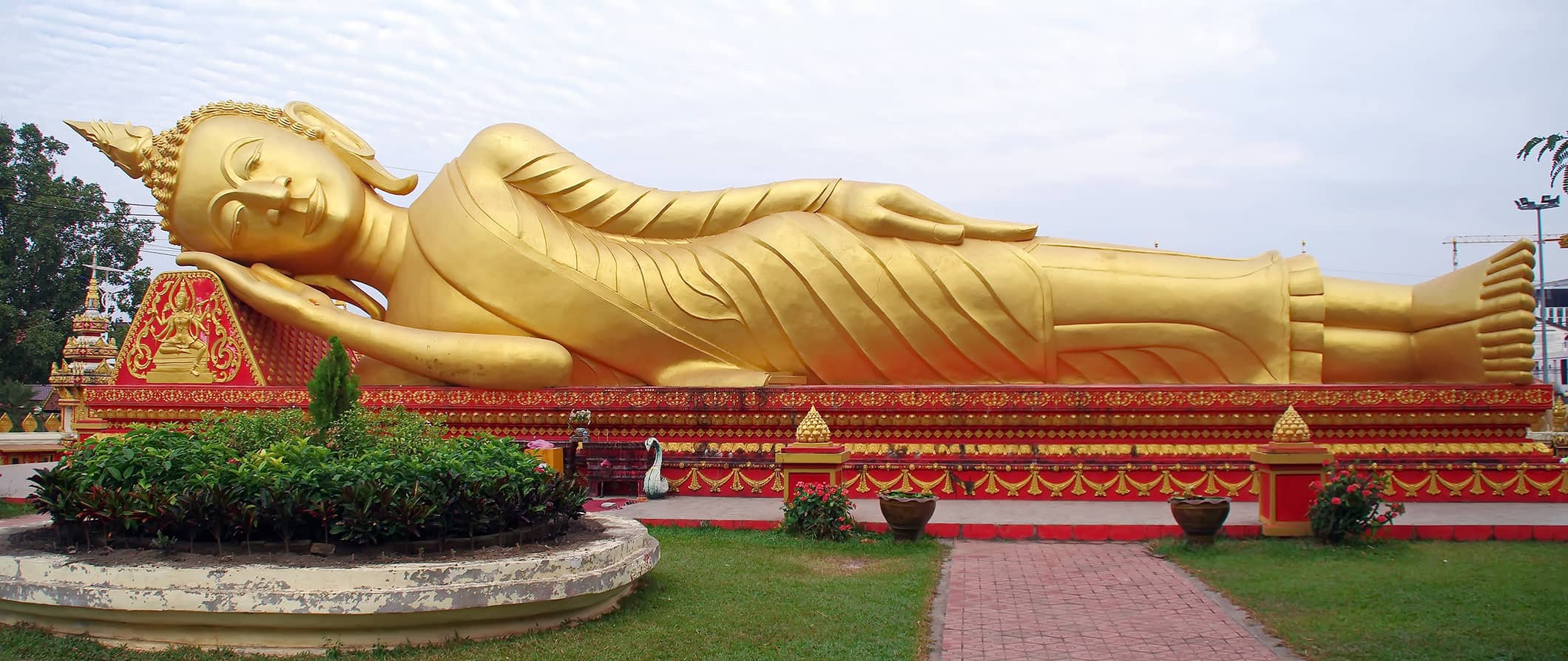
Vientiane, the capital of Laos , is home to around 1 million people. The name of the city is French and derived from “Viangchan” (“walled city of sandalwood”). The city was the economic hub under French rule, which started in 1893 and lasted until 1953.
Nowadays, the capital is a hub for café culture, cheap spas, golden temples, and diverse riverside markets. Much of the city’s historical center has kept its colorful colonial architecture intact too, making it a nice area to stroll around as you explore.
A common stopover spot between Vietnam and Thailand , there’s a busy nightlife scene and some good day trips beyond the city limits, including the popular Buddha Park with its more than 200 giant Buddha statues.
Wander the wide boulevards, take in the crumbling mansions, chill out in Chao Anouvong Park, and enjoy the flavorful local cuisine (there are a ton of delicious French bakeries here as well).
There’s enough here to keep you busy for a couple of days, though you likely won’t need more than 3 days here.
This Vientiane travel guide can help you plan your visit, save money, and help you make the most of your trip.
Table of Contents
- Things to See and Do
- Typical Costs
- Suggested Budget
- Money-Saving Tips
- Where to Stay
- How to Get Around
- How to Stay Safe
- Best Places to Book Your Trip
- Related Blogs on Vientiane
Top 5 Things to See and Do in Vientiane
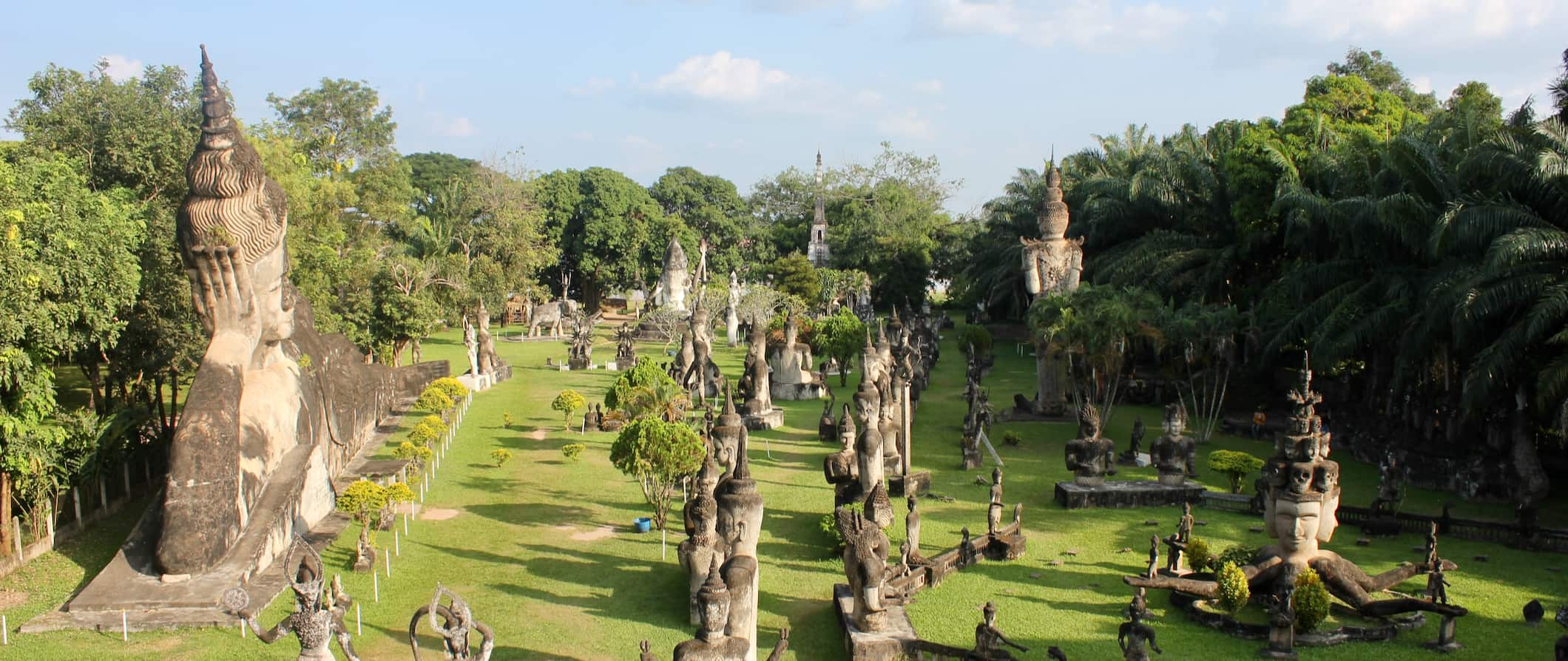
1. Take a cooking class
Street food in Laos is delicious. Take a cooking class to learn how to make traditional dishes like laap (salad with minced meat and spices), orh (spicy stew), and mok (steamed fish in banana leaf). Most tours begin with a market tour where you select ingredients for your experience! I recommend a class with Madam Phasouk. She’s an amazing cook and her private classes are 150,000 LAK, which includes cooking 3-4 dishes.
2. Explore Buddha Park
Buddha Park is a sculpture park just 25 kilometers (15 miles) outside of Vientiane. There are around 200 Hindu and Buddhist statues here, all of which appear to be centuries old (they’re not; they were made in the 20th century out of concrete). While not “historic” it’s still worth visiting as there are all kinds of unconventional designs, including a 3-meter-tall (9.8-foot) demon head that you enter through and staircases from heaven and hell that you can climb. Admission is 15,000 LAK per person.
3. Admire the Great Stupa
The Great Stupa (Pha That Luang) is a 44-meter-tall (148-foot) gold-covered stupa and is the most important monument in the country. Built by King Setthathirat in 1566, its exterior looks like a fortress with high walls. Inside, the walls are covered in Buddhist, floral, and animal imagery. It was heavily damaged by invading Thai forces in the 1820s and was eventually restored by the French after they annexed the region. Admission is 10,000 LAK.
4. Chat with a monk
Once a month, monks gather at the Sangha College (Wat Onteu) to chat with tourists. You can ask them all about their practice and daily life, and it gives them a chance to practice their English in turn. It’s a useful way to learn a lot about Lao culture. Ask your hostel/hotel staff for details and dates.
5. See the Victory Gate (Patuxai)
Vientiane’s Victory Gate is also known as the city’s Arc de Triomphe. The monument was built between 1957-1968 to honor the memory of Lao soldiers who died in World War II and the war of independence in 1949 (which was fought against the French). It was intentionally built a little higher than the original in Paris, simply to spite the French. The concrete for the monument was donated by the USA, however, it was supposed to be for a new airport and not this monument. For 3,000 LAK, you can climb up and admire the view of Vientiane.
Other Things to See and Do in Vientiane
1. explore by bike.
Vientiane is easy to explore on a bike and you can also get out of the city to cycle around rural villages, temples, and schoolyards along the Mekong River while taking in the picturesque landscape as you go. Be sure to stop at Tad Moon Waterfall (it’s gorgeous). You can rent bikes for as little as 10,000 LAK per day (though better quality bikes might cost a little more).
2. Visit the COPE Visitor Centre
During the Vietnam War, the American military dropped more than two million tons of explosives on Laos. Even today, many rural citizens still lose their limbs or lives by coming across unexploded bombs. COPE (Cooperative Orthotic & Prosthetic Enterprise) was formed to aid with the recovery for these victims by providing prosthetics and other medical services. The COPE Visitor Centre is a jarring experience where visitors can learn more about this ongoing tragedy and the work being done. It’s sobering but educational. Admission is free.
3. Hang out in Chao Anouvong Park
Chao Anouvong Park is right in the heart of Vientiane. There’s lots of green space, and the locals come here to walk, hang out, and play sports. In the evening, there’s a night market doling out food and selling crafts and clothes. Come during the day with a picnic and a book and take in the local pace of life, or bring an appetite and eat your way around the night market.
4. Tour the Lao National Museum
This museum is packed full of Laotian history. There are exhibits on the country’s early history through to the modern era, including exhibits on the country’s struggle for independence. The main exhibit focuses on the Lao Revolution in the 1970s. There are signs in English though many are only in French. Admission is 10,000 LAK. (Currently closed as it is in the process of moving to a new building).
5. See the Presidential Palace
You can’t go inside the Presidential Palace as it’s currently used for the president and other government officials, but you can certainly admire the building from the outside. It’s a stately piece of French Beaux-Arts architecture with iron gates decorated with gold, large balconies, and several Roman-like colonnades along its exterior. (Laos is a one-party Marxism–Leninism communist state so the President isn’t actually the most powerful person in the country — the party leader is).
6. Attend the Lao Boat Racing Festival
If you end up being in Vientiane during October, you’ll be able to check out the Lao Boat Racing Festival (which takes place on the 15th day of the 11th lunar month, usually September/October). A lot of Vientiane’s neighboring villages also participate in the festivities, and it’s easy to get swept up in the excitement. Teams of men and women race throughout the festival in dragon boats, while spectators line the riverbanks singing and playing music, and the streets are overtaken with food stalls. Be sure to book early if visiting during this time as the city fills up!
Vientiane Travel Costs
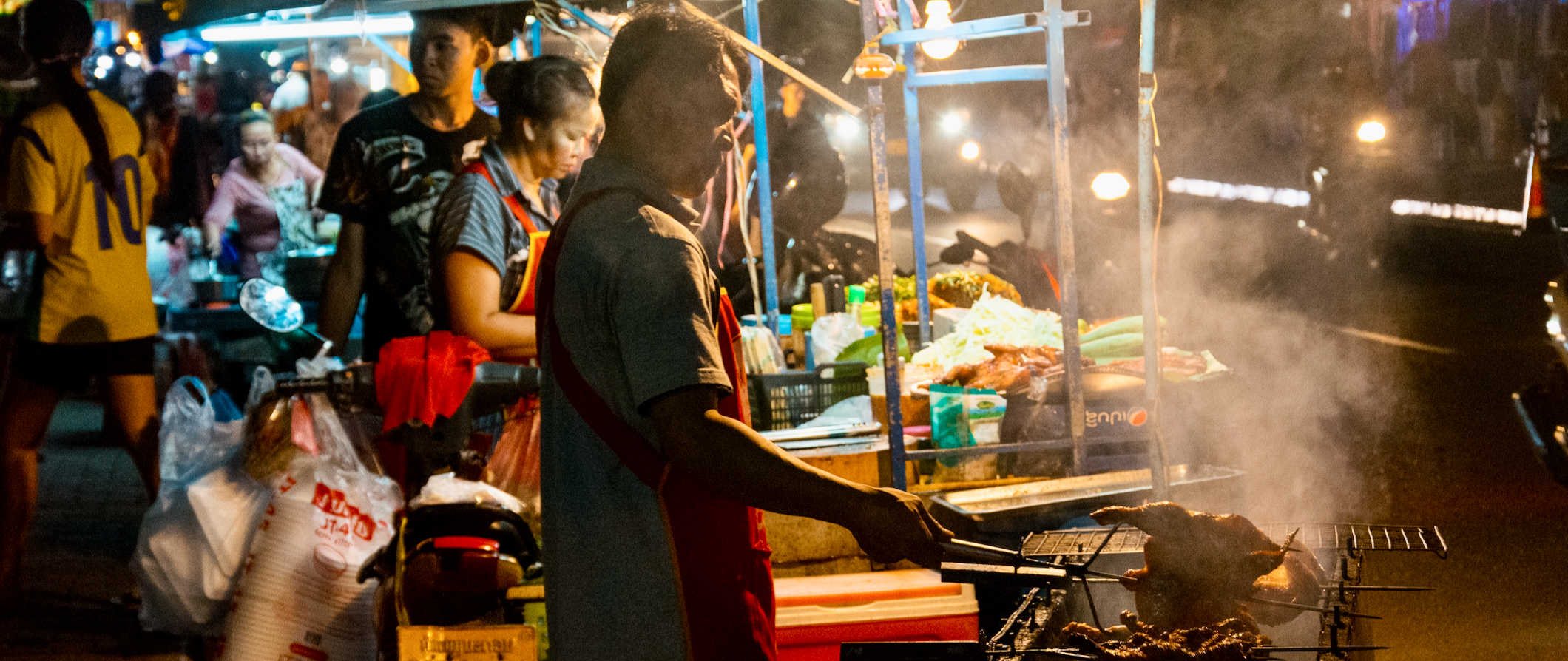
Hostel prices – Beds in a large hostel dorm (10-20 people) start from 85,000 LAK per night. For a hostel dorm with 6-8 beds, expect to spend around 110,000 LAK. Private rooms cost around 315,000 LAK. Free Wi-Fi is standard and most hostels include free breakfast.
Budget hotel prices – Most two-star budget hotels cost around 300,000 LAK per night. While the amenities are usually basic, some budget hotels have pools or include breakfast. For a more comfortable three-star hotel, expect to pay closer to 500,000 LAK per night.
Airbnb is also available here, with private rooms starting at 150,000 LAK (though they average double that price). For an entire home or apartment, expect to pay at least 300,000 LAK. Again, prices usually average double that so be sure to book early to find the best deals.
Food – Laos eats the most sticky rice per capita in the entire world. Other prominent staples include green papaya salad and laap (also known as larb, it’s a minced-meat salad that is the national dish, usually featuring fermented fish). Grilled meats, such as chicken, pork, and duck are also very popular, as is feu , the local version of pho.
Street food in Vientiane generally costs under 20,000 LAK per dish for grilled meats and bowls of noodle soup. Lane Xang — the city’s main boulevard running from the Presidential Palace towards Pha That Luang — is the best place in the city to find tons of street food.
Meals at restaurants cost around 47,000 LAK for dishes like sticky rice, grilled fish, and salads. There are lots of places along the river where you can eat cheap.
Western food usually costs double the price of local cuisine, so avoid it if you’re on a budget. If you want to splash out for a three-course meal with drinks, expect to pay at least 200,000 LAK.
Beer costs around 17,000 LAK while a latte/cappuccino is around 34,000 LAK. Bottled water is 8,000 LAK.
While groceries here are cheap, street food is even cheaper. And since most hostels don’t have kitchens, eating out is the cheaper option here. If you do want to shop, expect to spend around 250,000-300,000 LAK per week on groceries.
Backpacking Vientiane Suggested Budgets
On a backpacker budget of 290,000 LAK per day, you can stay in a hostel dorm, eat street food for your meals, enjoy the occasional drink, rent a bicycle to get around, and do a few cheap activities chatting with the monks and visiting Buddha Park. If you plan on drinking more, add 20,000-30,000 LAK to your daily budget.
With a mid-range budget of 650,000 LAK per day, you can stay in a private Airbnb or private hostel room, eat out at some restaurants, drink more, take the occasional taxi to get around, and do more tours and activities, such as a cooking class.
On a “luxury” budget of 1,825,000 LAK per day or more, you can stay in a hotel, eat at fancy restaurants, drink as much as you want, rent a bike and take taxis, and do whatever tours and activities you want. The sky is the limit!
You can use the chart below to get some idea of how much you need to budget daily, depending on your travel style. Keep in mind these are daily averages — some days you’ll spend more, some days you’ll spend less (you might spend less every day). We just want to give you a general idea of how to make your budget. Prices are in LAK.
Vientiane Travel Guide: Money-Saving Tips
Vientiane isn’t going to break your bank. Laos and its capital are fairly cheap and you’ll be hard-pressed to spend a ton of money here if you’re staying in a hostel and eating street food. If you’re looking to lower your costs though, here are some ways to save money in Vientiane:
- Stick to local transportation – Stick to public transportation if you need to get around. If you do need to take a tuk-tuk or taxi, ask your hotel/hostel staff what you should expect to pay. This will ensure you don’t get ripped off.
- Avoid western food – Western food is always more expensive than local dishes, and that difference adds up. Save your budget and eat what the locals eat!
- Bring a reusable water bottle – The tap water here isn’t safe to drink. To save money and reduce your plastic use, bring a reusable water bottle with a filter. LifeStraw make a reusable bottle with a built-in filter so you can be sure your water is always safe and clean.
Where to Stay in Vientiane
Vientiane has a few decent hostels that are clean, social, and cheap. Here are my suggested places to stay:
- Dream Home Hostel
- Sailomyen Cafe & Hostel
- Petit Espace
How to Get Around Vientiane
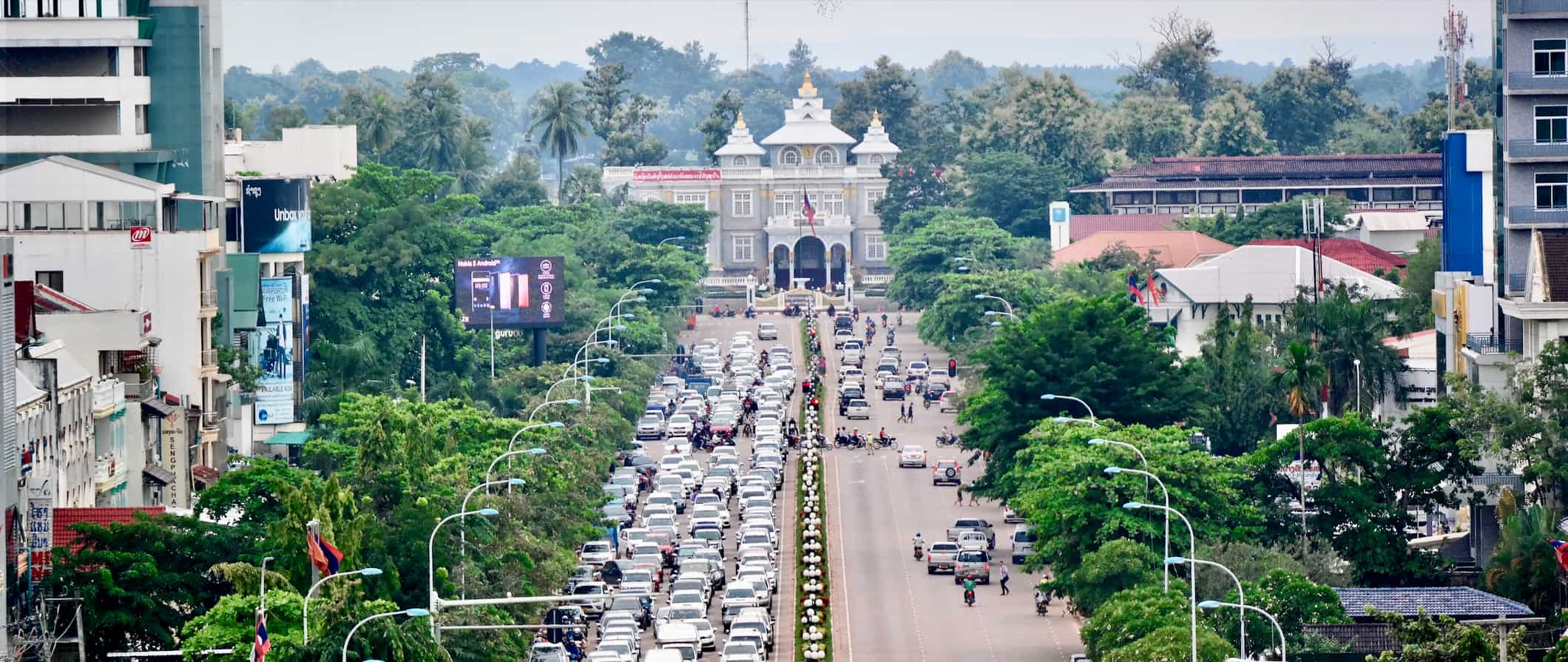
Public transportation – Vientiane has a public city bus system, but it mostly services the outer suburbs rather than the city center. It doesn’t have AC but it goes to the Friendship Bridge and Buddha Park (6,000 LAK). A three-day bus pass can be bought at the airport for around 45,000 LAK.
Bike rental – A bicycle rental is an excellent way to get around Vientiane. Rentals start around 10,000 LAK per day. If your guesthouse or hostel doesn’t rent bicycles, there are plenty of shops around town. Expect to pay 15,000-30,000 LAK for a better-quality bike.
Tuk-Tuks and Jumbos – Tuk-tuks (and their larger cousins, jumbos) are an easy and affordable way to get around town, with most short trips costing 10,000-20,000 LAK. Tuk-tuks by the river charge double so avoid taking a tuk-tuk from there.
Many tuk-tuks have published rates. However, they are intentionally inflated. Ask your hotel/hostel staff for accurate rates before you head out.
Taxi – If you come across an unmetered taxi, make sure you negotiate before getting in. Try to aim for 8,000 LAK per kilometer. You can hire a private taxi for a full day (within the town) for around 300,000-500,000 LAK.
When to Go to Vientiane
Vientiane has a tropical climate, with average daily temperatures ranging between 24-37°C (75-98°F). November to April is the best time to visit Vientiane. This is when the area’s weather is consistently warm and dry, and if you’re planning on doing lots of sightseeing, you’ll want this kind of weather (December-February are the driest months on average). January-February is the busiest time to visit so expect more people and higher prices.
March-May tends to be the hottest time of year, with temperatures soaring as high as 40°C (104°F). Humidity is high as well. Make sure you wear a hat and have lots of water when you’re out and about.
The rainy season starts around May-June and lasts until the end of October. Although there’s a lot of rain, it usually comes in short bursts, leaving the rest of the day warm and sunny. Coming here during this time means you won’t have to deal with a lot of other travelers. Prices are a little lower too. Dengue fever is a risk during this time, however.
How to Stay Safe in Vientiane
Vientiane is a safe place to backpack and travel. The city has very little violent crime, though petty theft can be a concern. Keep your valuables secure and out of reach at all times just to be safe. Be especially mindful of bag snatchers.
As with elsewhere in Southeast Asia, it’s not uncommon for people to try to rip you off because they assume you have lots of money. Always double-check prices and the change you’re handed back after paying. When in doubt, ask your hotel/hostel staff how much something should cost so you don’t get ripped off.
You can read about common travel scams to avoid here .
When people get into trouble here, it’s mostly because they’re tangled up with drugs or the sex industry. Laos is strict about punishment when it comes to these offenses so avoid them at all costs.
Solo female travelers should generally feel safe here. However, the standard precautions apply (never leave your drink unattended at the bar, never walk home alone intoxicated, etc.). For specific tips, check out one of the many solo female travel blogs on the web that go into more detail.
While malaria can be an issue here, dengue is much more common. Always wear bug spray with DEET when you go out during the rainy season.
There are a fair amount of dogs here — stray and owned — but always be careful around them as they can be more vicious than you’re used to.
If you experience an emergency, dial 191 to contact the police.
Always trust your gut instinct. Make copies of your personal documents, including your passport and ID.
The most important piece of safety advice I can offer is to purchase good travel insurance. Travel insurance will protect you against illness, injury, theft, and cancellations. It’s comprehensive protection in case anything goes wrong. I never go on a trip without it as I’ve had to use it many times in the past. You can use the widget below to find the policy right for you:
Vientiane Travel Guide: The Best Booking Resources
These are my favorite companies to use when I travel. They consistently have the best deals, offer world-class customer service and great value, and overall, are better than their competitors. They are the companies I use the most and are always the starting point in my search for travel deals.
- Skyscanner – Skyscanner is my favorite flight search engine. They search small websites and budget airlines that larger search sites tend to miss. They are hands down the number one place to start.
- Hostelworld – This is the best hostel accommodation site out there with the largest inventory, best search interface, and widest availability.
- Agoda – Other than Hostelworld, Agoda is the best hotel accommodation site for Asia.
- Booking.com – The best all around booking site that constantly provides the cheapest and lowest rates. They have the widest selection of budget accommodation. In all my tests, they’ve always had the cheapest rates out of all the booking websites.
- Get Your Guide – Get Your Guide is a huge online marketplace for tours and excursions. They have tons of tour options available in cities all around the world, including everything from cooking classes, walking tours, street art lessons, and more!
- SafetyWing – Safety Wing offers convenient and affordable plans tailored to digital nomads and long-term travelers. They have cheap monthly plans, great customer service, and an easy-to-use claims process that makes it perfect for those on the road.
- LifeStraw – My go-to company for reusable water bottles with built-in filters so you can ensure your drinking water is always clean and safe.
- Unbound Merino – They make lightweight, durable, easy-to-clean travel clothing.
Vientiane Travel Guide: Related Articles
Want more info? Check out all the articles I’ve written on Laos travel and continue planning your trip:

Is Southeast Asia Safe for Travelers?
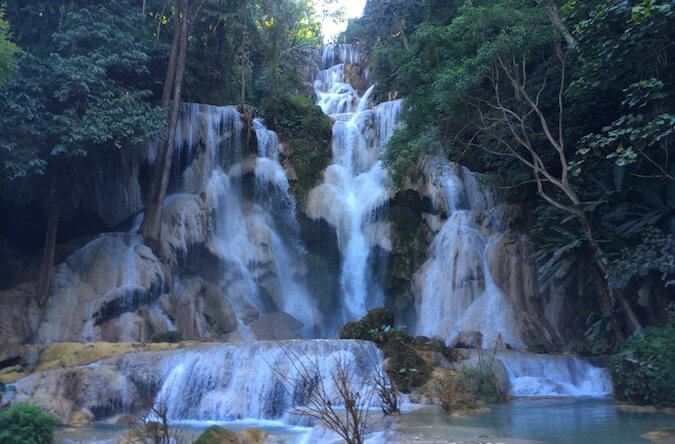
The Secret Pool of Kuang Si Waterfall
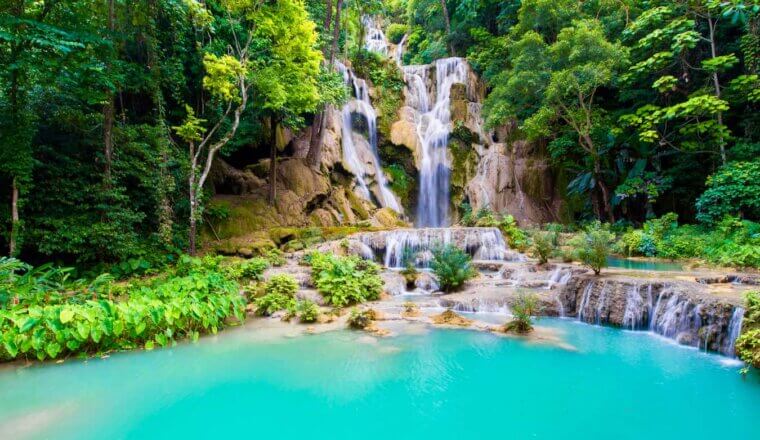
The Cost of Traveling Laos
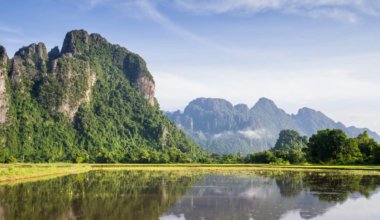
Vang Vieng: A Hedonistic Backpacker Town Reborn
Get my best stuff sent straight to you, pin it on pinterest.
- Where To Stay
- Transportation
- Booking Resources
- Related Blogs
- Travel Guides

- Customized Tour

Laos Travel Guide Post-Covid
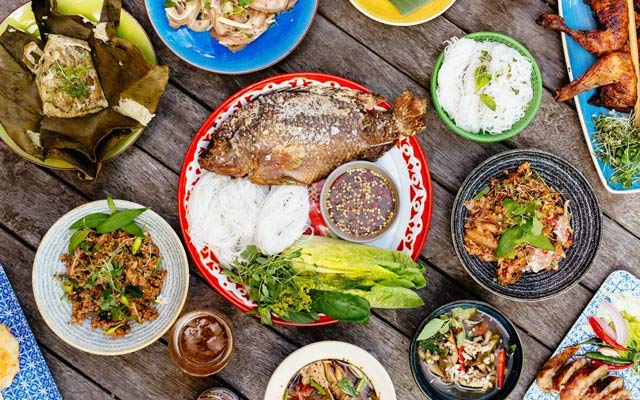
Laotian Food – 15 Famous Dishes You Must Try When Travel in Laos
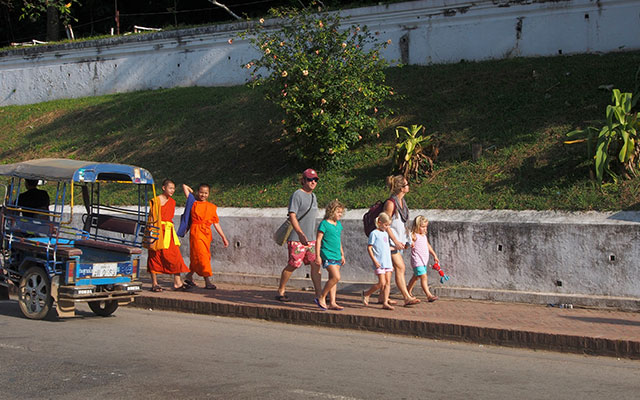
Laos with Kids: 10 Things to Do on Family Vacation
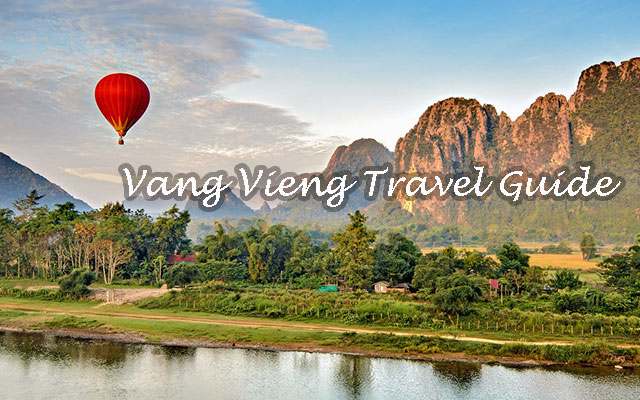
Vang Vieng Travel Guide
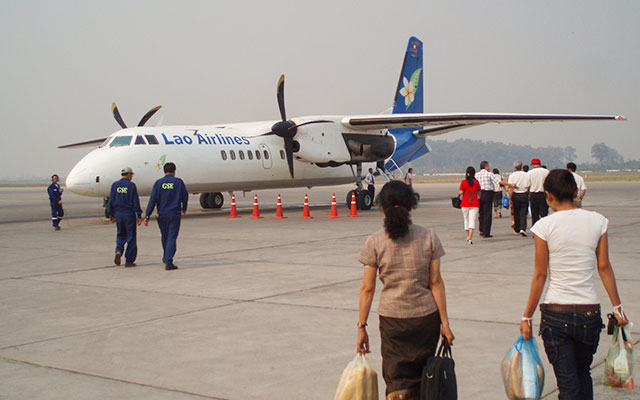
Lao Airlines

Laos Weather

Best Time to Visit Laos
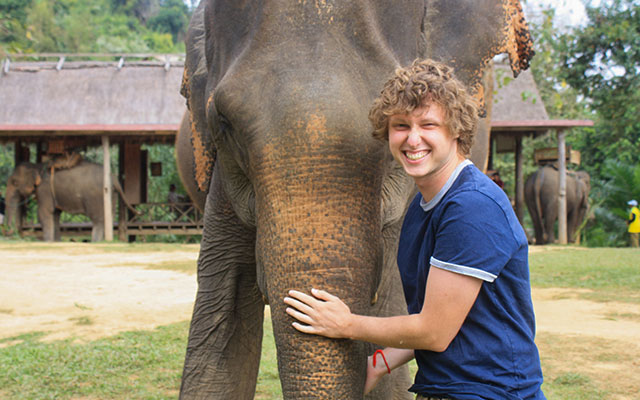
The 14 Best Laos Day Tours You Should Know Before Traveling
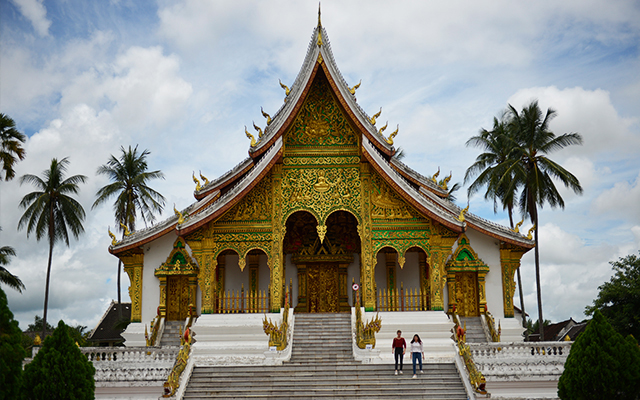
How to Travel from Siem Reap to Luang Prabang?
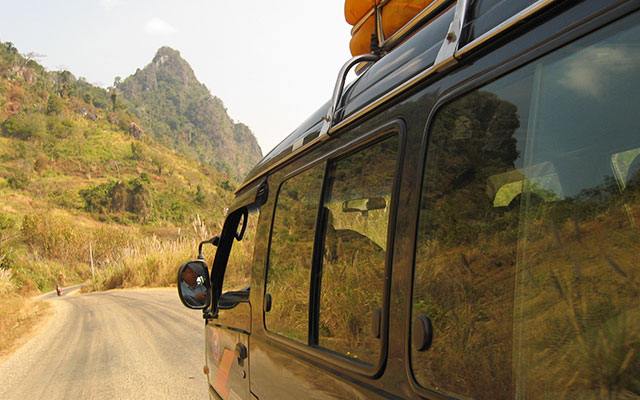
How to Travel from Luang Prabang to Vang Vieng?
Request a free quote, thank you we have received your travel request. you will receive an email shortly. please check your email and verify the information. your request will be processed after your confirmation..
You have chosen a tour duration longer than 20 days. Please specify the exact number of days you want to travel in the message box below, so that we can have enough information and make a program for you. Thank you for your cooperation.
You have selected a number of travellers greater than 20. Please let us know the exact number of people in your group in the message box below so that we can quote you accurately. Thank you for your cooperation.
You have selected a number of travellers and duration greater than 20. Please let us know the exact number of people in your group and the exact number of days in the message box below so that we can quote you accurately. Thank you for your cooperation.
- Travel Blog
- Travel Planning
- Travel News
Our Recommendations
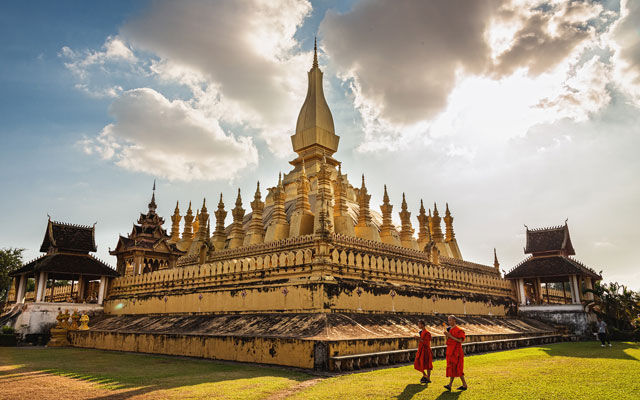
The Best Things To Do & See in Laos in 2024
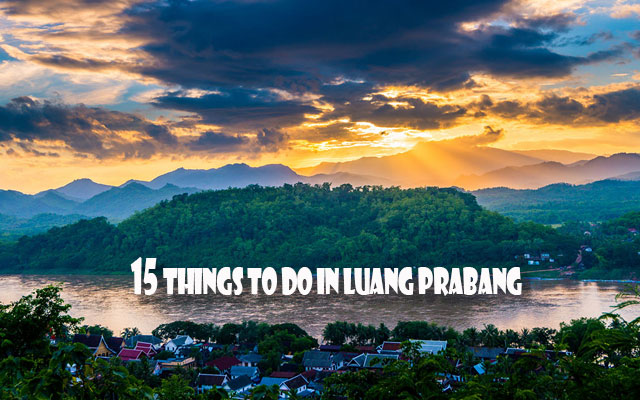
Things to do in Luang Prabang
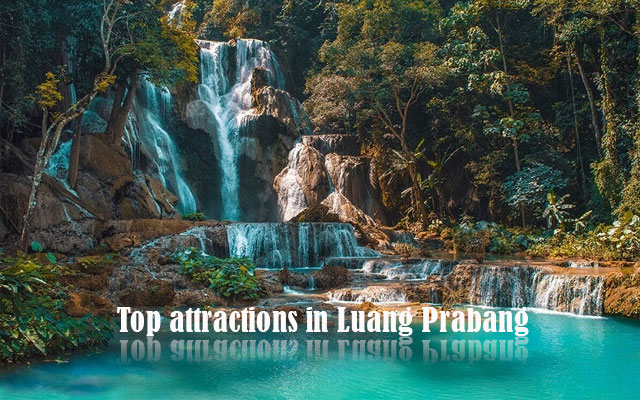
15 Top-Rated Tourist Attractions in Luang Prabang, Laos
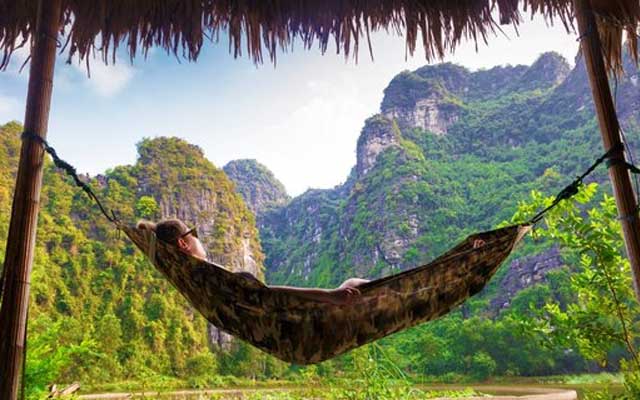
5 best Laos private tours you should know
You may also like
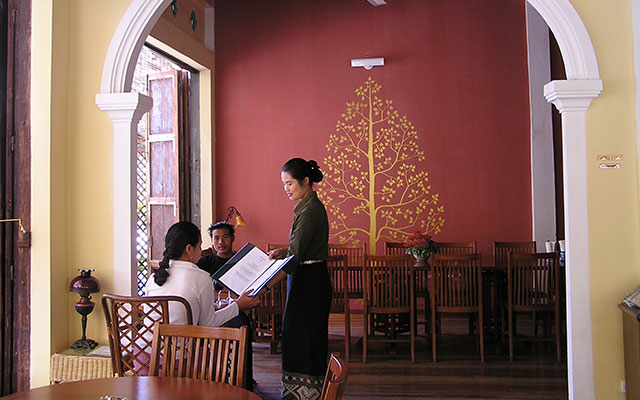
Best restaurants in Luang Prabang, Laos
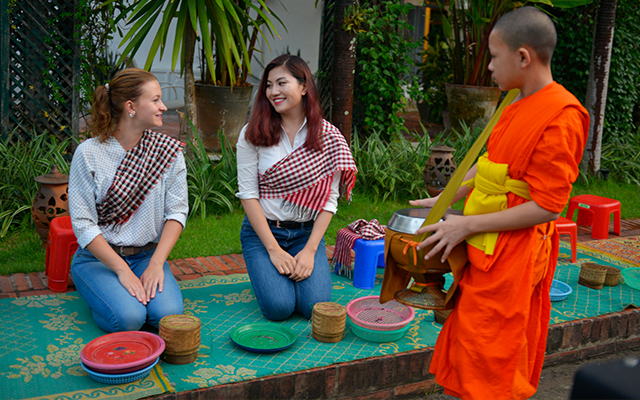
Laos – All things about Laos Country
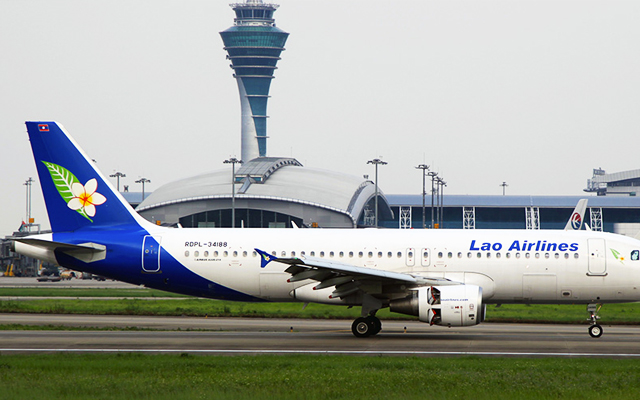
Airports in Laos

Best Hotels in Vientiane
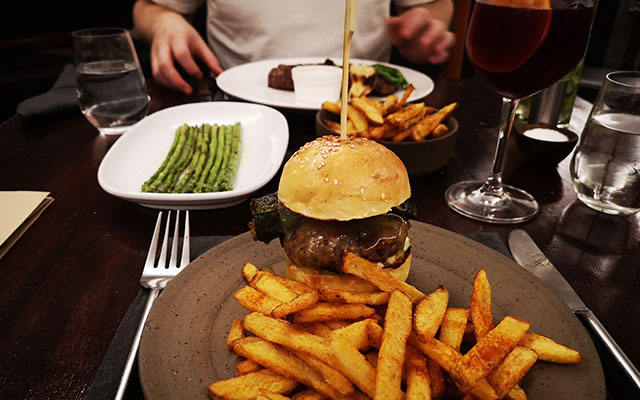
15 Top Restaurants In Vientiane, Laos
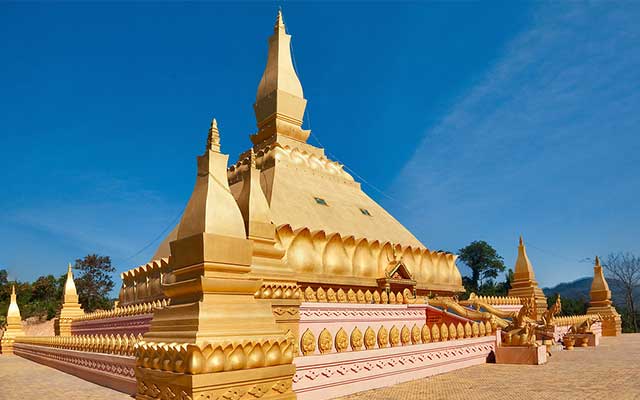
Things to do in Luang Namtha
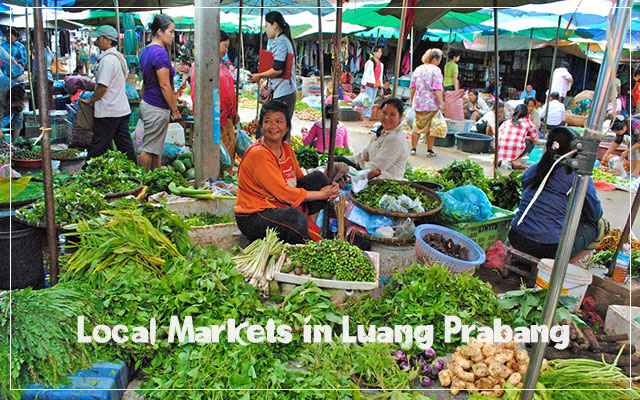
Local Markets in Luang Prabang

- Destinations
Laos Travel Guide
Laos is Southeast Asia’s only landlocked country, yet, paradoxically, life revolves around water. Running the length of the mainly mountainous country is the mighty Mekong River, which floods rice fields, creates vital fish habitat, and serves as the main highway and water source. Villages clustered along the river regularly host backpackers drawn to the country’s exquisite French colonial architecture and stunning palaces and temples, but, the rugged terrain keeps Laos blissfully off the typical tourist trail.
- Terms of Use
- Privacy Policy
- Your US State Privacy Rights
- Children's Online Privacy Policy
- Interest-Based Ads
- About Nielsen Measurement
- Do Not Sell or Share My Personal Information
- Nat Geo Home
- Attend a Live Event
- Book a Trip
- Inspire Your Kids
- Shop Nat Geo
- Visit the D.C. Museum
- Learn About Our Impact
- Support Our Mission
- Advertise With Us
- Customer Service
- Renew Subscription
- Manage Your Subscription
- Work at Nat Geo
- Sign Up for Our Newsletters
- Contribute to Protect the Planet
Copyright © 1996-2015 National Geographic Society Copyright © 2015-2024 National Geographic Partners, LLC. All rights reserved

IMAGES
VIDEO
COMMENTS
Costs of Traveling in Laos. Travel on a budget in Laos, from $180 − $270 USD weekly per person, mid-range $300 − $950 USD, and high-end from $930 − $1640 USD. However, costs depend on factors like accommodation, transportation, and activities. We did not include flights. Check flight prices here.
Laos is a landlocked country steeped in nature, food, history, and Buddhism. The country is wrapped in a mountainous landscape, making it one of the most beautiful places in all of Southeast Asia. While it lacks the beautiful beaches of neighboring countries, adventure travel is big here. You can go zip-lining, kayaking, hiking, and cave tubing ...
Laos reopens and prepares for international tourists with few restrictions. May 12, 2022 • 2 min read. It's one of Southeast Asia's most isolated countries but after more than two years of border closures, Laos has opened up to all international tourists…. in partnership with getyourguide.
The 30-day tourist visa costs between $30 and $42, depending on where you're from. If you don't have a passport sized photo with you, it will cost you $1-$2 extra. The visa on arrival process is pretty straightforward and usually doesn't take more than 10 minutes. Safety: Overall, Laos is a very safe place to visit.
A Travel Guide to Laos with ️ Travel Itineraries, ️ Top places to visit in 2024, ️ Safety, and more! Laos. Travel Guide. Saffron-robed monks at outstanding temples, movie-like scenery, and silky blue waterfalls - Laos is made for adventurers. Itineraries; Best places; Map;
Rough Guides® is a trademark owned by Apa Group with its headquarters at 7 Bell Yard London WC2A 2JR, United Kingdom. Plan your visit to Laos: find out where to go and what to do in Laos with Rough Guides. Read about itineraries, activities, places to stay and travel essentials and get inspiration from the blog in the best guide to Laos.
Hop on a long-tail boat to navigate the cave's serene river, marvel at its massive chambers, and discover hidden stalagmites and stalactites. Access Tham Kong Lo from the town of Ban Kong Lo, and expect to pay around $15-20 for a boat tour. Scenes from the streets of Luang Prabang. 13.
Check out this Laos travel guide for details on the best attractions, places to visit in Laos, and ways to get around. Tucked snugly between Thailand and Vietnam, Laos is a landlocked country that promises an uncrowded haven.
Fast Facts about Laos. Laotian power voltage is 220 V 50 Hz; Power sockets A, B & C. Laotian currency is the Laotian Kip (LAK) and is around 8,000 LAK for 1 USD. Visas upon arrival are for 30 days for most nationalities and they can be extended a max of two times for up to 30 days each time.
Laos is a very budget friendly travel destination, with hostels available from $5 USD and private hotels from $15. Meals are also cheap, costing about $1 to $5 depending on location. Transportation in Laos is generally by taxi or motorbike, but sadly the transportation apps like Grab and Uber don't work here.
I. Laos travel facts General information. Country name: Lao People's Democratic Republic Government: Unitary Marxist-Leninist one-party socialist republic Head of State: Mr. Bounnhang Vorachith - General Secretary of the Lao People's Revolutionary Party & President of Laos since 2016 Head of Government: Mr. Thongloun Sisoulith - Prime Minister of Laos since 2016
The Bolaven Loop (or Pakse Loop) in the south is one of the best known. I wrote about the experience and highlights here. It takes 2 days for the "small loop" and 3 to 4 days for the big loop. The Thakek Loop starting in the central Laos city of Thakek is another popular ride, taking 3 to 5 days.
Travel Guide on Best-Time to Visit, Must-See Places, Must-Do Things, Must-Try Food, Local Language for Travellers, Local Cultures and Safety. Follow Our Instagram; ... Laos, often referred to as the "Land of a Million Elephants," is a captivating and serene destination nestled in Southeast Asia. Known for its lush landscapes, ancient ...
Last Updated: September 2, 2023. Luang Prabang is a small but vibrant town in the heart of mountainous Northern Laos. Luang Prabang is located at the confluence of the Mekong and Nam Khan rivers and is one of the most popular destinations in Laos as most travelers use it as the first or last stop in the country before traveling to/from Thailand.
Annual Festivals in Laos. Visiting the Mysterious Plain of Jars in Laos. Vang Vieng Tubing - Less Drinking, More Fun. The Complete Guide to Bun Pi Mai, New Year in Laos. Guide to Luang Prabang, Laos. Mountainous, landlocked Laos is as beloved for its natural beauty as its cultural heritage. Drive through the winding countryside, relax at cafes ...
An independent travel guide to Laos. Landlocked Laos is one of Asia's most enchanting destinations. Stunning natural beauty—think mist-shrouded mountain peaks flanked by jungle-clad valleys—combine with a fascinating Buddhist culture to make Laos a superb destination for backpackers and independent travellers, while luxury tourists are ...
Get information on Laos Travel Guide - Expert Picks for your Vacation hotels, restaurants, entertainment, shopping, sightseeing, and activities. Read the Fodor's reviews, or post your own.
Laos (ເມືອງລາວ mư̄ang lāo or ປະເທດລາວ pa thēt lāo) is the only landlocked nation in Southeast Asia.Formerly a French colony, it is one of the few remaining communist states in the world, espousing Marxism-Leninism as its main political ideology.. The term "communist state" may have negative connotations in some parts of the world, but Laotian official ...
Vientiane Travel Costs. Hostel prices - Beds in a large hostel dorm (10-20 people) start from 85,000 LAK per night. For a hostel dorm with 6-8 beds, expect to spend around 110,000 LAK. Private rooms cost around 315,000 LAK. Free Wi-Fi is standard and most hostels include free breakfast.
Laos Travel Guide Post-Covid Here you'll find news of Laos travel guide post-Covid 19. The country officially dropped Covid-19 entry restrictions for fully vaccinated tourists from Monday, 9 May 2022. Unvaccinated visitors must produce a Rapid Antigen Test issued within 48 hours of leaving their origin country.
Laos Travel Guide. Laos is Southeast Asia's only landlocked country, yet, paradoxically, life revolves around water. Running the length of the mainly mountainous country is the mighty Mekong ...
The new Lao-China Railway has made traveling through Laos much quicker than before. In just one hour, you can depart Luang Prabang and reach the little mountain town of Vang Vieng.
heroiisa on April 25, 2024: "BUDGET TRAVEL GUIDE TO VANG VIENG, LAOS ️ Vang Vieng is one of the best places to visit when you are young & on a budget! All p...".